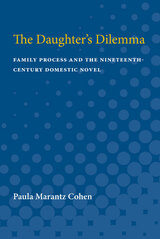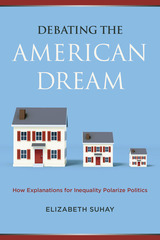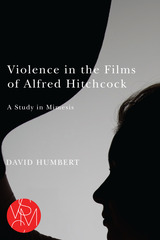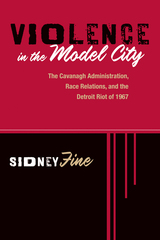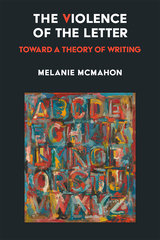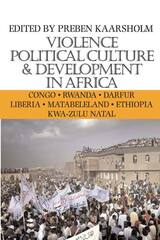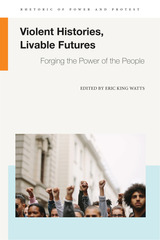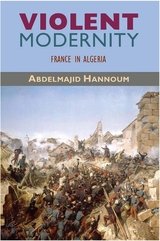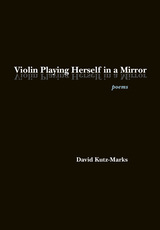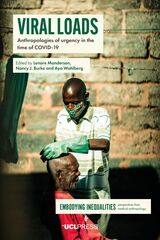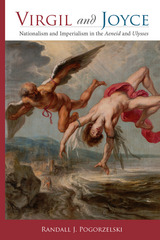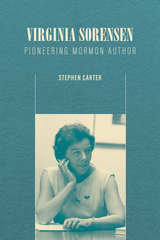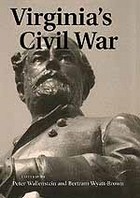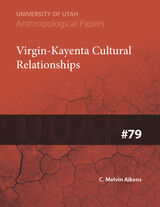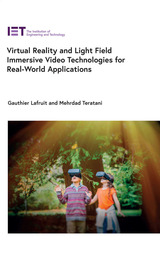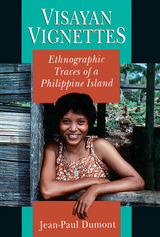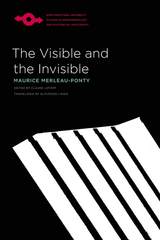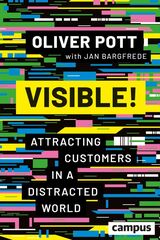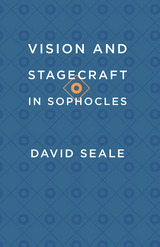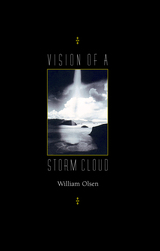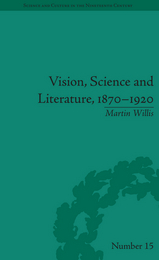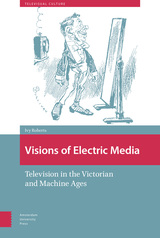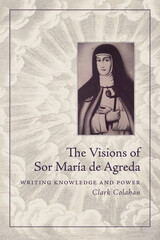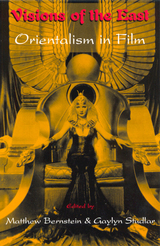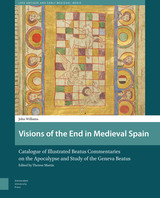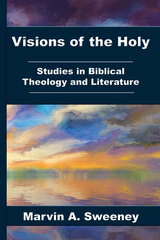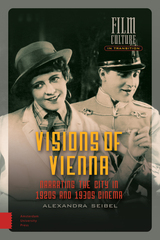 Violence in Modern Philosophy
Piotr Hoffman
University of Chicago Press, 1989 Following on the arguments adumbrated in his previous works, Piotr Hoffman here argues that the notion of and concern with violence are not limited to political philosophy but in fact form the essential component of philosophy in general. The acute awareness of the ever-present possibility of violence, Hoffman claims, filters into and informs ontology and epistemology in ways that require careful analysis.
In his previous book, Doubt, Time, Violence, Hoffman explored the theme of violence in relation to Descartes' problematic of doubt and Heidegger's work on temporality. The pivotal notion deriving from that investigation is the notion of the other as the ultimate limit of one's powers. In effect, Hoffman argues, our practical mastery of the natural environment still leaves intact the limitation of human agents by each other. In a violent environment, the other emerges as an insurmountable obstacle to one's aims and purposes or as an inescapable danger which one is powerless to hold at bay. The other is thus the focus of an ultimate resistance to one's powers.
The special status of the other, as Hoffman articulates it, is at the root of several key notions around which modern philosophy has built its problematic. Arguing here that when the theme of violence is taken into account many conceptual tensions and puzzles receive satisfying solutions, Hoffman traces the theme through the issue of things versus properties; through Kant's treatment of causality, necessity, and freedom in the Critique of Pure Reason; and through the early parts of Hegel's Logic. The result is a complete reorientation and reinterpretation of these important texts.
Violence in Modern Philosophy offers patient and careful textual clarification in light of Hoffman's central thesis regarding the other as ultimate limit. With a high level of originality, he shows that the theme of violence is the hidden impulse behind much of modern philosophy. Hoffman's unique stress on the constitutive importance of violence also offers a challenge to the dominant "compatibilist" tradition in moral and political theory. Of great interest to all philosophers, this work will also provide fresh insights to anthropologists and all those in the social sciences and humanities who occupy themselves with the general theory of culture.
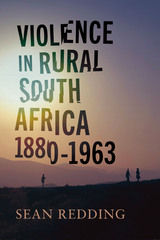 Violence in Rural South Africa, 1880–1963
Sean Redding
University of Wisconsin Press, 2023 Violence was endemic to rural South African society from the late nineteenth century to the mid-twentieth century. But acts of violence were not inherent in African culture; rather, violence resulted from the ways in which Africans navigated the hazardous social and political landscape imposed by white rule. Focusing on the Eastern Cape province, Sean Redding investigates the rise of large-scale lethal fights among men, increasingly coercive abduction marriages, violent acts resulting from domestic troubles and witchcraft accusations within families and communities, and political violence against state policies and officials.
Many violent acts attempted to reestablish and reinforce a moral, social, and political order among Africans. However, what constituted a moral order changed as white governance became more intrusive, land became scarcer, and people reconstructed their notions of “traditional” culture. State policies became obstacles around which Africans had to navigate by invoking the idea of tradition, using the state’s court system, alleging the use of witchcraft, or engaging in violent threats and acts. Redding’s use of multiple court cases and documents to discuss several types of violence provides a richer context for the scholarly conversation about the legitimation of violence in traditions, family life, and political protest.
Violence in the Films of Alfred Hitchcock: A Study in Mimesis
David Humbert
Michigan State University Press, 2017 Parting ways with the Freudian and Lacanian readings that have dominated recent scholarly understanding of Hitchcock, David Humbert examines the roots of violence in the director’s narratives and finds them not in human sexuality but in mimesis. Through an analysis of seven key films, he argues that Girard’s model of mimetic desire—desire oriented by imitation of and competition with others—best explains a variety of well-recognized themes, including the MacGuffin, the double, the innocent victim, the wrong man, the transfer of guilt, and the scapegoat. This study will appeal not only to Hitchcock fans and film scholars but also to those interested in Freud and Girard and their competing theories of desire.
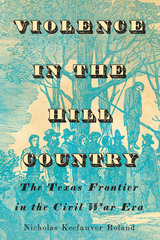 Violence in the Hill Country: The Texas Frontier in the Civil War Era
By Nicholas Keefauver Roland
University of Texas Press, 2021 2022 Ramirez Family Award for Most Significant Scholarly Book, Texas Institute of Letters An in-depth history of the Civil War in the Texas Hill Country, this book examines patterns of violence on the Texas frontier to illuminate white Americans’ cultural and political priorities in the nineteenth century. In the nineteenth century, Texas’s advancing western frontier was the site of one of America’s longest conflicts between white settlers and native peoples. The Texas Hill Country functioned as a kind of borderland within the larger borderland of Texas itself, a vast and fluid area where, during the Civil War, the slaveholding South and the nominally free-labor West collided. As in many borderlands, Nicholas Roland argues, the Hill Country was marked by violence, as one set of peoples, states, and systems eventually displaced others. In this painstakingly researched book, Roland analyzes patterns of violence in the Texas Hill Country to examine the cultural and political priorities of white settlers and their interaction with the century-defining process of national integration and state-building in the Civil War era. He traces the role of violence in the region from the eve of the Civil War, through secession and the Indian wars, and into Reconstruction. Revealing a bitter history of warfare, criminality, divided communities, political violence, vengeance killings, and economic struggle, Roland positions the Texas Hill Country as emblematic of the Southwest of its time.
Violence in the Model City: The Cavanagh Administration, Race Relations, and the Detroit Riot of 1967
Sidney Fine
Michigan State University Press, 2007 On July 23, 1967, the Detroit police raided a blind pig (after-hours drinking establishment), touching off the most destructive urban riot of the 1960s. It took the U.S. Army, the Michigan National Guard, the Michigan State Police, and the Detroit police department—17,000 men—more than a week to restore order. When all was done, the riot had claimed 43 lives (mostly Black) and resulted in nearly 700 injuries. Over 7,000 individuals were arrested, with property damage estimates over $75 million. Yet, Detroit had been lauded nationally as a "model city" in the governance of a large industrial metropolis. On the 40th anniversary of this nation-changing event, we are pleased to reissue Sidney Fine's seminal work—a detailed study of what happened, why, and with what consequences.
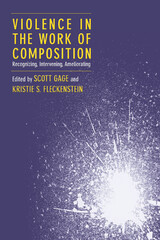 Violence in the Work of Composition: Recognizing, Intervening, Ameliorating
edited by Scott Gage and Kristie S. Fleckenstein
Utah State University Press, 2022 Focusing on overt and covert violence and bringing attention to the many ways violence inflects and infects the teaching, administration, and scholarship of composition, Violence in the Work of Composition examines both forms of violence and the reciprocal relationships uniting them across the discipline. Addressing a range of spaces, the collection features chapters on classroom practices, writing centers, and writing program administration, examining the complicated ways writing instruction is interwoven with violence, as well as the equally complicated ways writing teachers may recognize and resist the presence and influence of violence in their work.
This book provides a focused, nuanced, and systematic discussion of violence and its presence and influence across pedagogical and administrative sites. Violence in the Work of Composition offers a close look at the nature of violence as it emerges in the work of composition; provides strategies for identifying violence, especially covert violence, addressing its impact and preventing its eruption across many sites; and invites readers to reflect on both the presence of violence and the hope for its cessation. Contributors consider, first, how compositionists can recognize the ways their work inadvertently enacts and/or perpetuates violence and, second, how they can intervene and mitigate that violence.
Rich with the voices of myriad stakeholders, Violence in the Work of Composition initiates an essential conversation about violence and literacy education at a time when violence in its many forms continues to shape our culture, communities, and educational systems.
Contributors: Kerry Banazek, Katherine Bridgman, Eric Camarillo, Elizabeth Chilbert Powers, Joshua Daniel, Lisa Dooley, Allison Hargreaves, Jamila Kareem, Lynn C. Lewis, Trevor Meyer, Cathryn Molloy, Kellie Sharp-Hoskins, Ellen Skirvin, Krista Speicher Sarraf, Thomas Sura, James Zimmerman
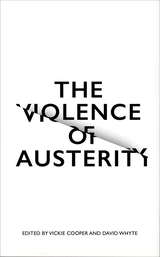 The Violence of Austerity
Edited by David Whyte and Vickie Cooper
Pluto Press, 2017 In the aftermath of the global financial crisis in 2008, Britain’s government put into effect a hotly contested series of major cuts in public expenditure with the stated aim of restoring economic security. Since then, this reign of austerity continues to devastate contemporary Britain through a disconnected and unaffected political elite.
In The Violence of Austerity, David Whyte and Vickie Cooper bring together the passionate voices of campaigners and academics to show that rather than stimulating economic growth, austerity policies have led to a dismantling of the social systems that operated as a buffer against economic hardship. Chapters from major contributors—including Danny Dorling, Mary O’Hara and Rizwaan Sabir—show how austerity is a form of institutional violence more socially harmful and far-reaching than other more politicized and publicized forms of violence, such as terrorism or gun violence. Contributors expose highly significant cases of this institutional violence driven by public sector cuts: police attacks on the homeless, violent evictions of the rented sector, risks faced by people on workfare, and more. The Violence of Austerity is a devastating, authoritative study of the myriad ways austerity policies harm people in Britain that will resonate with anyone concerned with the increasing power of the political elite and the future of social welfare.
 The Violence of Climate Change: Lessons of Resistance from Nonviolent Activists
Kevin J. O'Brien
Georgetown University Press, 2017 Climate change is viewed as a primarily scientific, economic, or political issue. While acknowledging the legitimacy of these perspectives, Kevin J. O’Brien argues that we should respond to climate change first and foremost as a case of systematic and structural violence. Global warming is largely caused by the carbon emissions of the affluent, emissions that harm the poor first and worst. Climate change is violence because it divides human beings from one another and from the earth. O’Brien offers a constructive and creative response to this violence through practical examples of activism and nonviolent peacemaking, providing brief biographies of five Christians in the United States—John Woolman, Jane Addams, Dorothy Day, Martin Luther King Jr., and Cesar Chavez. These activists’ idealism, social commitment, and political savvy offer lessons of resistance applicable to the struggle against climate change and for social justice.
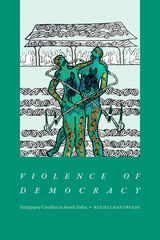 Violence of Democracy: Interparty Conflict in South India
Ruchi Chaturvedi
Duke University Press, 2023 In Violence of Democracy Ruchi Chaturvedi tracks the rise of India’s divisive politics through close examination of decades-long confrontations in Kerala between members of the Communist Party of India (Marxist) and supporters of the Hindu nationalist Rashtriya Swayam Sevak Sangh and the Bharatiya Janata Party. Drawing on ethnographic fieldwork and extensive archival research, Chaturvedi investigates the unique character of the conflict between the party left and the Hindu right. This conflict, she shows, defies explanations centering religious, caste, or ideological differences. It offers instead new ways of understanding how quotidian political competition can produce antagonistic majoritarian communities. Rival political parties mobilize practices of disbursing care and aggressive masculinity in their struggle for electoral and popular power, a process intensified by a criminal justice system that reproduces rather than mitigating violence. Chaturvedi traces these dynamics from the late colonial period to the early 2000s, illuminating the broader relationships between democratic life, divisiveness, and majoritarianism.
 The Violence of Protection: Policing, Immigration Law, and Asian American Women
Lee Ann S. Wang
Duke University Press, 2026 Celebrated as a feminist victory upon its passage as part of the Clinton Crime Bill, the Violence Against Women Act (VAWA) is a landmark piece of legislation that provides protections for survivors of gender and sexual violence. However, as Lee Ann S. Wang shows in The Violence of Protection, VAWA primarily funds law enforcement efforts to rescue women, and in doing so, creates conditions of racial violence against survivors from communities who are already policed, surveilled, and face immigration enforcement. Through ethnographic fieldwork with legal and social advocates serving Asian American survivors of gender and sexual violence in the San Francisco Bay Area, Wang shows how these advocates grapple with laws which require survivors to cooperate with policing in order to receive protection. Engaging in methodologies of feminist refusal, theories of racial assemblage, and abolition feminisms, The Violence of Protection theorizes the victim as a legal subject and exposes the racial violence enacted when State-provided legal safeguards are leveraged to expand punishment against survivors, their communities, and others.
The Violence of the Letter: Toward a Theory of Writing
Melanie McMahon
University of Michigan Press, 2023 The emergence of the alphabet in ancient Greece, usually heralded as the first step in the inexorable march toward reason and progress, in fact signaled the introduction of a chance technology that hijacked the future, with devastating consequences for humanity. By investigating an array of cultural artifacts, ranging from Kubrick's 2001: A Space Odyssey to the Oracle at Delphi to Luther's challenge to the Church, this book demonstrates how the apparently benign emergence of writing made possible far-ranging systems of organized domination and unprecedented levels of violence. The Violence of the Letter considers how a twenty-six-letter code changed the face of the world, and not always for the better.
 Violence over the Land: Indians and Empires in the Early American West
Ned Blackhawk
Harvard University Press, 2008 American Indians remain familiar as icons, yet poorly understood as historical agents. In this ambitious book that ranges across Utah, Nevada, New Mexico, Colorado, and eastern California (a region known as the Great Basin), Ned Blackhawk places Native peoples squarely at the center of a dynamic and complex story as he chronicles two centuries of Indian and imperial history that profoundly shaped the American West.
On the distant margins of empire, Great Basin Indians increasingly found themselves engulfed in the chaotic storms of European expansion and responded in ways that refashioned themselves and those around them. Focusing on Ute, Paiute, and Shoshone Indians, Blackhawk illuminates this history through a lens of violence, excavating the myriad impacts of colonial expansion. Brutal networks of trade and slavery forged the Spanish borderlands, and the use of violence became for many Indians a necessary survival strategy, particularly after Mexican Independence when many became raiders and slave traffickers. Throughout such violent processes, these Native communities struggled to adapt to their changing environments, sometimes scoring remarkable political ends while suffering immense reprisals.
Violence over the Land is a passionate reminder of the high costs that the making of American history occasioned for many indigenous peoples, written from the vantage point of an Indian scholar whose own family history is intimately bound up in its enduring legacies.
Violence, Political Culture & Development in Africa
Preben Kaarsholm
Ohio University Press, 2006 Africa has witnessed a number of transitions to democracy in recent years. Coinciding with this upsurge in democratic transitions have been spectacular experiences of social disintegration.An alternative to discourses of the “failed” and “collapsed” state in Africa is an approach that takes seriously the complex historical processes underlying the political development of individual nation states. The chapters in this volumethrow light on the ways in which violence, political culture, and development have interacted in recent African history.
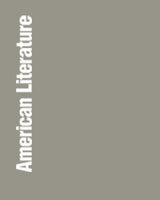 Violence, the Body, and the South, Volume 73
Houston A. Baker Jr. and Dana D. Nelson, eds.
Duke University Press Violence, the Body, and “The South” is a boldly innovative contribution to a new Southern Studies, which provides a model of collaborative, intergenerational, interracial, interdisciplinary scholarship. This special issue of American Literature challenges the traditional division of the United States between “North” and “South,” revealing that the complexities of violence and pleasure, representation and illusion, innocence and guilt, gender and race exist in infinitely inflected combination in the Americas, not simply in the “South.” This collection represents first-rate examples of gender, critical race, genre, and material culture studies. Topics ranging from epistemological and authorial rebellions marking Frederick Douglass’s Narrative and Charles Chesnutt’s The Marrow of Tradition to the twentieth-century labors of writers, such as Francisco Goldman and Helena María Viramontes, who work to make visible the complexities of “North” and “South” with respect to subordinated Latino/a bodies. William Faulkner is revisited in an essay on the internalization of “race” in Light in August. Guess Who’s Coming to Dinner and In the Heat of the Night are analyzed in a framework of homopolitical desire. Genre and regional studies combine in an energetic essay resituating Harriet Jacobs’s Incidents in the Life of a Slave Girl with respect to “Northern” fiction. Contributors. Houston A. Baker Jr., Jeannine DeLombard, Laura Doyle, Jennifer Rae Greeson, Andrea Levine, Dana D. Nelson, Ana Patricia Rodríguez, Bryan Wagner
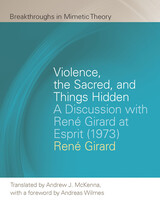 Violence, the Sacred, and Things Hidden: A Discussion with René Girard at Esprit (1973)
René Girard
Michigan State University Press, 2022 Never before translated in English, this 1973 discussion between René Girard (1923–2015) and other prominent scholars represents one of the most significant breakthroughs in mimetic theory. Organized by the French journal Esprit, the conversation was an opportunity for Girard to debate with his interlocutors the theories he expounded in Violence and the Sacred (1972). These scholars prompted him to reconsider the book’s strictly sociological interpretation of religion, highlighting the misrecognition of violent scapegoating at its origins and in its myths and ritual practices, by addressing the relation between his critique of primitive or archaic religion and the role of Judeo-Christianity. The ensuing discussion opened up an entirely new and admittedly startling phase of his thinking, where he deployed an epistemology rooted in Biblical revelation, which he viewed as an ongoing deconstruction of sacrificial practices. In this text, he vindicates for the very first time the anthropological relevance of Judeo-Christian scriptures. The 1973 discussion thus marks a new and decisive step in Girard’s intellectual journey, making this volume a critical document for understanding the transition period between Violence and the Sacred and Things Hidden Since the Foundation of the World (1978).
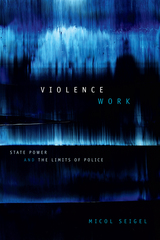 Violence Work: State Power and the Limits of Police
Micol Seigel
Duke University Press, 2018 In Violence Work Micol Seigel offers a new theorization of the quintessential incarnation of state power: the police. Foregrounding the interdependence of policing, the state, and global capital, Seigel redefines policing as “violence work,” showing how it is shaped by its role of channeling state violence. She traces this dynamic by examining the formation, demise, and aftermath of the U.S. State Department's Office of Public Safety (OPS), which between 1962 and 1974 specialized in training police forces internationally. Officially a civilian agency, the OPS grew and operated in military and counterinsurgency realms in ways that transgressed the borders that are meant to contain the police within civilian, public, and local spheres. Tracing the career paths of OPS agents after their agency closed, Seigel shows how police practices writ large are rooted in violence—especially against people of color, the poor, and working people—and how understanding police as a civilian, public, and local institution legitimizes state violence while preserving the myth of state benevolence.
 Violent Acts and Urban Space in Contemporary Tel Aviv: Revisioning Moments
By Tali Hatuka
University of Texas Press, 2010 Violent acts over the past fifteen years have profoundly altered civil rituals, cultural identity, and the meaning of place in Tel Aviv. Three events in particular have shed light on the global rule of urban space in the struggle for territory, resources, and power: the assassination of Prime Minister Rabin in 1995 in the city council square; the suicidal bombing at the Dolphinarium Discothèque along the shoreline in 2001; and bombings in the Neve Shaanan neighborhood in 2003. Tali Hatuka uses an interdisciplinary framework of urban theory and sociopolitical theory to shed light on the discourse regarding violent events to include an analysis of the physical space where these events take place. She exposes the complex relationships among local groups, the state, and the city, challenging the national discourse by offering a fresh interpretation of contesting forces and their effect on the urban environment. Perhaps the most valuable contribution of this book is its critical assessment of the current Israeli reality, which is affected by violent events that continually alter the everyday life of its citizens. Although these events have been widely publicized by the media, there is scant literature focusing on their impact on the urban spaces where people live and meet. In addition, Hatuka shows how sociopolitical events become crucial defining moments in contemporary lived experience, allowing us to examine universal questions about the way democracy, ideology, and memory are manifested in the city.
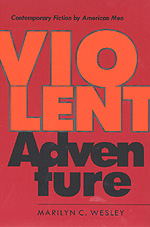 Violent Adventure: Contemporary Fiction by American Men
Marilyn C. Wesley
University of Virginia Press, 2003 As the mother of young sons, Marilyn Wesley became increasingly concerned about the conflicting messages they received in a world where "Han Solo replaced John Wayne as a national hero and the lost war in Vietnam was mediated by GI Joe dolls and Rambo movies." What, she wondered, do the stories we tell our boys teach them about being men, and what does a culture of male violence teach our boys about being violent men?
Questioning both the popular condemnation of violent representation and the notion that violence can be constructive by empowering the "identity" of an integrated adult self, Wesley identifies a revealing pattern of "violent adventure" in recent fiction by American men. Although the wide range of texts examined in Violent Adventure have in common the use of violence associated with traditional genres of adventure (boy's life narratives, Westerns, detective and war stories, as well as what she terms the contemporary epic), their portrayals add a twist.
Tim O'Brien, Thom Jones, Tobias Wolff, Pinckney Benedict, Richard Ford, Cormac McCarthy, Ernest Gaines, Walter Mosley, Russell Banks, and Don DeLillo all preserve the traditional notion of masculine development as portrayed through violent male action. Yet Wesley contends they do so to demonstrate that violence in fact neither produces power nor promotes the satisfactory entry of young men into a supportive identifying community. By studying the effects of violent representation as it is being rewritten in contemporary literature, Wesley demonstrates that current adaptations by a diverse range of male writers subvert conventional patterns of violent content and generic form to foreground issues of cultural and material power relations.
--------------------------------------------------------------------------------
Marilyn C. Wesley, Professor of English at Hartwick College, is the author of Refusal and Transgression in Joyce Carol Oates' Fiction and Secret Journeys: The Trope of the Woman Traveler in American Literature.
 Violent Affections: Queer Sexuality, Techniques of Power, and Law in Russia
Alexander Sasha Kondakov
University College London, 2022 An inciteful analysis of the affective rhetoric surrounding Russian anti-LGBTQ violence.
Passed in 2013, Russia’s “gay propaganda” law cemented the nation’s anti-LGBTQ sentiment into legal rhetoric that has since emboldened countless instances of violence against queer people. Based on an analysis of over three hundred criminal cases of anti-queer violence in Russia before and after the introduction of the law, Violent Affections shows how violent acts are framed in emotional language by perpetrators during their criminal trials, thus uncovering the techniques of power that work to translate emotions into violence against queer people. Utilizing an original methodology of studying legal memes, this book argues that individual affective states are directly connected to the political and legislative violence aimed at policing queer lives. Alexander Sasha Kondakov expands upon two sets of interdisciplinary literature–queer theory and affect theory–in order to conceptualize what is referred to as neo-disciplinary power. The book traces how affections circulate from body to body as a kind of virus, eventually enabling the turn from a memetic response to violent action.
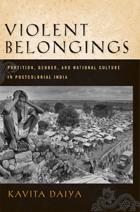 Violent Belongings: Partition, Gender, and National Culture in Postcolonial India
Kavita Daiya
Temple University Press, 2008 Focusing on the historical and contemporary narration of the Partition of India, Violent Belongings examines transnational South Asian culture from 1947 onwards. Spanning the Indian subcontinent and its diasporas in the United Kingdom and the United States, it asks how postcolonial/diasporic literature (eg., Rushdie, Mistry, Sidwa and Lahiri), Bollywood film, personal testimonies and journalism represent the violence, migration and questions of national belonging unleashed by that pivotal event during which two million people died and sixteen million were displaced.
In addition to challenging the official narratives of independence and Partition, these narratives challenge our contemporary understanding of gender and ethnicity in history and politics. Violent Belongings argues that both male and female bodies, and heterosexual coupledom, became symbols of the nation in public life. In the newly independent Indian nation both men and women were transformed into ideal citizens or troubling bodies, immigrants or refugees, depending on whether they were ethnically Hindu, Muslim, Jewish or Sikh. The divisions set in motion during Partition continue into our own time and account for ethnic violence in South Asia.
Violent Blues
Bruce Willard
Four Way Books, 2016 Violent Blues is a blues-harp album of words, a soundtrack of self-violence and loss, introspection and renewal—one man’s search for intimacy and enduring music. Its poems are rooted in the natural world and tethered by concrete experience.
 Violent Criminal Acts and Actors Revisited
Lonnie Athens
University of Illinois Press, 1997 Sociologist Norman K. Denzin characterized Lonnie Athens's earlier work
as "the most far-reaching, provocative, and profound analysis of violent conduct" available in criminological literature. In Violent Criminal Acts and Actors Revisited, Athens returns to his pioneering work and finds that his premises are just as relevant and original as in their earlier version--and that they have been curiously, and to society's detriment, overlooked.
Rather than finding the causes of criminal behavior in external forces
or personality disorders, as conventional wisdom often does, Athens renews his fundamental argument that a violent situation comes into being when defined by an individual as a situation that calls for violence--that an actor responds to the circumstance as he or she defines it. Based on the author's many firsthand interviews with offenders and on his personal experience, Violent Criminal Acts and Actors Revisited augments Athens’s call to reexamine the source and locus of violent criminal behavior.
 Violent Death in the City: Suicide, Accident, and Murder in Nineteenth-Century Philadelphia
Roger Lane
Harvard University Press, 1979 Roger Lane uses the statistics on violent death in Philadelphia from 1839 to 1901 to study the behavior of the living. His extensive research into murder, suicide, and accident rates in Philadelphia provides an excellent factual foundation for his theories. A computerized study of every homicide indictment during the sixty-two years covered is the source of the most detailed information. Analysis of suicide and accident statistics reveals differences in behavior patterns between the sexes, the races, young and old, professional and laborer, native and immigrant, and how these patterns changed overtime.
Using both these group differences and the changing overall incidence of the three forms of death, Lane synthesizes a comprehensive theory of the influences of industrial urbanization on social behavior. He believes that the demands of the rising industrial system, as transmitted through factory, school, and bureaucracy, combined to socialize city dwellers in new ways, to raise the rate of suicide, and to lower rates of simple accident and murder. Finally, Lane suggests a relation between these developments and the violent disorder in the postindustrial city, which has lost the older mechanisms of socialization without finding any effective new ones. Original and probing, Lane's combination of statistics and theory makes this a significant new work in social, urban, and medical history.
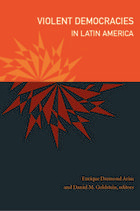 Violent Democracies in Latin America
Enrique Desmond Arias and Daniel M. Goldstein, eds.
Duke University Press, 2010 Despite recent political movements to establish democratic rule in Latin American countries, much of the region still suffers from pervasive violence. From vigilantism, to human rights violations, to police corruption, violence persists. It is perpetrated by state-sanctioned armies, guerillas, gangs, drug traffickers, and local community groups seeking self-protection. The everyday presence of violence contrasts starkly with governmental efforts to extend civil, political, and legal rights to all citizens, and it is invoked as evidence of the failure of Latin American countries to achieve true democracy. The contributors to this collection take the more nuanced view that violence is not a social aberration or the result of institutional failure; instead, it is intimately linked to the institutions and policies of economic liberalization and democratization. The contributors—anthropologists, political scientists, sociologists, and historians—explore how individuals and institutions in Latin American democracies, from the rural regions of Colombia and the Dominican Republic to the urban centers of Brazil and Mexico, use violence to impose and contest notions of order, rights, citizenship, and justice. They describe the lived realities of citizens and reveal the historical foundations of the violence that Latin America suffers today. One contributor examines the tightly woven relationship between violent individuals and state officials in Colombia, while another contextualizes violence in Rio de Janeiro within the transnational political economy of drug trafficking. By advancing the discussion of democratic Latin American regimes beyond the usual binary of success and failure, this collection suggests more sophisticated ways of understanding the challenges posed by violence, and of developing new frameworks for guaranteeing human rights in Latin America. Contributors: Enrique Desmond Arias, Javier Auyero, Lilian Bobea, Diane E. Davis, Robert Gay, Daniel M. Goldstein, Mary Roldán, Todd Landman, Ruth Stanley, María Clemencia Ramírez
 Violent Democratization: Social Movements, Elites, and Politics in Colombia's Rural War Zones, 1984-2008
Leah Anne Carroll
University of Notre Dame Press, 2011
In Violent Democratization, Leah Anne Carroll analyzes peasant and rural worker mobilization, as well as elite reaction, in Colombia's war zones over a period of twenty-five years and across three regions. Due to Colombia's long history of electoral democracy coinciding with weak state institutions, armed insurgencies, strong social movements, and violent responses from elites and the state, Carroll presents Colombia as a clear-cut national case of "violent democratization." Relying primarily on her interviews with leftist and social movement activists, elected officials, and some elites, as well as on electoral data and archival sources, Carroll reconstructs the political history of key county governments, providing a detailed account of the struggles for local power between elites, on the one hand, and rural agriculturalists and workers, on the other.
Carroll analyzes the ways in which the tactics of social movements and elites shifted as national political trends moved from greater political freedom, rapid decentralization, and peace overtures toward guerrilla groups characteristic of the 1980s and early 1990s, to the reversal of these trends and the major escalation of armed conflict and U.S. military aid thereafter. In all three regions, peasant, worker, and neighborhood movements, aided by leftist elected officials, initially gained significant victories. Their successes provoked a violent elite counteroffensive against activists, involving both military and elite-supported paramilitary forces. In response, however, a second wave of activism promoted human rights demands and sought international support to confront the violence of both the Right and the Left.
Within these commonalities, Carroll's three regional case studies (Uraba, the Middle and Lower Caguan Valley, and Arauca, producing bananas, coca, and oil, respectively) demonstrate how geographical location and the unique characteristics of the activist movements and regional elites (plantation owners, oil companies, cattle ranchers, and the military and paramilitary forces themselves) shaped each movement's tactics, unity, and success.
"Leah Anne Carroll's Violent Democratizationis an extraordinary work of scholarship that makes an important contribution to the study of recent Colombian politics and raises important theoretical and political questions that transcend the Colombian case. Carroll's interviews with activists in the three regions she studies, done in the late 1980s and early 1990s at personal risk to herself, provide a wealth of data and analysis heretofore unavailable to scholars. Her explanation of the differences she found among the regions will stimulate debate on crucial questions central to understanding Colombia's contemporary political crisis and the question of Latin American democratization more generally." --Charles Bergquist, University of Washington, Seattle
"How can social movements survive and promote progressive change in the face of violent repression? For anyone interested in answering this question, Leah Carroll's book is an invaluable gift. Solidly grounded in incredible field research and twenty years of painstaking analysis, Carroll's comparison of regional political outcomes in Colombia's violent countryside is a major addition to the existing literature that should be read and studied with care by scholars and activists alike." --Peter Evans, University of California, Berkeley
"This book is a remarkable contribution to theoretical debate and empirical knowledge of societies involved in long duration conflicts, in a context of undeniable democratization processes. It will enrich the renewed debate on the crisis of the institutions and political representation in Latin America." --Gonzalo Sanchez Gomez, IEPRI, Universidad Nacional de Colombia
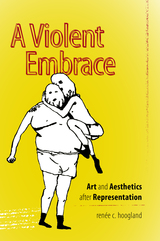 A Violent Embrace: Art and Aesthetics after Representation
renée c. hoogland
Dartmouth College Press, 2014 Instead of asking questions about the symbolic meaning or underlying “truth” of a work of art, renée c. hoogland is concerned with the actual “work” that it does in the world (whether intentionally or not). Why do we find ourselves in tears in front of an abstract painting? Why do some cartoons of the prophet Muhammad generate worldwide political outrage? What, in other words, is the compelling force of visual images, even—or especially—if they are nonfigurative, repulsive, or downright “ugly”? Rather than describing, analyzing, and interpreting artworks, hoogland approaches art as an event that obtains on the level of actualization, presenting “retellings” of specific artistic events in the light of recent interventions in aesthetic theory, and proposing to conceive of the aesthetic encounter as a potentially disruptive, if not violent, force field with material, political, and practical consequences.
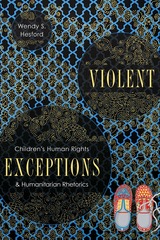 Violent Exceptions: Children's Human Rights and Humanitarian Rhetorics
Wendy S. Hesford
Ohio State University Press, 2021 Violent Exceptions turns to the humanitarian figure of the child-in-peril in twenty-first-century political discourse to better understand how this figure is appropriated by political constituencies for purposes rarely to do with the needs of children at risk. Wendy S. Hesford shows how the figure of the child-in-peril is predicated on racial division, which, she argues, is central to both conservative and liberal logics, especially at times of crisis when politicians leverage humanitarian storytelling as a political weapon. Through iconic images and stories of child migrants, child refugees, undocumented children, child soldiers, and children who are victims of war, terrorism, and state violence, Violent Exceptions illustrates how humanitarian rhetoric turns public attention away from systemic violations against children’s human rights and reframes this violence as exceptional—erasing more gradual forms of violence and minimizing human rights potential to counteract these violations and the precarious conditions from which they arise.
 Violent Exceptions: Children's Human Rights and Humanitarian Rhetorics
Wendy S. Hesford
Ohio State University Press, 2021 Violent Exceptions turns to the humanitarian figure of the child-in-peril in twenty-first-century political discourse to better understand how this figure is appropriated by political constituencies for purposes rarely to do with the needs of children at risk. Wendy S. Hesford shows how the figure of the child-in-peril is predicated on racial division, which, she argues, is central to both conservative and liberal logics, especially at times of crisis when politicians leverage humanitarian storytelling as a political weapon. Through iconic images and stories of child migrants, child refugees, undocumented children, child soldiers, and children who are victims of war, terrorism, and state violence, Violent Exceptions illustrates how humanitarian rhetoric turns public attention away from systemic violations against children’s human rights and reframes this violence as exceptional—erasing more gradual forms of violence and minimizing human rights potential to counteract these violations and the precarious conditions from which they arise.
 Violent Extremism: A Handbook of Risk Assessment and Management
Edited by Caroline Logan, Randy Borum, and Paul Gill
University College London, 2023 A practical study of the prevention of violent extremism.
Violent extremism has galvanized public fear and attention. Driven by their concerns, the public has pushed for law enforcement and mental health systems to prevent attacks rather than just respond to them after they occur. The prevention process requires guidance for practitioners and policymakers on how best to identify people who may be at risk, to understand and assess the nature and function of the harm they may cause, and to manage them to mitigate or prevent harm. Violent Extremism provides such guidance.
Over ten chapters, prepared by leading experts, this handbook illuminates the nature of violent extremism and the evolution of prevention-driven practice. Authors draw on the literature and their experience to explain which factors might increase (risk factors) or decrease (protective factors) risk, how those factors might operate, and how practitioners can prepare risk formulations and scenario plans that inform risk management strategies to prevent violent extremist harm.
Each chapter is crafted to support thoughtful, evidence-based practice that is transparent, accountable, and ultimately defensible. Written for an international audience, the volume will be of interest to law enforcement and mental health professionals, criminal justice and security personnel, as well as criminologists, policymakers, and researchers.
Violent Histories, Livable Futures: Forging the Power of the People
Eric King Watts
Michigan State University Press, 2026 Our political landscape is crowded with competing voices—claims, demands, grievances, and even acts of violence—all made in the name of some idea of “the people.” This powerful concept has been wielded both to assert democratic sovereignty and to justify exclusion and control. Violent Histories, Livable Futures unpacks this complex dynamic through compelling historical case studies, spanning sub-Saharan Africa in the 1950s, post–World War II Guatemala, and the United States in the aftermath of George Floyd’s murder. By tracing how societies have contended over which people matter and which do not, this book offers a deeply relevant exploration of power, representation, and the struggle for justice, all in pursuit of a more livable future.
 Violent Intermediaries: African Soldiers, Conquest, and Everyday Colonialism in German East Africa
Michelle R. Moyd
Ohio University Press, 2014 The askari, African soldiers recruited in the 1890s to fill the ranks of the German East African colonial army, occupy a unique space at the intersection of East African history, German colonial history, and military history. Lauded by Germans for their loyalty during the East Africa campaign of World War I, but reviled by Tanzanians for the violence they committed during the making of the colonial state between 1890 and 1918, the askari have been poorly understood as historical agents. Violent Intermediaries situates them in their everyday household, community, military, and constabulary roles, as men who helped make colonialism in German East Africa. By linking microhistories with wider nineteenth-century African historical processes, Michelle Moyd shows how as soldiers and colonial intermediaries, the askari built the colonial state while simultaneously carving out paths to respectability, becoming men of influence within their local contexts. Through its focus on the making of empire from the ground up, Violent Intermediaries offers a fresh perspective on African colonial troops as state-making agents and critiques the mythologies surrounding the askari by focusing on the nature of colonial violence.
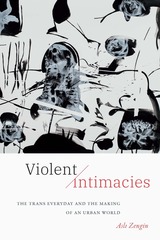 Violent Intimacies: The Trans Everyday and the Making of an Urban World
Asli Zengin
Duke University Press, 2024 In Violent Intimacies, Aslı Zengin traces how trans people in Turkey creatively negotiate and resist everyday cisheteronormative violence. Drawing on the history and ethnography of the trans communal life in Istanbul, Zengin develops an understanding of cisheteronormative violence that expands beyond sex, gender and sexuality. She shows how cisheteronormativity forms a connective tissue among neoliberal governmentality, biopolitical and necropolitical regimes, nationalist religiosity and authoritarian management of social difference. As much as trans people are shaped by these processes, they also transform them in intimate ways. Transness in Turkey provides an insightful site for developing new perspectives on statecraft, securitization and surveillance, family and kin-making, urban geography, and political life. Zengin offers the concept of violent intimacies to theorize this entangled world of the trans everyday where violence and intimacy are co-constitutive. Violent intimacies emerge from trans people’s everyday interactions with the police, religious and medical institutions, street life, family and kinship, and trans femicides and funerals. The dynamic of violent intimacies prompts new understandings of violence and intimacy and the world-making struggles of trans people in a Middle Eastern context.
 Violent Land: Single Men and Social Disorder from the Frontier to the Inner City
David T. Courtwright
Harvard University Press, 1996 This book offers an explosive look at violence in America—why it is so prevalent, and what and who are responsible. David Courtwright takes the long view of his subject, developing the historical pattern of violence and disorder in this country. Where there is violent and disorderly behavior, he shows, there are plenty of men, largely young and single. What began in the mining camp and bunkhouse has simply continued in the urban world of today, where many young, armed, intoxicated, honor-conscious bachelors have reverted to frontier conditions.
Violent Land combines social science with an engrossing narrative that spans and reinterprets the history of violence and social disorder in America. Courtwright focuses on the origins, consequences, and eventual decline of frontier brutality. Though these rough days have passed, he points out that the frontier experience still looms large in our national self-image—and continues to influence the extent and type of violence in America as well as our collective response to it.
Broadly interdisciplinary, looking at the interplay of biological, social, and historical forces behind the dark side of American life, this book offers a disturbing diagnosis of violence in our society.
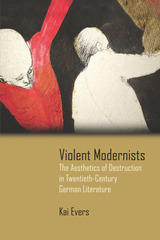 Violent Modernists: The Aesthetics of Destruction in Twentieth-Century German Literature
Kai Evers
Northwestern University Press, 2013 Accounts of rape, murder, mutilation, and torture run like a bloodred thread through modernist literature in the German language. Previous accounts of German literary modernism have linked its fascination with violent destruction either to the militant avant-garde on the left or to fascist modernism on the right. Critics have noted that high modernists depicted violence through its impact on their own victimized protagonists. But by minimizing and ignoring the often disturbing attraction to aggression in the works of Franz Kafka and others, these prevalent readings have filtered out much of the provocative and productive potential of German modernism.
Kai Evers’s Violent Modernists: The Aesthetics of Destruction in Twentieth-Century German Literature develops a new understanding of German modernism that moves beyond the oversimplified dichotomy of an avant-garde prone to aggression on the one hand and a modernism opposed to violence on the other. Analyzing works by Robert Musil, Franz Kafka, Karl Kraus, Walter Benjamin, Elias Canetti, and others, Evers argues that these authors are among the most innovative thinkers on violence and its impact on contemporary concepts of the self, history, and society.
Violent Modernity: France in Algeria
Abdelmajid Hannoum
Harvard University Press, 2010 In Violent Modernity: France in Algeria, Abdelmajid Hannoum examines the advent of political modernity in Algeria and shows how colonial modernity was not only a project imposed by violence but also a violent project in and of itself, involving massive destruction and significant transformation of the population of Algeria. The author analyzes the relation between culture and events and demonstrates how the culture of colonial modernity was generative of violent events, the most notorious and tragic of which were the spectacular mass killings of the 1990s, usually referred to as “the Algerian civil war.” This, the author argues, cannot be explained without an understanding of colonial modernity.
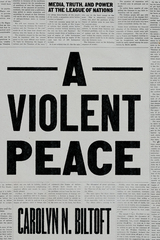 A Violent Peace: Media, Truth, and Power at the League of Nations
Carolyn N. Biltoft
University of Chicago Press, 2021 The newly born League of Nations confronted the post-WWI world—from growing stateless populations to the resurgence of right-wing movements—by aiming to create a transnational, cosmopolitan dialogue on justice. As part of these efforts, a veritable army of League personnel set out to shape “global public opinion,” in favor of the postwar liberal international order. Combining the tools of global intellectual history and cultural history, A Violent Peace reopens the archives of the League to reveal surprising links between the political use of modern information systems and the rise of mass violence in the interwar world. Historian Carolyn N. Biltoft shows how conflicts over truth and power that played out at the League of Nations offer broad insights into the nature of totalitarian regimes and their use of media flows to demonize a whole range of “others.”
An exploration of instability in information systems, the allure of fascism, and the contradictions at the heart of a global modernity, A Violent Peace paints a rich portrait of the emergence of the age of information—and all its attendant problems.
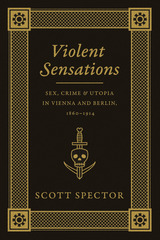 Violent Sensations: Sex, Crime, and Utopia in Vienna and Berlin, 1860-1914
Scott Spector
University of Chicago Press, 2016 Around the turn of the twentieth century, Vienna and Berlin were centers of scientific knowledge, accompanied by a sense of triumphalism and confidence in progress. Yet they were also sites of fascination with urban decay, often focused on sexual and criminal deviants and the tales of violence surrounding them. Sensational media reports fed the prurient public’s hunger for stories from the criminal underworld: sadism, sexual murder, serial killings, accusations of Jewish ritual child murder—as well as male and female homosexuality.
In Violent Sensations, Scott Spector explores how the protagonists of these stories—people at society’s margins—were given new identities defined by the groundbreaking sciences of psychiatry, sexology, and criminology, and how this expert knowledge was then transmitted to an eager public by journalists covering court cases and police investigations. The book analyzes these sexual and criminal subjects on three levels: first, the expertise of scientists, doctors, lawyers, and scholars; second, the sensationalism of newspaper scandal and pulp fiction; and, third, the subjective ways that the figures themselves came to understand who they were. Throughout, Spector answers important questions about how fantasies of extreme depravity and bestiality figure into the central European self-image of cities as centers of progressive civilization, as well as the ways in which the sciences of social control emerged alongside the burgeoning emancipation of women and homosexuals.
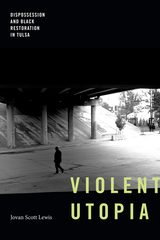 Violent Utopia: Dispossession and Black Restoration in Tulsa
Jovan Scott Lewis
Duke University Press, 2022 In Violent Utopia Jovan Scott Lewis retells the history and afterlife of the 1921 Tulsa race massacre, from the post-Reconstruction migration of Black people to Oklahoma Indian Territory to contemporary efforts to rebuild Black prosperity. He focuses on how the massacre in Tulsa’s Greenwood neighborhood—colloquially known as Black Wall Street—curtailed the freedom built there. Rather than framing the massacre as a one-off event, Lewis places it in a larger historical and social context of widespread patterns of anti-Black racism, segregation, and dispossession in Tulsa and beyond. He shows how the processes that led to the massacre, subsequent urban renewal, and intergenerational poverty shored up by nonprofits constitute a form of continuous slow violence. Now, in their attempts to redevelop resources for self-determination, Black Tulsans must reconcile a double inheritance: the massacre’s violence and the historical freedom and prosperity that Greenwood represented. Their future is tied to their geography, which is the foundation from which they will repair and fulfill Greenwood’s promise.
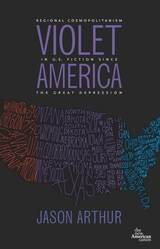 Violet America: Regional Cosmopolitanism in U.S. Fiction
Jason Arthur
University of Iowa Press, 2013 Violet America takes on the long habit among literary historians and critics of thinking about large segments of American literary production in terms of regionalism. Jason Arthur argues that classifying broad swaths of American literature as regionalist or “local color” writing brings with it a set of assumptions, informed by longstanding habits of thought about American culture, that marginalize important literary works and deform our understanding of them. Moreover, these assumptions reinforce our ideas about the divisions between city and country, coast and center, cosmopolitan and provincial that lie behind not only our literature, but our politics.
Against this common view, Violet America demonstrates just how cosmopolitan the regional impulse can be. In the works of James Agee, Jack Kerouac, Maxine Hong Kingston, Russell Banks, and Jonathan Franzen, the regional impulse yields narratives about the interdependence between privilege and poverty, mainstream and margin, urban and rural. These narratives counteract the polarizing cultural lens that, when unquestioned, sees the red-state/blue-state geography of twenty-first-century America as natural. Tracking the evolution of this impulse to depolarize, Violet America develops a literary history of “regional cosmopolitanism,” a key urge of which is to represent the interconnectedness of the local, the national, and the global. Writers incorporating this perspective redress the blight of America’s neglected places and peoples without also falling victim to the stigmas of being purely regional in their scope and interest. Rather than simply celebrating regional difference, the regional cosmopolitan fiction that Arthur discusses blends the nation’s cultural polarities into a connected, interdependent America.
Violin Playing Herself in a Mirror: Poems
David Kutz-Marks
University of Massachusetts Press, 2015 The first book of poetry from David Kutz-Marks. Guided by long and musical lines with quickly shifting forms of discourse and reference, these poems challenge our identities, our thoughts, and our quarrels with each other as they dart back and forth between interior spaces and real human relationships.
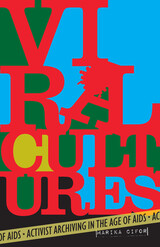 Viral Cultures: Activist Archiving in the Age of AIDS
Marika Cifor
University of Minnesota Press, 2022 Delves deep into the archives that keep the history and work of AIDS activism alive
Serving as a vital supplement to the existing scholarship on AIDS activism of the 1980s and 1990s, ViralCultures is the first book to critically examine the archives that have helped preserve and create the legacy of those radical activities. Marika Cifor charts the efforts activists, archivists, and curators have made to document the work of AIDS activism in the United States and the infrastructure developed to maintain it, safeguarding the material for future generations to remember these social movements and to revitalize the epidemic’s past in order to remake the present and future of AIDS. Drawing on large institutional archives such as the New York Public Library, as well as those developed by small, community-based organizations, this work of archival ethnography details how contemporary activists, artists, and curators use these records to build on the cultural legacy of AIDS activism to challenge the conditions of injustice that continue to undergird current AIDS crises. Cifor analyzes the various power structures through which these archives are mediated, demonstrating how ideology shapes the nature of archival material and how it is accessed and used. Positioning vital nostalgia as both a critical faculty and a generative practice, this book explores the act of saving this activist past and reanimating it in the digital age. While many books, popular films, and major exhibitions have contributed to a necessary awareness of HIV and AIDS activism, Viral Cultures provides a crucial missing link by highlighting the powerful role of archives in making those cultural moments possible.
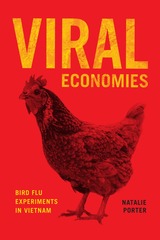 Viral Economies: Bird Flu Experiments in Vietnam
Natalie Porter
University of Chicago Press, 2019 Over the last decade, infectious disease outbreaks have heightened fears of a catastrophic pandemic passing from animals to humans. From Ebola and bird flu to swine flu and MERS, zoonotic viruses are killing animals and wreaking havoc on the people living near them. Given this clear correlation between animals and viral infection, why are animals largely invisible in social science accounts of pandemics, and why do they remain marginal in critiques of global public health?
In Viral Economies, Natalie Porter draws from long-term research on bird flu in Vietnam to chart the pathways of scientists, NGO workers, state veterinarians, and poultry farmers as they define and address pandemic risks. Porter argues that as global health programs expand their purview to include life and livestock, they weigh the interests of public health against those of commercial agriculture, rural tradition, and scientific innovation. Porter challenges human-centered analyses of pandemics and shows how dynamic and often dangerous human-animal relations take on global significance as poultry and their pathogens travel through global livestock economies and transnational health networks. Viral Economies urges readers to think critically about the ideas, relationships, and practices that produce our everyday commodities, and that shape how we determine the value of life—both human and nonhuman.
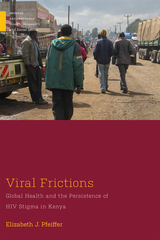 Viral Frictions: Global Health and the Persistence of HIV Stigma in Kenya
Elizabeth J. Pfeiffer
Rutgers University Press, 2022 Viral Frictions takes the reader along a trail of intersecting narratives to uncover how and why it is that HIV-related stigma persists in the age of treatment. Pfeiffer convincingly argues that stigma is a socially constructed process co-produced at the nexus of local, national, and global relationships and storytelling about and practices associated with HIV. Based on a decade of fieldwork in one highway trading center in Kenya, Viral Frictions offers compelling stories of stigma and discrimination as a lens for understanding broader social processes, the complexities of globalization and health, and their profound impact on the everyday social lives and relationships of people living through the ongoing HIV epidemic in sub-Saharan Africa. This highly engaging book is ideal reading for those interested in teaching and learning about intersectionality, as Pfeiffer meticulously demonstrates how HIV stigma interacts with issues of treatment, race, ethnicity, class, gender, sexuality, social change, and international aid systems.
Viral Loads: Anthropologies of Urgency in the Time of COVID-19
Edited by Lenore Manderson, Nancy J. Burke, and Ayo Wahlberg
University College London, 2021 A diagnosis of global inequalities exploited by COVID-19 and how we might evolve.
The COVID-19 pandemic disrupted some lives more than others. While more than half the world’s population experienced physical restrictions in the wake of the virus, Viral Loads reveals how the international response placed disparate burdens on exploited communities across the globe. Contributors from six continents situate the pandemic within a highly connected yet exceedingly unequal world marked by fragmented communities, austere economies, and unstable governments. Ambitious in its scope, Viral Loads insists that medical anthropology must be part of any future efforts to build a new post-pandemic world.
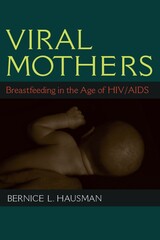 Viral Mothers: Breastfeeding in the Age of HIV/AIDS
Bernice L. Hausman
University of Michigan Press, 2010 "Long overdue . . . Hausman's focus on cultural representation rather than real mothers and practices is savvy and strategic in removing the debates from personal stories and investments to the ways in which this volatile topic becomes embedded in cultural values, language, and imagery."
---Alison Bartlett, University of Western Australia Viral Mothers: Breastfeeding in the Age of HIV/AIDS addresses modern fears of dangerous motherhood, focusing on preoccupations with mothers' bodies as vectors for infection and contamination. The book examines how the maternal body is perceived as a conduit for disease, drugs, or contaminants that end up in the body of an innocent---and pure---infant. Paying special attention to HIV transmission through breastfeeding, Viral Mothers examines ideologies of maternal embodiment that influence public health protocols and mothers' behaviors worldwide. The medical community has known since the late 1980s that HIV is passed through breast milk from infected mothers to their babies. In highly industrialized countries, HIV-positive mothers are advised not to breastfeed their babies, but in poor countries breastfeeding has continued to be a predominant and medically recommended practice as a partial solution to problems of infant health and welfare in resource-poor contexts. Now, in areas of high rates of HIV infection and high infant mortality, decisions concerning infant feeding are, literally, about life and death. Public health debates concerning breastfeeding and HIV transmission must consider both the mortality associated with not breastfeeding and the possibility of HIV infection from mother to child. The transmission of HIV through breastfeeding is a medical and public health issue that touches on and augments contemporary concerns about bodies, germs, and the environment. These concerns affect all people around the globe as we struggle with the meanings of health, risk, and embodiment in modernity. Viral Mothers addresses and explores the dense cultural meanings evoked by mothers' postnatal transmission of HIV. In so doing, the book pays special attention to fears of contamination and contagion that emerge as consequences of a medicalizing modernity. The main themes of the book---risk, purity, denial, and choice---define the terms through which the viral mother is constituted in discourse and enacted publicly as a set of identifiable, culturally legible, concerns. Bernice L. Hausman is Professor of English at Virginia Tech. She is also the author of Mother's Milk: Breastfeeding Controversies in American Culture. Illustration: ©iStockphoto.com/timeless
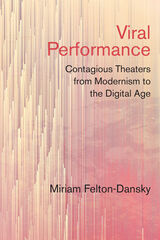 Viral Performance: Contagious Theaters from Modernism to the Digital Age
Miriam Felton-Dansky
Northwestern University Press, 2018 Digital culture has occasioned a seismic shift in the discourse around contagion, transmission, and viral circulation. Yet theater, in the cultural imagination, has always been contagious. Viral Performance proposes the concept of the viral as an essential means of understanding socially engaged and transmedial performance practices since the mid-twentieth century. Its chapters rethink the Living Theatre’s Artaudian revolution through the lens of affect theory, bring fresh attention to General Idea’s media-savvy performances of the 1970s, explore the digital-age provocations of Franco and Eva Mattes and Critical Art Ensemble, and survey the dramaturgies and political stakes of global theatrical networks.
Viral performance practices testify to the age-old—and ever renewed—instinct that when people gather, something spreads. Performance, an art form requiring and relying on live contact, renders such spreading visible, raises its stakes, and encodes it in theatrical form. The artists explored here rarely disseminate their ideas or gestures as directly as a viral marketer or a political movement would; rather, they undermine simplified forms of contagion while holding dialogue with the philosophical and popular discourses, old and new, that have surrounded viral culture.
Viral Performance argues that the concept of the viral is historically deeper than immediate associations with the contemporary digital landscape might suggest, and far more intimately linked to live performance
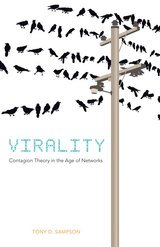 Virality: Contagion Theory in the Age of Networks
Tony D. Sampson
University of Minnesota Press, 2012 In this thought-provoking work, Tony D. Sampson presents a contagion theory fit for the age of networks. Unlike memes and microbial contagions, Virality does not restrict itself to biological analogies and medical metaphors. It instead points toward a theory of contagious assemblages, events, and affects. For Sampson, contagion is not necessarily a positive or negative force of encounter; it is how society comes together and relates. Sampson argues that a biological knowledge of contagion has been universally distributed by way of the rhetoric of fear used in the antivirus industry and other popular discourses surrounding network culture. This awareness is also detectable in concerns over too much connectivity, such as problems of global financial crisis and terrorism. Sampson’s “virality” is as established as that of the biological meme and microbe but is not understood through representational thinking expressed in metaphors and analogies. Rather, Sampson interprets contagion theory through the social relationalities first established in Gabriel Tarde’s microsociology and subsequently recognized in Gilles Deleuze’s ontological worldview. According to Sampson, the reliance on representational thinking to explain the social behavior of networking—including that engaged in by nonhumans such as computers—allows language to overcategorize and limit analysis by imposing identities, oppositions, and resemblances on contagious phenomena. It is the power of these categories that impinges on social and cultural domains. Assemblage theory, on the other hand, is all about relationality and encounter, helping us to understand the viral as a positively sociological event, building from the molecular outward, long before it becomes biological.
Virgil and Joyce: Nationalism and Imperialism in the Aeneid and Ulysses
Randall J. Pogorzelski
University of Wisconsin Press, 2016 James Joyce’s Ulysses is a modern version of Homer’s Odyssey, but Joyce—who was a better scholar of Latin than of Greek—also was deeply influenced by the Aeneid, Virgil’s epic poem about the journey of Aeneas and the foundation of Rome.
Joyce wrote Ulysses during the Irish War of Independence, when militants, politicians, and intellectuals were attempting to create a new Irish nation. Virgil wrote the Aeneid when, in the wake of decades of civil war, Augustus was founding what we now call the Roman Empire. Randall Pogorzelski applies modern theories of nationalism, intertextuality, and reception studies to illuminate how both writers confronted issues of nationalism, colonialism, political violence, and freedom during times of crisis.
 The Virgin and the Bride: Idealized Womanhood in Late Antiquity
Kate Cooper
Harvard University Press, 1996 During the last centuries of the Roman Empire, the prevailing ideal of feminine virtue was radically transformed: the pure but fertile heroines of Greek and Roman romance were replaced by a Christian heroine who ardently refused the marriage bed. How this new concept and figure of purity is connected with--indeed, how it abetted--social and religious change is the subject of Kate Cooper's lively book.
The Romans saw marital concord as a symbol of social unity--one that was important to maintaining the vigor and political harmony of the empire itself. This is nowhere more clear than in the ancient novel, where the mutual desire of hero and heroine is directed toward marriage and social renewal. But early Christian romance subverted the main outline of the story: now the heroine abandons her marriage partner for an otherworldly union with a Christian holy man. Cooper traces the reception of this new ascetic literature across the Roman world. How did the ruling classes respond to the Christian claim to moral superiority, represented by the new ideal of sexual purity? How did women themselves react to the challenge to their traditional role as matrons and matriarchs? In addressing these questions, Cooper gives us a vivid picture of dramatically changing ideas about sexuality, family, and morality--a cultural revolution with far-reaching implications for religion and politics, women and men.
The Virgin and the Bride offers a new look at central aspects of the Christianization of the Roman world, and an engaging discussion of the rhetoric of gender and the social meaning of idealized womanhood.
 The Virgin and the Dynamo: Public Murals in American Architecture, 1893–1917
Bailey Van Hook
Ohio University Press, 2003 The beaux-arts mural movement in America was fueled by energetic young artists and architects returning from training abroad. They were determined to transform American art and architecture to make them more thematically cosmopolitan and technically fluid and accomplished. The movement slowly coalesced around the decoration of mansions of the Gilded Age elite, mostly in New York, and of public buildings and institutions across the breadth of the country. The Virgin and the Dynamo: Public Murals in American Architecture, 1893-1917 is the first book in almost a century to concentrate exclusively on the beaux-arts mural movement in the United States. Beginning with a short history of the movement from its inception in Boston during the American Renaissance, Bailey Van Hook focuses on the movement’s public manifestations in the period between the World’s Columbian Exposition in Chicago in 1893 and the First World War. Professor Van Hook explores different aspects of the mural movement, the concept and meaning of “decoration,” the claim that murals are inherently democratic, the shift in preference from allegory to history, the gendered concept of modernity, the ideologies behind the iconography, and, finally, the decline of the movement when it began to be seen as old fashioned and anachronistic. The Virgin and the Dynamo raises our understanding of the beaux-arts movement to a new level. For the general reader, this illustrated history will explain many familiar representations of local and national values.
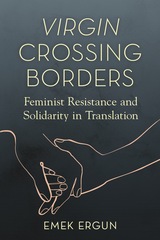 Virgin Crossing Borders: Feminist Resistance and Solidarity in Translation
Emek Ergun
University of Illinois Press, 2023 The Turkish-language release of Hanne Blank’s Virgin: The Untouched History is a politically engaged translation aimed at disrupting Turkey’s heteropatriarchal virginity codes. In Virgin Crossing Borders, Emek Ergun maps how she crafted her rendering of the text and draws on her experience and the book’s impact to investigate the interventionist power of feminist translation. Ergun’s comparative framework reveals translation’s potential to facilitate cross-border flows of feminist theories, empower feminist interventions, connect feminist activists across differences and divides, and forge transnational feminist solidarities. As she considers hopeful and woeful pictures of border crossings, Ergun invites readers to revise their views of translation’s role in transnational feminism and examine their own potential as ethically and politically responsible agents willing to search for new meanings. Sophisticated and compelling, Virgin Crossing Borders reveals translation’s vital role in exchanges of feminist theories, stories, and knowledge.
 Virgin Land: The American West as Symbol and Myth
Henry Nash Smith
Harvard University Press The spell that the West has always exercised on the American people had its most intense impact on American literature and thought during the nineteenth century. Henry Nash Smith shows, with vast comprehension, the influence of the nineteenth-century West in all its variety and strength, in special relation to social, economic, cultural, and political forces. He traces the myths and symbols of the Westward movement such as the general notion of a Westward-moving Course of Empire, the Wild Western hero, the virtuous yeoman-farmer—in such varied nineteenth-century writings as Leaves of Grass, the great corpus of Dime Novels, and most notably, Frederick Jackson Turner’s The Frontier in American History. Moreover, he synthesizes the imaginative expression of Western myths and symbols in literature with their role in contemporary politics, economics, and society, embodied in such forms as the idea of Manifest Destiny, the conflict in the American mind between idealizations of primitivism on the one hand and of progress and civilization on the other, the Homestead Act of 1862, and public-land policy after the Civil War.
The myths of the American West that found their expression in nineteenth-century words and deeds remain a part of every American’s heritage, and Smith, with his insight into their power and significance, makes possible a critical appreciation of that heritage.
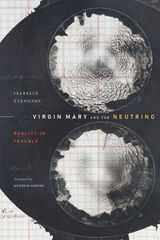 Virgin Mary and the Neutrino: Reality in Trouble
Isabelle Stengers
Duke University Press, 2023 In Virgin Mary and the Neutrino, first published in French in 2006 and here appearing in English for the first time, Isabelle Stengers experiments with the possibility of addressing modern practices not as a block but through their divergence from each other. Drawing on thinkers ranging from John Dewey to Gilles Deleuze, she develops what she calls an “ecology of practices” into a capacious and heterogeneous perspective that is inclusive of cultural and political forces but not reducible to them. Stengers first advocates for an approach to sciences that would emphasize the way each should be situated by the kind of relationships demanded by what it attempts to address. This approach turns away from the disabling scientific/nonscientific binary—like the opposition between the neutrino and the Virgin Mary. An ecology of practices instead stimulates an appetite for thinking reality not as an arbiter but as what we can relate to through the generation of diverging concerns and obligations.
Virgin Microbe: Essays on Dada
Michael White
Northwestern University Press, 2013 The essays in Virgin Microbe foreground thematic issues and advance recent theoretical agendas, such as the study of identity construction and the relationship between the avant-garde and mass culture, rather than focusing on biographies of individual Dadaists or centers of Dada activity. The authors represent a wider spectrum of disciplines and a broader international perspective than other recent collections on Dada. Ambitious in terms of contemporary academic interests, Virgin Microbe draws on a rich spectrum of intellectual traditions and contexts, prioritizing Dada’s metaphysical enquiries and its complicated connection to modernity.
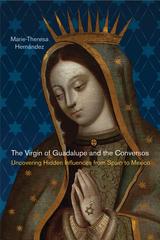 The Virgin of Guadalupe and the Conversos: Uncovering Hidden Influences from Spain to Mexico
Hernández, Marie-Theresa
Rutgers University Press, 2014 Hidden lives, hidden history, and hidden manuscripts. In The Virgin of Guadalupe and the Conversos, Marie-Theresa Hernández unmasks the secret lives of conversos and judaizantes and their likely influence onthe Catholic Churchin the New World.
The terms converso and judaizante are often used for descendants of Spanish Jews (the Sephardi, or Sefarditas as they are sometimes called), who converted under duress to Christianity in the fourteenth and fifteenth centuries. There are few, if any, archival documents that prove the existence of judaizantes after the Spanish expulsion of the Jews in 1492 and the Portuguese expulsion in 1497, as it is unlikely that a secret Jew in sixteenth-century Spain would have documented his allegiance to the Law of Moses, thereby providing evidence for the Inquisition.
On a Da Vinci Code – style quest, Hernández persisted in hunting for a trove of forgotten manuscripts at the New York Public Library. These documents, once unearthed, describe the Jewish/Christian religious beliefs of an early nineteenth-century Catholic priest in Mexico City, focusing on the relationship between the Virgin of Guadalupe and Judaism. With this discovery in hand, the author traces the cult of Guadalupe backwards to its fourteenth-century Spanish origins. The trail from that point forward can then be followed to its interface with early modern conversos and their descendants at the highest levels of the Church and the monarchy in Spain and Colonial Mexico. She describes key players who were somehow immune to the dangers of the Inquisition and who were allowed the freedom to display, albeit in a camouflaged manner, vestiges of their family's Jewish identity.
By exploring the narratives produced by these individuals, Hernández reveals the existence of those conversos and judaizantes who did not return to the “covenantal bond of rabbinic law,” who did not publicly identify themselves as Jews, and who continued to exhibit in their influential writings a covert allegiance and longing for a Jewish past. This is a spellbinding and controversial story that offers a fresh perspective on the origins and history of conversos.
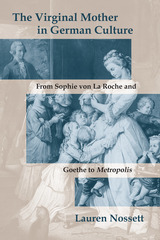 The Virginal Mother in German Culture: From Sophie von La Roche and Goethe to Metropolis
Lauren Nossett
Northwestern University Press, 2019 The Virginal Mother in German Culture presents an innovative and thorough analysis of the contradictory obsession with female virginity and idealization of maternal nature in Germany from the late eighteenth to the early twentieth centuries. Lauren Nossett explores how the complex social ideal of woman as both a sexless and maternal being led to the creation of a unique figure in German literature: the virginal mother. At the same time, she shows that the literary depictions of virginal mothers correspond to vilified biological mother figures, which point to a perceived threat in the long nineteenth century of the mother’s procreative power.
Examining the virginal mother in the first novel by a German woman (Sophie von La Roche), canonical texts by Goethe, nineteenth-century popular fiction, autobiographical works, and Thea von Harbou’s novel Metropolis and Fritz Lang’s film by the same name, this book highlights the virginal mother at pivotal moments in German history and cultural development: the entrance of women into the literary market, the Goethezeit, the foundation of the German Empire, and the volatile Weimar Republic. The Virginal Mother in German Culture will be of interest to students and scholars of German literature, history, cultural and social studies, and women’s studies.
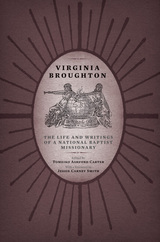 Virginia Broughton: The Life and Writings of a Missionary
Tomeiko Ashford Carter
University of Tennessee Press, 2010
For more than half a century, Virginia E. Walker Broughton (1856–1934) worked tirelessly to uplift black communities, and especially black women, throughout Tennessee. Born into an elite African American family in Nashville, she began her professional career as a teacher and later became one of the most prominent domestic missionaries in the National Baptist Convention, U.S.A., as well as an accomplished speaker and writer. This annotated collection is the first scholarly work devoted entirely to Broughton’s life and writings.
The book for which Broughton is best known, Twenty Year’s [sic] Experience of a Missionary, was an autobiography first published in 1907 and reprinted in 1988 as part of a scholarly edition of spiritual narratives by black women. Recently, in the archives of Fisk University, Broughton’s alma mater, Tomeiko Ashford Carter discovered an earlier autobiographical work, A Brief Sketch of the Life and Labors of Mrs. V. W. Broughton, Bible Band Missionary, for Middle and West Tennessee, which was distributed at the famous Atlanta Cotton States and International Exposition of 1895. While both autobiographies portray Broughton as an important religious figure for whom missionary work became a saving grace, Life and Labors is more revealing of key facts about Broughton and her family, and it situates them more clearly among the nation’s black elite. This volume not only brings Life and Labors back into print but also collects various other pieces Broughton produced during her long career.
Among those other writings is a 1904 booklet titled Woman’s Work: As Gleaned from the Women of the Bible, and the Bible Women of Modern Times, which recognizes the prominence of the female in Christian theology and shows how Broughton anticipated the work of present-day feminist and womanist theologians. Several “training course” articles that Broughton wrote for a National Baptist newspaper, covering such topics as the Christian deportment of women and the need for black spiritual literature, are also gathered here, as are a program she devised for systematic Bible study and a brief article, published just a few years before her death, in which she describes some of her missionary field work. Complementing these primary materials are an extensive critical introduction and notes by Carter, a Walker-Broughton family tree, and a chronology of Broughton’s life.
As this collection makes clear, Virginia Broughton was strongly committed to making the work of black religious women an ongoing intellectual enterprise. In these pages, she emerges as both a dedicated missionary and a formidable religious scholar.
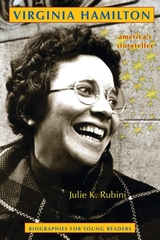 Virginia Hamilton: America’s Storyteller
Julie K. Rubini
Ohio University Press, 2017 A Bank Street College of Education Best Children’s Book of 2018 (Outstanding Merit selection) • Finalist, 2018 Ohioana Book Award Long before she wrote The House of Dies Drear, M. C. Higgins, the Great, and many other children’s classics, Virginia Hamilton grew up among her extended family near Yellow Springs, Ohio, where her grandfather had been brought as a baby through the Underground Railroad. The family stories she heard as a child fueled her imagination, and the freedom to roam the farms and woods nearby trained her to be a great observer. In all, Hamilton wrote forty-one books, each driven by a focus on “the known, the remembered, and the imagined”—particularly within the lives of African Americans. Over her thirty-five-year career, Hamilton received every major award for children’s literature. This new biography gives us the whole story of Virginia’s creative genius, her passion for nurturing young readers, and her clever way of crafting stories they’d love.
Virginia Hasn't Always Been for Lovers: Interracial Marriage Bans and the Case of Richard and Mildred Loving
Phyl Newbeck
Southern Illinois University Press, 2004 This landmark volume chronicles the history of laws banning interracial marriage in the United States with particular emphasis on the case of Richard and Mildred Loving, a white man and a black woman who were convicted by the state of Virginia of the crime of marrying across racial lines in the late 1950s. The Lovings were not activists, but their battle to live together as husband and wife in their home state instigated the 1967 U.S. Supreme Court ruling that antimiscegenation laws were unconstitutional, which ultimately resulted in the overturning of laws against interracial marriage that were still in effect in sixteen states by the late 1960s.
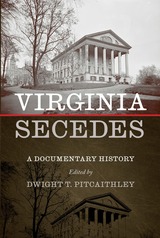 Virginia Secedes: A Documentary History
Dwight Pitcaithley
University of Tennessee Press, 2023 In January 1861, Virginia possessed the largest population of enslaved people within the United States. The institution of slavery permeated the state’s social, political, economic, and legal systems. While loyalty to the Union was strong in western Virginia as Civil War loomed, the state’s elected officials painted Abraham Lincoln and Republicans as abolitionists and reaffirmed Virginia’s commitment to slavery and white supremacy.
In this annotated volume of primary source documents from Secession Winter, Dwight T. Pitcaithley presents speeches by Virginians from the United States Congress, the Washington Peace Conference which had been called by Virginia’s general assembly, and the state’s secession convention to provide readers a glimpse into Virginia’s ultimate decision to secede from the Union. In his introductory analysis of the trial confronting Virginia’s leadership, Pitcaithley demonstrates that most elected officials wanted Virginia to remain in the Union—but only if Republicans agreed to protect slavery and guarantee its future. While secessionists rightly predicted that the incoming Lincoln administration would refuse to agree to these concessions, Unionists claimed that disunion would ultimately undermine slavery and lead to abolition regardless.
Virginia deliberated longer and proposed more constitutional solutions to avoid secession than any other state. Only after the Confederate bombardment of Fort Sumter and President Lincoln’s request for troops to suppress the “insurrection” did Virginia turn from saving the Union to leaving it.
Throughout Pitcaithley’s collection, one theme remains clear: that slavery and race—not issues over tariffs—were driving Virginia’s debates over secession. Complete with a Secession Winter timeline, extensive bibliography, and questions for discussion, Virginia Secedes: A Documentary History is an invaluable resource for historians and students alike.
Virginia Sorensen: Pioneering Mormon Author
Stephen Carter
Signature Books, 2023 In the 1940s she was a New York Times bestselling author—of Mormon novels. In the 1950s she won a Newbery Medal, the highest honor in children’s literature. But today, hardly anyone knows her name.
Who is Virginia Sorensen? How did a girl who grew up in a tiny Utah town in the 1920s become a globetrotting, award-winning author? And why has she been forgotten?
Though she wrote them four generations ago, Sorensen’s novels are more urgent today than ever, addressing issues both Mormons and former Mormons grapple with. Her body of work is a treasure trove of insight, compassion, and storytelling waiting to be rediscovered.
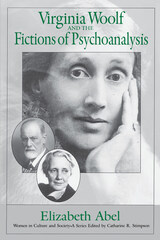 Virginia Woolf and the Fictions of Psychoanalysis
Elizabeth Abel
University of Chicago Press, 1989 "A stunning, brilliant, absolutely compelling reading of Woolf through the lens of Kleinian and Freudian psychoanalytic debates about the primacy of maternality and paternality in the construction of consciousness, gender, politics, and the past, and of psychoanalysis through the lens of Woolf's novels and essays. In addition to transforming our understanding of Woolf, this book radically expands our understanding of the historicity and contingent construction of psychoanalytic theory and our vision of the potential of psychoanalytic feminism."—Nancy J. Chodorow, University of California at Berkeley
"Virginia Woolf and the Fictions of Psychoanalysis brings Woolf's extraordinary craftsmanship back into view; the book combines powerful claims about sexual politics and intellectual history with the sort of meticulous, imaginative close reading that leaves us, simply, seeing much more in Woolf's words than we did before. It is the most exciting book on Woolf to come along in some time."—Lisa Ruddick, Modern Philology
 Virginia Woolf Icon
Brenda R. Silver
University of Chicago Press, 1999 This is a book about "Virginia Woolf": the face that sells more postcards than any other at Britain's National Portrait Gallery, the name that Edward Albee's play linked with fear, the cultural icon so rich in meanings that it has been used to market everything from the New York Review of Books to Bass Ale. Brenda Silver analyzes Virginia Woolf's surprising visibility in both high and popular culture, showing how her image and authority have been claimed or challenged in debates about art, politics, anger, sexuality, gender, class, the canon, feminism, race, and fashion.
From Virginia Woolf's 1937 appearance on the cover of Time magazine to her current roles in theater, film, and television, Silver traces the often contradictory representations and the responses they provoke, highlighting the recurring motifs that associate Virginia Woolf with fear. By looking more closely at who is afraid and the contexts in which she is perceived to be frightening, Silver illustrates how Virginia Woolf has become the site of conflicts about cultural boundaries and legitimacy that continue to rage today.
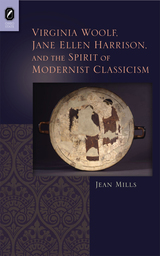 Virginia Woolf, Jane Ellen Harrison, and the Spirit of Modernist Classicism
Jean Mills
Ohio State University Press, 2014 In a work that re-investigates archival materials and deploys an innovative theoretical framework, Jean Mills explores the intellectual and political relationship between Virginia Woolf and the Cambridge classicist Jane Ellen Harrison. Virginia Woolf, Jane Ellen Harrison, and the Spirit of Modernist Classicism discovers an intimate connection crucial to Woolf’s professional identity and intellectual and artistic development in Harrison’s controversial, feminist interpretations of Greek mythology. Mills argues that cross-reading Jane Harrison and Virginia Woolf exposes a distinctive relationship between two women intellectuals, one that does not rehearse the linearity of influence but instead demonstrates the intricacy of intertextuality—an active and transformative use of one body of writing by another writer—that makes of Virginia Woolf’s modernism a specifically feminist amplification. This cross-reading reveals a dimension of modernism that has been overlooked or minimized: Mills demonstrates that the questions preoccupying Harrison also resonated with Woolf, who adapted Harrison’s ideas to her own intellectual, political, and literary pursuits.
To an extent, Virginia Woolf, Jane Ellen Harrison, and the Spirit of Modernist Classicism participates in an act of classical recovery. It is an effort to revive and reclaim Harrison’s work and to illustrate the degree to which her cultural, political, and scholastic example informed one of the major modernist voices of the twentieth century.
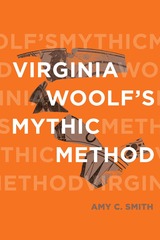 Virginia Woolf’s Mythic Method
Amy C. Smith
Ohio State University Press, 2022 In Virginia Woolf’s Mythic Method, Amy C. Smith reinvigorates scholarly analysis of myth in Virginia Woolf’s fiction by examining how Woolf engaged social and political issues in her work. Through close readings of Mrs. Dalloway, To the Lighthouse, and Between the Acts, Smith argues that Woolf develops a paratactic method of alluding to Greek myth that is shaped by the style of archaic oral literature and her intersectional feminist insights. By revising such famously paradoxical figures as the Great Goddess, the Eleusinian deities, Dionysus, Odysseus, and the Sirens, Woolf illustrates the links between epistemological and metaphysical assumptions and war, empire, patriarchy, capitalism, and fascism. At the same time, her use of parataxis to invoke ancient myth unsettles authorial control and empowers readers to participate in making meaning out of her juxtaposed fragments. In contrast to T. S. Eliot’s more prominent mythic method, which seeks to control the anarchy of modern life, Woolf’s paratactic method envisions more livable forms of sociality by destabilizing meaning in her novels, an agenda that aligns better with our contemporary understandings of modernism.
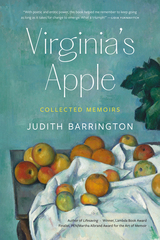 Virginia's Apple: Collected Memoirs
Judith Barrington
Oregon State University Press, 2024 Virginia’s Apple is a collection of fourteen literary memoirs that explore pivotal episodes across poet and writer Judith Barrington’s life. Artfully crafted, each one stands alone yet they are linked—characters reappear and, taken together, they create a larger narrative. The content is wide-ranging: the early days of the Second Wave of feminism—the exhilaration, the wildness, the love affairs, the surprises, and the self-invention, as well as the confusion and conflicts of those heady times; navigating a sometimes precarious existence as an out lesbian long before it was commonplace; leaving England and becoming an American citizen; finding a life partner; and growing old with an inherited disability. The author’s friendship with the distinguished poet Adrienne Rich is the subject of one story. In another, there’s an appearance by the notorious murderer, Lord Lucan, whose wife was a chance acquaintance. These stories are laced with humor and joy, while pulsing below the surface is the slow unfolding of delayed grief over her parents’ drowning when she was nineteen, revealing how such a loss can shape a life.
Virgin-Kayenta Cultural Relationships: UUAP 79
C. Melvin Aikens
University of Utah Press, 1966 AKA Glen Canyon Series Number 29. This paper reports on the prehistory of the Virgin branch of the Anasazi in the Southwest. It incorporates information from sites excavated in the early 1960s in southwest Utah to reassess earlier studies of Virgin Anasazi culture that were based primarily on pottery.
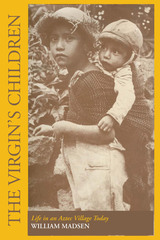 The Virgin's Children: Life in an Aztec Village Today
By William Madsen
University of Texas Press, 1960 An absorbing account of the descendants of the ancient Aztecs and of the survival of their culture into the twentieth century in the Valley of Mexico is presented in this fascinating volume. Focusing on San Francisco Tecospa—a village of some eight hundred Indians who still spoke Nahuatl, whose lives were dominated by supernaturalism, and who observed with only slight modification much of their Aztec heritage—this story bears out the anthropological principle that innovations are most likely to be accepted when they are useful, communicable, and compatible with established tradition. Nowhere is the Indian genius for combining the old and the new better exemplified than in the story of how the Virgin of Guadalupe came to fulfill the role formerly played by the pagan goddess Tonantzin and of how Christian saints replaced the Aztec gods. At the time of this study, the Tecospans still called the Catholic Virgin Tonantzin, but their concept of the mother goddess had changed profoundly since Aztec times. Tonantzin the Pagan, a hideous goddess with claws on her hands and feet and with snakes entwining her face, wore a necklace of hearts, hands, and skulls to represent her insatiable appetite for corpses. Tonantzin the Catholic—also called Guadalupe—is a beautiful and benevolent mother deity who repeatedly stays God’s anger against her Mexican children and answers the prayers of the poorest Indian, with no thought of return. In Tecospa the road to social recognition lay in the performance of religious works, and the neglect of ritual obligation subjected both the individual and the community to the anger of supernaturals who punished with illness or other misfortune. Religion was inextricably a part of every phase of life, and it is the whole life of the Aztecan that is recorded here: fiesta, clothing, food, agricultural practices, courtship, marriage, pregnancy and childbirth, death, witchcraft and its cures, medical practices and attitudes, houses and home life, ethics, and the hot-cold complex that classifies everything in the Tecospan universe from God to Bromo-Seltzer. With a marked simplicity of style and language William Madsen has produced a profoundly significant anthropological study that is delightful reading from the first sentence to the last. The drawings, the work of a ten-year-old Tecospan lad, are remarkable for their penetrating insight into the culture.
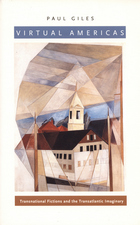 Virtual Americas: Transnational Fictions and the Transatlantic Imaginary
Paul Giles
Duke University Press, 2002 Arguing that limited nationalist perspectives have circumscribed the critical scope of American Studies scholarship, Virtual Americas advocates a comparative criticism that illuminates the work of well-known literary figures by defamiliarizing it—placing it in unfamiliar contexts. Paul Giles looks at a number of canonical nineteenth- and twentieth-century American writers by focusing on their interactions with British culture. He demonstrates how American authors from Herman Melville to Thomas Pynchon have been compulsively drawn to negotiate with British culture so that their nationalist agendas have emerged, paradoxically, through transatlantic dialogues. Virtual Americas ultimately suggests that conceptions of national identity in both the United States and Britain have emerged through engagement with—and, often, deliberate exclusion of—ideas and imagery emanating from across the Atlantic. Throughout Virtual Americas Giles focuses on specific examples of transatlantic cultural interactions such as Frederick Douglass’s experiences and reputation in England; Herman Melville’s satirizing fictions of U.S. and British nationalism; and Vladimir Nabokov’s critique of European high culture and American popular culture in Lolita. He also reverses his perspective, looking at the representation of San Francisco in the work of British-born poet Thom Gunn and Sylvia Plath’s poetic responses to England. Giles develops his theory about the need to defamiliarize the study of American literature by considering the cultural legacy of Surrealism as an alternative genealogy for American Studies and by examining the transatlantic dimensions of writers such as Henry James and Robert Frost in the context of Surrealism.
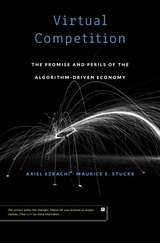 Virtual Competition: The Promise and Perils of the Algorithm-Driven Economy
Ariel Ezrachi and Maurice E. Stucke
Harvard University Press, 2016 “A fascinating book about how platform internet companies (Amazon, Facebook, and so on) are changing the norms of economic competition.”
—Fast Company
Shoppers with a bargain-hunting impulse and internet access can find a universe of products at their fingertips. But is there a dark side to internet commerce? This thought-provoking exposé invites us to explore how sophisticated algorithms and data-crunching are changing the nature of market competition, and not always for the better. Introducing into the policy lexicon terms such as algorithmic collusion, behavioral discrimination, and super-platforms, Ariel Ezrachi and Maurice E. Stucke explore the resulting impact on competition, our democratic ideals, our wallets, and our well-being.
“We owe the authors our deep gratitude for anticipating and explaining the consequences of living in a world in which black boxes collude and leave no trails behind. They make it clear that in a world of big data and algorithmic pricing, consumers are outgunned and antitrust laws are outdated, especially in the United States.”
—Science
“A convincing argument that there can be a darker side to the growth of digital commerce. The replacement of the invisible hand of competition by the digitized hand of internet commerce can give rise to anticompetitive behavior that the competition authorities are ill equipped to deal with.”
—Burton G. Malkiel, Wall Street Journal
“A convincing case for the need to rethink competition law to cope with algorithmic capitalism’s potential for malfeasance.”
—John Naughton, The Observer
 Virtual Gender: Fantasies of Subjectivity and Embodiment
Mary Ann O'Farrell and Lynne Vallone, Editors
University of Michigan Press, 1999 This collection breaks new ground in the area of gender studies both because it creates a name for gender fantasy--virtual gender--that introduces a new understanding of the concept, and in expanding the idea of virtuality to include people and events in history. The essays in Virtual Gender help identify and name the persistent cultural desire for an imaginative space in which to "put on" alternative gender identities, while examining as well the equally persistent and consequent critique of that desire.The sweep of the volume's coverage is impressive, ranging across historical periods and academic disciplines, as contributors consider the place of the body in gender fantasy and the consequences of gender fantasy for real people and real bodies. The essays investigate figures and topics including Amelia Earhart, soap-opera chat groups, Elizabeth I, mesmerism, lesbianism in the early modern period, cybergames, women in the federalist period, the transgendered body, and performance art. Also examined are the status of embodiment, the origins of gender, gender politics, the pains of subjectivity, the uses of utopian fantasy, technological advances and information technology, the experience of gendered communities, and the role of gender in global politics. Contributors include Harriette Andreadis, Seyla Benhabib, Charlotte Canning, Bernice Hausman, Janel Mueller, Mary Ann O'Farrell, Kay Schaffer, Sidonie Smith, Carroll Smith-Rosenberg, Helen F. Thompson, Lynne Vallone, and Robyn Warhol. The book will appeal to an interdisciplinary audience of scholars, critics, and students with interests in gender, identity, and cyberculture.
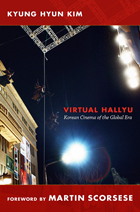 Virtual Hallyu: Korean Cinema of the Global Era
Kyung Hyun Kim
Duke University Press, 2011 “[T]his fine book . . . . enlarges our vision of one of the great national cinematic flowerings of the last decade.”—Martin Scorsese, from the foreword In the late 1990s, South Korean film and other cultural products, broadly known as hallyu (Korean wave), gained unprecedented international popularity. Korean films earned an all-time high of $60.3 million in Japan in 2005, and they outperformed their Hollywood competitors at Korean box offices. In Virtual Hallyu, Kyung Hyun Kim reflects on the precariousness of Korean cinema’s success over the past decade. Arguing that state film policies and socioeconomic factors cannot fully explain cinema’s true potentiality, Kim draws on Deleuze’s concept of the virtual—according to which past and present and truth and falsehood coexist—to analyze the temporal anxieties and cinematic ironies embedded in screen figures such as a made-in-the-USA aquatic monster (The Host), a postmodern Chosun-era wizard (Jeon Woo-chi), a schizo man-child (Oasis), a weepy North Korean terrorist (Typhoon), a salary man turned vengeful fighting machine (Oldboy), and a sick nationalist (the repatriated colonial-era film Spring of Korean Peninsula). Kim maintains that the full significance of hallyu can only be understood by exposing the implicit and explicit ideologies of protonationalism and capitalism that, along with Korea’s ambiguous post-democratization and neoliberalism, are etched against the celluloid surfaces.
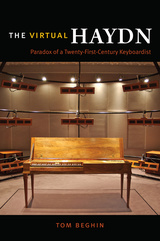 The Virtual Haydn: Paradox of a Twenty-First-Century Keyboardist
Tom Beghin
University of Chicago Press, 2015 Haydn’s music has been performed continuously for more than two hundred years. But what do we play, and what do we listen to, when it comes to Haydn? Can we still appreciate the rich rhetorical nuances of this music, which from its earliest days was meant to be played by professionals and amateurs alike?
With The Virtual Haydn, Tom Beghin—himself a professional keyboard player—delves deeply into eighteenth-century history and musicology to help us hear a properly complex Haydn. Unusually for a scholarly work, the book is presented in the first person, as Beghin takes us on what is clearly a very personal journey into the past. When a discussion of a group of Viennese sonatas, for example, leads him into an analysis of the contemporary interest in physiognomy, Beghin applies what he learns about the role of facial expressions during his own performance of the music. Elsewhere, he analyzes gesture and gender, changes in keyboard technology, and the role of amateurs in eighteenth-century musical culture.
The resulting book is itself a fascinating, bravura performance, one that partakes of eighteenth-century idiosyncrasy while drawing on a panoply of twenty-first-century knowledge.
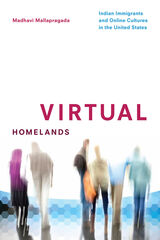 Virtual Homelands: Indian Immigrants and Online Cultures in the United States
Madhavi Mallapragada
University of Illinois Press, 2014 The internet has transformed the idea of home for Indians and Indian Americans. In Virtual Homelands: Indian Immigrants and Online Cultures in the United States, Madhavi Mallapragada analyzes home pages and other online communities organized by diasporic and immigrant Indians from the late 1990s through the social media period. Engaging the shifting aspects of belonging, immigrant politics, and cultural citizenship by linking the home page, household, and homeland as key sites, Mallapragada illuminates the contours of belonging and reveals how Indian American struggles over it trace back to the web's active mediation in representing, negotiating, and reimagining "home." As Mallapragada shows, ideologies around family and citizenship shift to fit the transnational contexts of the online world and immigration. At the same time, the tactical use of the home page to make gender, racial, and class struggles visible and create new modes for belonging implicates the web within complex political and cultural terrain. On e-commerce, community, and activist sites, the recasting of home and homeland online points to intrusion by public agents such as the state, the law, and immigration systems in the domestic, the private, and the familial. Mallapragada reveals that the home page may mobilize to reproduce conservative narratives of Indian immigrants' familial and citizenship cultures, but the reach of a website extends beyond the textual and discursive to encompass the institutions shaping it, as the web unmakes and remakes ideas of "India" and "America."
 Virtual Inequality: Beyond the Digital Divide
Karen Mossberger, Caroline J. Tolbert, and Mary Stansbury
Georgetown University Press, 2003 That there is a "digital divide"—which falls between those who have and can afford the latest in technological tools and those who have neither in our society—is indisputable. Virtual Inequality redefines the issue as it explores the cascades of that divide, which involve access, skill, political participation, as well as the obvious economics. Computer and Internet access are insufficient without the skill to use the technology, and economic opportunity and political participation provide primary justification for realizing that this inequality is a public problem and not simply a matter of private misfortune. Defying those who say the divide is growing smaller, this volume, based on a unique national survey that includes data from over 1800 respondents in low-income communities, shows otherwise. In addition to demonstrating why disparities persist in such areas as technological abilities, the survey also shows that the digitally disadvantaged often share many of the same beliefs as their more privileged counterparts. African-Americans, for instance, are even more positive in their attitudes toward technology than whites are in many respects, contrary to conventional wisdom. The rigorous research on which the conclusions are based is presented accessibly and in an easy-to-follow manner. Not content with analysis alone, nor the untangling of the complexities of policymaking, Virtual Inequality views the digital divide compassionately in its human dimensions and recommends a set of practical and common-sense policy strategies. Inequality, even in a virtual form this book reminds us, is unacceptable and a situation that society is compelled to address.
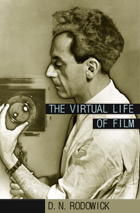 The Virtual Life of Film
D. N. Rodowick
Harvard University Press, 2007 As almost (or, truly, virtually) every aspect of making and viewing movies is replaced by digital technologies, even the notion of “watching a film” is fast becoming an anachronism. With the likely disappearance of celluloid film stock as a medium, and the emergence of new media competing for an audience, what will happen to cinema—and to cinema studies? In the first of two books exploring this question, D. N. Rodowick considers the fate of film and its role in the aesthetics and culture of moviemaking and viewing in the twenty-first century.
Here Rodowick proposes and examines three different critical responses to the disappearance of film in relation to other time-based media, and to the study of contemporary visual culture. Film, he suggests, occupies a special place in the genealogy of the arts of the virtual: while film disappears, cinema persists—at least in the narrative forms imagined by Hollywood since 1915. Rodowick also observes that most so-called “new media” are fashioned upon a cinematic metaphor. His book helps us see how digital technologies are serving, like television and video before them, to perpetuate the cinematic as the mature audiovisual culture of the twentieth century—and, at the same time, how they are preparing the emergence of a new audiovisual culture whose broad outlines we are only just beginning to distinguish.
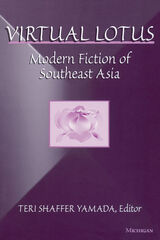 Virtual Lotus: Modern Fiction of Southeast Asia
Teri Shaffer Yamada, Editor
University of Michigan Press, 2002 Virtual Lotus is the first anthology to represent diverse writers throughout Southeast Asia. Their short stories reflect the tremendous social, political, and cultural changes experienced in the region during an age of rapid modernization. Both award-winning writers and new talent are represented, including Pramoedya Ananta Toer (Indonesia), Shahnon Ahmad (Malaysia), and Duong Thu Huong (Vietnam). With keen wit, satire, and pathos their stories poignantly illustrate contemporary life and literary currents in Southeast Asia during the twentieth century.
Short introductions to each story provide a sketch of the country's literary history, revealing the interaction between individual writers and their sociopolitical situations. Many of the stories are ethnographic and provide snapshots of cultures at a specific historical moment. The stories also reflect gender balance, diversity of style, and quality of literary expression. Exploring everything from the realities of being a middle-aged woman in Burma in the witty drama "An Umbrella" to the difficult choice between appeasing a troubled Vietnamese community or tending to an ailing father in "Tu Ben the Actor," this collection is sure to appeal to a variety of readers the world over.
This anthology will be useful in courses in comparative translation and culture, postcolonial studies, political science, Asian history, and gender studies. It is also appropriate for a literary reading public interested in comparative world literature.
Teri Shaffer Yamada is Associate Professor, California State University, Long Beach.
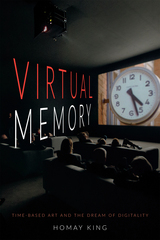 Virtual Memory: Time-Based Art and the Dream of Digitality
Homay King
Duke University Press, 2015 In Virtual Memory, Homay King traces the concept of the virtual through the philosophical works of Henri Bergson, Gilles Deleuze, and Giorgio Agamben to offer a new framework for thinking about film, video, and time-based contemporary art. Detaching the virtual from its contemporary associations with digitality, technology, simulation, and speed, King shows that using its original meaning—which denotes a potential on the cusp of becoming—provides the means to reveal the "analog" elements in contemporary digital art. Through a queer reading of the life and work of mathematician Alan Turing, and analyses of artists who use digital technologies such as Christian Marclay, Agnès Varda, and Victor Burgin, King destabilizes the analog/digital binary. By treating the virtual as the expression of powers of potential and change and of historical contingency, King explains how these artists transcend distinctions between disembodiment and materiality, abstraction and tangibility, and the unworldly and the earth-bound. In so doing, she shows how their art speaks to durational and limit-bound experience more than contemporary understandings of the virtual and digital would suggest.
 Virtual Migration: The Programming of Globalization
A. Aneesh
Duke University Press, 2006 Workers in India program software applications, transcribe medical dictation online, chase credit card debtors, and sell mobile phones, diet pills, and mortgages for companies based in other countries around the world. While their skills and labor migrate abroad, these workers remain Indian citizens, living and working in India. A. Aneesh calls this phenomenon “virtual migration,” and in this groundbreaking study he examines the emerging “transnational virtual space” where labor and vast quantities of code and data cross national boundaries, but the workers themselves do not. Through an analysis of the work of computer programmers in India working for the American software industry, Aneesh argues that the programming code connecting globally dispersed workers through data servers and computer screens is the key organizing structure behind the growing phenomenon of virtual migration. This “rule of code,” he contends, is a crucial and underexplored aspect of globalization. Aneesh draws on the sociology of science, social theory, and research on migration to illuminate the practical and theoretical ramifications of virtual migration. He combines these insights with his extensive ethnographic research in offices in three locations in India—in Delhi, Gurgaon, and Noida—and one in New Jersey. Aneesh contrasts virtual migration with “body shopping,” the more familiar practice of physically bringing programmers from other countries to work on site, in this case, bringing them from India to New Jersey. A significant contribution to the social theory of globalization, Virtual Migration maps the expanding transnational space where globalization is enacted via computer programming code.
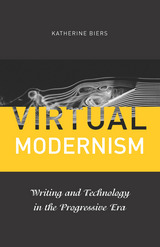 Virtual Modernism: Writing and Technology in the Progressive Era
Katherine Biers
University of Minnesota Press, 2013 In Virtual Modernism, Katherine Biers offers a fresh view of the emergence of American literary modernism from the eruption of popular culture in the early twentieth century. Employing dynamic readings of the works of Stephen Crane, Henry James, James Weldon Johnson, Djuna Barnes, and Gertrude Stein, she argues that American modernist writers developed a “poetics of the virtual” in response to the rise of mass communications technologies before World War I. These authors’ modernist formal experimentation was provoked by the immediate, individualistic pleasures and thrills of mass culture. But they also retained a faith in the representational power of language—and the worth of common experience—more characteristic of realism and naturalism. In competition with new media experiences such as movies and recorded music, they simultaneously rejected and embraced modernity. Biers establishes the virtual poetics of these five writers as part of a larger “virtual turn” in the United States, when a fascination with the writings of Henri Bergson, William James, and vitalist philosophy—and the idea of virtual experience—swept the nation. Virtual Modernism contends that a turn to the virtual experience of language was a way for each of these authors to carve out a value for the literary, both with and against the growth of mass entertainments. This technologically inspired reengagement with experience was formative for American modernism. Situated at the crossing points of literary criticism, philosophy, media studies, and history, Virtual Modernism provides an examination of Progressive Era preoccupations with the cognitive and corporeal effects of new media technologies that traces an important genealogy of present-day concerns with virtuality.
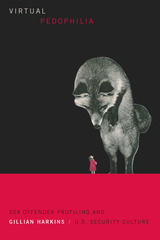 Virtual Pedophilia: Sex Offender Profiling and U.S. Security Culture
Gillian Harkins
Duke University Press, 2020 In Virtual Pedophilia Gillian Harkins traces how by the end of the twentieth century the pedophile as a social outcast evolved into its contemporary appearance as a virtually normal white male. The pedophile's alleged racial and gender normativity was treated as an exception to dominant racialized modes of criminal or diagnostic profiling. The pedophile was instead profiled as a virtual figure, a potential threat made visible only when information was transformed into predictive image. The virtual pedophile was everywhere and nowhere, slipping through day-to-day life undetected until people learned how to arm themselves with the right combination of visually predictive information. Drawing on television, movies, and documentaries such as Law and Order: SVU, To Catch a Predator, Mystic River, and Capturing the Friedmans, Harkins shows how diverse U.S. audiences have been conscripted and trained to be lay detectives who should always be on the lookout for the pedophile as virtual predator. In this way, the perceived threat of the pedophile legitimated increased surveillance and ramped-up legal strictures that expanded the security apparatus of the carceral state.
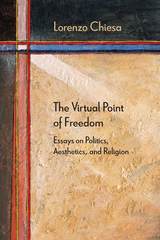 The Virtual Point of Freedom: Essays on Politics, Aesthetics, and Religion
Lorenzo Chiesa
Northwestern University Press, 2016 The principal motif that runs throughout The Virtual Point of Freedom is a confrontation with the discourse of freedom, or, more specifically, the falsely transgressive ideal of a total emancipation that would know no constraints. Far from delineating a supposed “subject of freedom” that would allegedly overcome alienation once and for all, the seven chapters in Chiesa’s book seek to unfold an innovative reading of the dialectical coincidence between dis-alienation and re-alienation in politics, aesthetics, and religion, using psychoanalysis as a privileged critical tool. Topics include Pier Paolo Pasolini’s attack on the visual and biological degeneration of bodies brought about by pleasure-seeking “liberal” consumerism, Giorgio Agamben’s and Slavoj Žižek’s conflicting negotiations with the Christian tradition of “poverty” and “inappropriateness” as potential redemption, and Alain Badiou’s inability to develop a philosophical anthropology that could sustain a coherent politics of emancipation. The book concludes by sketching out the figure of the partisan, a subject who makes it possible to conceive of an intersection between provisional morality and radical politics.
Virtual Reality and Light Field Immersive Video Technologies for Real-World Applications
Gauthier Lafruit
The Institution of Engineering and Technology, 2022 Virtual reality (VR) refers to technologies that use headsets to generate realistic images, sounds and other sensations that replicate a real-world environment or create an imaginary setting. VR also simulates a user's physical presence in this environment. In virtual reality, six degrees of freedom allows users to not only look around, but also to move around the virtual world and look from above, below or behind objects. To have a true VR experience, the hardware must provide six degrees of freedom, using both orientation tracking (rotational) and positional tracking (translation).
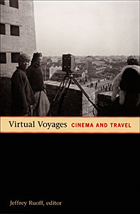 Virtual Voyages: Cinema and Travel
Jeffrey Ruoff, ed.
Duke University Press, 2006 Virtual Voyages illuminates the pivotal role of travelogues within the history of cinema. The travelogue dominated the early cinema period from 1895 to 1905, was central to the consolidation of documentary in the 1910s and 1920s, proliferated in the postwar era of 16mm distribution, and today continues to flourish in IMAX theaters and a host of non-theatrical venues. It is not only the first chapter in the history of documentary but also a key element of ethnographic film, home movies, and fiction films. In this collection, leading film scholars trace the intersection of technology and ideology in representations of travel across a wide variety of cinematic forms. In so doing, they demonstrate how attention to the role of travel imagery in film blurs distinctions between genres and heightens awareness of cinema as a technology for moving through space and time, of cinema itself as a mode of travel. Some contributors take a broad view of travelogues by examining the colonial and imperial perspectives embodied in early travel films, the sensation of movement that those films evoked, and the role of live presentations such as lectures in our understanding of travelogues. Other essays are focused on specific films, figures, and technologies, including early travelogues encouraging Americans to move to the West; the making and reception of the documentary Grass (1925), shot on location in Turkey, Syria, Iraq, and Iran; the role of travel imagery in 1930s Hollywood cinema; the late-twentieth-century 16mm illustrated-lecture industry; and the panoramic possibilities presented by IMAX technologies. Together the essays provide a nuanced appreciation of how, through their representations of travel, filmmakers actively produce the worlds they depict. Contributors. Rick Altman, Paula Amad, Dana Benelli, Peter J. Bloom, Alison Griffiths, Tom Gunning, Hamid Naficy, Jennifer Lynn Peterson, Lauren Rabinovitz, Jeffrey Ruoff, Alexandra Schneider, Amy J. Staples
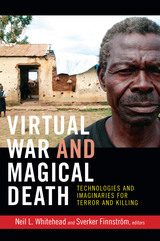 Virtual War and Magical Death: Technologies and Imaginaries for Terror and Killing
Neil L. Whitehead and Sverker Finnström, eds.
Duke University Press, 2013 Virtual War and Magical Death is a provocative examination of the relations between anthropology and contemporary global war. Several arguments unite the collected essays, which are based on ethnographic research in varied locations, including Guatemala, Uganda, and Tanzania, as well as Afghanistan, Pakistan, Iraq, and the United States. Foremost is the contention that modern high-tech warfare—as it is practiced and represented by the military, the media, and civilians—is analogous to rituals of magic and sorcery. Technologies of "virtual warfare," such as high-altitude bombing, remote drone attacks, night-vision goggles, and even music videoes and computer games that simulate battle, reproduce the imaginative worlds and subjective experiences of witchcraft, magic, and assault sorcery long studied by cultural anthropologists. Another significant focus of the collection is the U.S. military's exploitation of ethnographic research, particularly through its controversial Human Terrain Systems (HTS) Program, which embeds anthropologists as cultural experts in military units. Several pieces address the ethical dilemmas that HTS and other counterinsurgency projects pose for anthropologists. Other essays reveal the relatively small scale of those programs in relation to the military's broader use of, and ambitions for, social scientific data.
Contributors. Robertson Allen, Brian Ferguson, Sverker Finnström, Roberto J. González, David H. Price, Antonius Robben, Victoria Sanford, Jeffrey Sluka, Koen Stroeken, Matthew Sumera, Neil L. Whitehead
Virtuality and the Art of Exhibition: Curatorial Design for the Multimedial Museum
Vince Dziekan
Intellect Books, 2012 Digital technologies are playing an increasingly instrumental role in guiding the curatorial and institutional strategies of contemporary art museums today. Designed around contextual studies of virtuality and the art of exhibition, this interdisciplinary volume applies practice-based research to a broad range of topics, including digital mediation, spatial practice, the multimedia museum, and curatorial design. Rounding out the volume are case studies with accompanying illustrations.
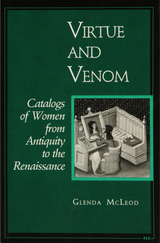 Virtue and Venom
Glenda McLeod
University of Michigan Press, 1991 Virtue and Venom traces the history of a previously neglected genre, the catalog of women, from its origins in Greece and Rome to the late Middle Ages, revealing the catalogs’ considerable importance as cultural documents of the evolution of the Western definition of womankind. These catalogs were simple listings of past heroines, sometimes described in extended biographies, sometimes merely enumerated by name. Catalog heroines often appeared in familiar guises—anonymous mothers of great men, fascinating seductresses, self-effacing spouses, abused victims of love, strong and bnilliant achievers. Wnitten by some of the finest authors of the ages, the catalogs fulfilled important functions. By defining women typologically, they instilled stereotypes in the popular mind, and by illustrating proper and improper feminine conduct they reinforced the late medieval link between literature and ethics. Despite the repetitive form of the genre, the catalogs were extremely flexible, able to illustrate different, even antithetical views of femininity—invoking the past as authority or reinterpreting the past in an attempt to associate femininity with changing cultural values. Thus, as well as being the vehicle for the transmission of knowledge, the form could also be manipulated to contest authority, in the guise of invoking it, and present new paradigms. McLeod examines a host of catalogs, including those of Homer, Hesiod, Vergil, Ovid, Juvenal, Plutarch, St. Jerome, and Jean de Meun, but gives special attention to Boccaccio’s De claris mulieribus and Chaucer’s Legend of Good Women. She then shows how the tradition ultimately produced the first major defense of womankind in Christine de Pizan’s Cité des Dames. This book will be of interest to classicists, medievalists, Renaissance and feminist scholars, and anyone interested in the misogynist tradition in the West and the response it engendered.
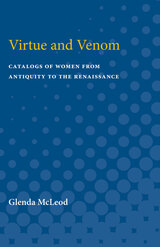 Virtue and Venom: Catalogs of Women from Antiquity to the Renaissance
Glenda McLeod
University of Michigan Press, 1991 Virtue and Venom traces the history of a previously neglected genre, the catalog of women, from its origins in Greece and Rome to the late Middle Ages, revealing the catalogs’ considerable importance as cultural documents of the evolution of the Western definition of womankind. These catalogs were simple listings of past heroines, sometimes described in extended biographies, sometimes merely enumerated by name. Catalog heroines often appeared in familiar guises—anonymous mothers of great men, fascinating seductresses, self-effacing spouses, abused victims of love, strong and bnilliant achievers. Wnitten by some of the finest authors of the ages, the catalogs fulfilled important functions. By defining women typologically, they instilled stereotypes in the popular mind, and by illustrating proper and improper feminine conduct they reinforced the late medieval link between literature and ethics. Despite the repetitive form of the genre, the catalogs were extremely flexible, able to illustrate different, even antithetical views of femininity—invoking the past as authority or reinterpreting the past in an attempt to associate femininity with changing cultural values. Thus, as well as being the vehicle for the transmission of knowledge, the form could also be manipulated to contest authority, in the guise of invoking it, and present new paradigms. McLeod examines a host of catalogs, including those of Homer, Hesiod, Vergil, Ovid, Juvenal, Plutarch, St. Jerome, and Jean de Meun, but gives special attention to Boccaccio’s De claris mulieribus and Chaucer’s Legend of Good Women. She then shows how the tradition ultimately produced the first major defense of womankind in Christine de Pizan’s Cité des Dames. This book will be of interest to classicists, medievalists, Renaissance and feminist scholars, and anyone interested in the misogynist tradition in the West and the response it engendered.
Virtue Ethics: A Critical Reader
Daniel Statman, Editor
Georgetown University Press, 1997 This book offers a clear and systematic introduction to virtue ethics, a topic which has inspired one of the most interesting contemporary debates in ethical theory—the question of whether virtues can replace duties as the primary notion in ethical theory. The volume comprises an introduction to virtue ethics by Daniel Statman and a collection of the most important essays published on the topic in the last decade. The essays encompass a wide range of aspects: the difference between virtue ethics and traditional duty ethics; arguments for and against virtue ethics; the practical implications of virtue ethics; and Aristotelian and Kantian attitudes towards virtue ethics.
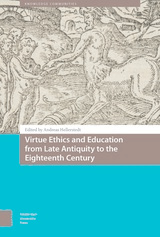 Virtue Ethics and Education from Late Antiquity to the Eighteenth Century
Edited by Andreas Hellerstedt
Amsterdam University Press, 2018 This book argues that pre-modern societies were characterized by a common quest for human flourishing or excellence, i.e. virtue. The history of virtue is a particularly fruitful approach when studying pre-modern periods. Systems of moral philosophy and more day-to-day moral ideas and practices in which virtue was central were incredibly important in pre-modern societies within and among diverse scholarly, literary, religious and social communities. Virtue was a cornerstone of pre-modern societies, permeating society in many different ways, and on many different levels, and it was conveyed in erudite and pedagogical texts, ritual, performance and images. The construction of virtues such as wisdom, courage, and justice helped shape identities and communities, but also served to legitimize and reinforce differences pertaining to gender, social hierarchies, and nations. On a more fundamental level, studying the history of virtue helps us understand the guiding principles of historical action. Thus, we believe that the history of virtue is central to understanding these societies, and that the history of virtue, including criticisms of virtue and virtue ethics, tells us important things about how men and women thought and acted in ages past.
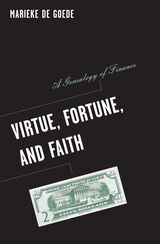 Virtue, Fortune, and Faith: A Genealogy of Finance
Marieke de Goede
University of Minnesota Press, 2005 Less than two centuries ago finance - today viewed as the center of economic necessity and epitome of scientific respectability - stood condemned as disreputable fraud. How this change in status came about, and what it reveals about the nature of finance, is the story told in Virtue, Fortune, and Faith. A unique cultural history of modern financial markets from the early eighteenth century to the present day, the book offers a genealogical reading of the historical insecurities, debates, and controversies that had to be purged from nascent credit practices in order to produce the image of today's coherent and - largely - rational global financial sphere. Marieke de Goede discusses moral, religious, and political transformations that have slowly naturalized the domain of finance. Using a deft integration of feminist and poststructuralist approaches, her book demonstrates that finance - not just its rules of personal engagement, but also its statistics, formulas, instruments, and institutions - is a profoundly cultural and politically contingent practice. When closely examined, the history of finance is one of colonial conquest, sexual imagination, constructions of time, and discourses of legitimate (or illegitimate) profit making. Regardless, this history has had a far-reaching impact on the development of the modern international financial institutions that act as the stewards of the world's economic resources. De Goede explores the political contestations over ideas of time and money; the gendered discourse of credit and credibility; differences among gambling, finance, and speculation; debates over the proper definition of the free market; the meaning of financial crisis; and the morality of speculation. In an era when financial practices are pronounced too specialized for broad-based public, democratic debate, Virtue, Fortune, and Faith questions assumptions about international finance's unchallenged position and effectively exposes its ambiguous scientific authority.
 Virtue Hoarders: The Case against the Professional Managerial Class
Catherine Liu
University of Minnesota Press, 2021 A denunciation of the credentialed elite class that serves capitalism while insisting on its own progressive heroism
Professional Managerial Class (PMC) elite workers labor in a world of performative identity and virtue signaling, publicizing an ability to do ordinary things in fundamentally superior ways. Author Catherine Liu shows how the PMC stands in the way of social justice and economic redistribution by promoting meritocracy, philanthropy, and other self-serving operations to abet an individualist path to a better world. Virtue Hoarders is an unapologetically polemical call to reject making a virtue out of taste and consumption habits.
Forerunners: Ideas First is a thought-in-process series of breakthrough digital publications. Written between fresh ideas and finished books, Forerunners draws on scholarly work initiated in notable blogs, social media, conference plenaries, journal articles, and the synergy of academic exchange. This is gray literature publishing: where intense thinking, change, and speculation take place in scholarship.
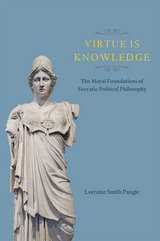 Virtue Is Knowledge: The Moral Foundations of Socratic Political Philosophy
Lorraine Smith Pangle
University of Chicago Press, 2014 The relation between virtue and knowledge is at the heart of the Socratic view of human excellence, but it also points to a central puzzle of the Platonic dialogues: Can Socrates be serious in his claims that human excellence is constituted by one virtue, that vice is merely the result of ignorance, and that the correct response to crime is therefore not punishment but education? Or are these assertions mere rhetorical ploys by a notoriously complex thinker?
Lorraine Smith Pangle traces the argument for the primacy of virtue and the power of knowledge throughout the five dialogues that feature them most prominently—the Apology, Gorgias, Protagoras, Meno, and Laws—and reveals the truth at the core of these seemingly strange claims. She argues that Socrates was more aware of the complex causes of human action and of the power of irrational passions than a cursory reading might suggest. Pangle’s perceptive analyses reveal that many of Socrates’s teachings in fact explore the factors that make it difficult for humans to be the rational creatures that he at first seems to claim. Also critical to Pangle’s reading is her emphasis on the political dimensions of the dialogues. Underlying many of the paradoxes, she shows, is a distinction between philosophic and civic virtue that is critical to understanding them.
Ultimately, Pangle offers a radically unconventional way of reading Socrates’s views of human excellence: Virtue is not knowledge in any ordinary sense, but true virtue is nothing other than wisdom.
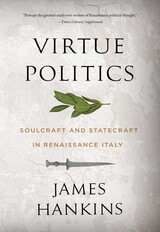 Virtue Politics: Soulcraft and Statecraft in Renaissance Italy
James Hankins
Harvard University Press, 2019 Winner of the Helen and Howard Marraro Prize
A Times Literary Supplement Book of the Year
“Perhaps the greatest study ever written of Renaissance political thought.”
—Jeffrey Collins, Times Literary Supplement
“Magisterial…Hankins shows that the humanists’ obsession with character explains their surprising indifference to particular forms of government. If rulers lacked authentic virtue, they believed, it did not matter what institutions framed their power.”
—Wall Street Journal
“Puts the politics back into humanism in an extraordinarily deep and far-reaching way…For generations to come, all who write about the political thought of Italian humanism will have to refer to it; its influence will be…nothing less than transformative.”
—Noel Malcolm, American Affairs
“[A] masterpiece…It is only Hankins’s tireless exploration of forgotten documents…and extraordinary endeavors of editing, translation, and exposition that allow us to reconstruct—almost for the first time in 550 years—[the humanists’] three compelling arguments for why a strong moral character and habits of truth are vital for governing well. Yet they are as relevant to contemporary democracy in Britain, and in the United States, as to Machiavelli.”
—Rory Stewart, Times Literary Supplement
“The lessons for today are clear and profound.”
—Robert D. Kaplan
Convulsed by a civilizational crisis, the great thinkers of the Renaissance set out to reconceive the nature of society. Everywhere they saw problems. Corrupt and reckless tyrants sowing discord and ruling through fear; elites who prized wealth and status over the common good; religious leaders preoccupied with self-advancement while feuding armies waged endless wars. Their solution was at once simple and radical. “Men, not walls, make a city,” as Thucydides so memorably said. They would rebuild the fabric of society by transforming the moral character of its citizens. Soulcraft, they believed, was a precondition of successful statecraft.
A landmark reappraisal of Renaissance political thought, Virtue Politics challenges the traditional narrative that looks to the Renaissance as the seedbed of modern republicanism and sees Machiavelli as its exemplary thinker. James Hankins reveals that what most concerned the humanists was not reforming institutions so much as shaping citizens. If character mattered more than laws, it would have to be nurtured through a new program of education they called the studia humanitatis: the precursor to our embattled humanities.
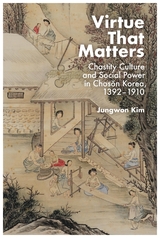 Virtue That Matters: Chastity Culture and Social Power in Chosŏn Korea (1392–1910)
Jungwon Kim
Harvard University Press, 2025 Virtue That Matters is a groundbreaking exploration of the intricate dynamics of chastity culture in Chosŏn Korea from 1392 to 1910, shedding light on its political, legal, social, and cultural significance. In this book, Jungwon Kim demonstrates how an emphasis on female chastity came to pervade society as it intertwined with state ideology and elite interests. By analyzing a copious range of sources including governmental publications, legal records, and women’s own writings, Kim unveils the rich tapestry of Chosŏn society’s attitudes toward female chastity and argues that extreme chastity culture was not merely a product of Confucianization but was also shaped by diverse social forces and individual agency. Furthermore, Kim reframes the discourse on chastity by focusing on women’s experiences and perspectives, challenging the traditional portrayal of women as marginal to Chosŏn history.
Virtue That Matters illustrates the complex interplay between state-led indoctrination, socio-legal changes, and gender relations in Chosŏn Korea. Kim also shows how the discourse on women’s chastity evolved over time and continued to influence social dynamics well into the twentieth century. By highlighting the enduring legacy of chastity culture in modern Korean society, Virtue That Matters provides valuable insights into contemporary debates on gender and sexuality.
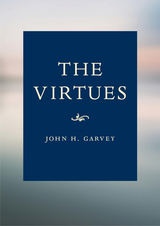 The Virtues
John H. Garvey
Catholic University of America Press, 2022 An ancient question asks what role moral formation ought to play in education. It leads to such questions as, do intellectual and moral formation belong together? Is it possible to form the mind and neglect the heart? Is it wise? These perennial questions take on new significance today, when education — especially, higher education — has become a defining feature in the lives of young people.
Throughout his more than 40 years in academia, John Garvey has reflected on the relationship between intellectual and moral formation, especially in Catholic higher education. For 12 years as the President of The Catholic University of America, he made the cultivation of moral virtue a central theme on campus, highlighting its significance across all aspects of University culture, from University policy to campus architecture.
During his two decades of presiding at commencement exercises, first as Dean of Boston College Law School and then as President of The Catholic University of America, Garvey made a single virtue the centerpiece of his remarks each year. The Virtues is the fruit of those addresses. More reflective than analytical, its purpose is to invite conversation about what it means to live well.
Following Catholic tradition, The Virtues places the theological virtues of faith, hope, and love at the center of the moral life, and the cardinal virtues — justice, temperance, fortitude, and prudence — with them. Alongside these major virtues, Garvey considers a collection of “little virtues,” habits that assist and accompany us in small but important ways on the path to goodness.
Though he treats each virtue individually, a common thread unites his reflections. “The intellectual life depends on the moral life,” Garvey writes. “Without virtue we cannot sustain the practices necessary for advanced learning. In fact, without virtue, it’s hard to see what the purpose of the university is. Learning begins with love (for the truth). If we don’t have that, it’s hard to know why we would bother with education at all.” The Virtues invites its readers, especially students, to appreciate that the cultivation of virtue is indispensable to success, academic or otherwise, and more importantly, essential to their ultimate aim, a life well lived.
Virtues and Practices in the Christian Tradition: Christian Ethics after MacIntyre
Nancey Murphy
University of Notre Dame Press, 2003 “Virtues and Practices in the Christian Tradition is a significant resource for those who teach Christian ethics in church-related colleges and universities.” —Michael G. Cartwright, University of Indianapolis
Contributors to Virtues and Practices in the Christian Tradition use Alasdair MacIntyre’s work as a methodological guide for doing ethics in the Christian tradition. These essays are grouped in three sections: descriptions of MacIntyre’s approach to ethics as developed in After Virtue, reflections on the moral issues that come to the fore when viewing the Christian tradition from a MacIntyrean perspective, and selected essays on family, homosexuality, abortion, pacifism, feminism, business ethics, medical ethics, and economic justice.
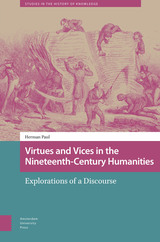 Virtues and Vices in the Nineteenth-Century Humanities: Explorations of a Discourse
Herman Paul
Amsterdam University Press, 2025 What do scholars do when they talk about virtues (impartiality, accuracy) or vices (dogmatism, prejudice)? Against the common view that such high-minded talk is largely irrelevant to actual scholarly practice, this volume proposes to treat it as a practice in its own right.
Drawing on case studies from the nineteenth-century humanities (with occasional forays into physics, chemistry, and medicine), Paul shows that notions of virtue and vice were an evaluative discourse used across the academic spectrum.
Paul argues that this evaluative idiom is best studied from a rhetorical point of view, with due attention to repertoires on which scholars drew, explicit or implicit appeals to authority, multi-layered meanings of virtue and vice terms, different uses to which these concepts were put, and societal contexts that lent plausibility to scholars’ invocations of virtue and vice.
Based on more than a decade of research, this volume will be a key reference for scholars interested in virtues, vices, and the history of the humanities.
The Virtues and Vices of Speech
Giovanni Gioviano Pontano
Harvard University Press, 2019 Giovanni Pontano, who adopted the academic sobriquet “Gioviano,” was prime minister to several kings of Naples and the most important Neapolitan humanist of the quattrocento. Best known today as a Latin poet, he also composed dialogues depicting the intellectual life of the humanist academy of which he was the head, and, late in life, a number of moral essays that became his most popular prose works. The De sermone (On Speech), translated into English here for the first time, aims to provide a moral anatomy, following Aristotelian principles, of various aspects of speech such as truthfulness and deception, flattery, gossip, loquacity, calumny, mercantile bargaining, irony, wit, and ridicule. In each type of speech, Pontano tries to identify what should count as the virtuous mean, that which identifies the speaker as a person of education, taste, and moral probity.
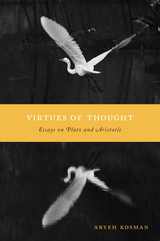 Virtues of Thought: Essays on Plato and Aristotle
Aryeh Kosman
Harvard University Press, 2014 Virtues of Thought is an excursion through interconnecting philosophical topics in Plato and Aristotle, under the expert guidance of Aryeh Kosman. Exploring what these two foundational figures have to say about the nature of human awareness and understanding, Kosman concludes that ultimately the virtues of thought are to be found in the joys and satisfactions that come from thinking philosophically, whether we engage in it ourselves or witness others’ participation.
Kosman examines Aristotle’s complex understanding of the role that reason plays in practical choice and moral deliberation, and the specific forms of thinking that are involved in explaining the world and making it intelligible to ourselves and others. Critical issues of consciousness and the connection between thinking and acting in Aristotle’s philosophical psychology lead to a discussion of the importance of emotion in his theory of virtue. Theories of perception and cognition are highlighted in works such as Aristotle’s Posterior Analytics. When his focus turns to Plato, Kosman gives original accounts of several dialogues concerning Plato’s treatment of love, self-knowledge, justice, and the complex virtue known as sophrosyne in such texts as Charmides and the Republic.
Bringing together in a single volume previously unpublished essays along with classics in the field, Virtues of Thought makes a significant contribution to our study of ancient Greek philosophy.
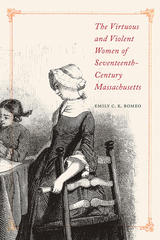 The Virtuous and Violent Women of Seventeenth-Century Massachusetts
Emily C.K. Romeo
University of Massachusetts Press, 2020 Dismantling the image of the peaceful and serene colonial goodwife and countering the assumption that New England was inherently less violent than other regions of colonial America, Emily C. K. Romeo offers a revealing look at acts of violence by Anglo-American women in colonial Massachusetts, from the everyday to the extraordinary. Using Essex County as a case study, Romeo deftly utilizes seventeenth- and eighteenth-century sources to demonstrate that Puritan women, both "virtuous" and otherwise, learned to negotiate the shifting boundaries between acceptable and unacceptable violence in their daily lives and communities.
The Virtuous and Violent Women of Seventeenth-Century Massachusetts shows that more dramatic violence by women—including infanticide, the scalping of captors during the Indian Wars, and even witchcraft accusations—was not necessarily intended to challenge the structures of authority but often sprung from women's desire to protect property, safety, and standing for themselves and their families. The situations in which women chose to flout powerful social conventions and resort to overt violence expose the underlying, often unspoken, priorities and gendered expectations that shaped this society.
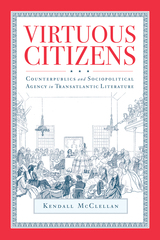 Virtuous Citizens: Counterpublics and Sociopolitical Agency in Transatlantic Literature
Kendall McClellan
University of Alabama Press, 2021 Demonstrates how contemporary manifestations of civic publics trace directly to the early days of nationhood
The rise of the bourgeois public sphere and the contemporaneous appearance of counterpublics in the eighteenth century deeply influenced not only how politicians and philosophers understood the relationships among citizens, disenfranchised subjects, and the state but also how members of the polity understood themselves. In Virtuous Citizens: Counterpublics and Sociopolitical Agency in Transatlantic Literature, Kendall McClellan uncovers a fundamental and still redolent transformation in conceptions of civic identity that occurred over the course of the eighteenth and nineteenth centuries. Literature of this period exposes an emotional investment in questions of civic selfhood born out of concern for national stability and power, which were considered products of both economic strength and a nation’s moral fiber. McClellan shows how these debates traversed the Atlantic to become a prominent component of early American literature, evident in works by James Fenimore Cooper, Catharine Maria Sedgwick, Sarah Josepha Hale, and Harriet Beecher Stowe, among others.
Underlying popular opinion about who could participate in the political public, McClellan argues, was an impassioned rhetorical wrestling match over the right and wrong ways to demonstrate civic virtue. Relying on long-established tropes of republican virtue that lauded self-sacrifice and disregard for personal safety, abolitionist writers represented loyalty to an ideals-based community as the surest safeguard of both private and public virtue. This evolution in civic virtue sanctioned acts of protest against the state, offered disenfranchised citizens a role in politics, and helped usher in the modern transnational public sphere.
Virtuous Citizens shows that the modern public sphere has always constituted a vital and powerful space for those invested in addressing injustice and expanding democracy. To illuminate some of the fundamental issues underlying today’s sociopolitical unrest, McClellan traces the transatlantic origins of questions still central to the representation of movements like Black Lives Matter, the Women’s March, and the Alt-Right: What is the primary loyalty of a virtuous citizen? Are patriots those who defend the current government against attacks, external and internal, or those who challenge the government to fulfill sociopolitical ideals?
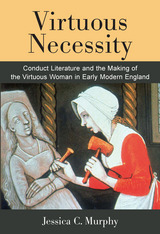 Virtuous Necessity: Conduct Literature and the Making of the Virtuous Woman in Early Modern England
Jessica C. Murphy
University of Michigan Press, 2015 While many scholars find the early modern triad of virtues for women—silence, chastity, and obedience—to be straightforward and nonnegotiable, Jessica C. Murphy demonstrates that these virtues were by no means as direct and inflexible as they might seem. Drawing on the literature of the period—from the plays of Shakespeare to a conduct manual written for a princess to letters from a wife to her husband—as well as contemporary gender theory and philosophy, she uncovers the multiple meanings of behavioral expectations for sixteenth- and seventeenth-century women. Through her renegotiation of cultural ideals as presented in both literary and nonliterary texts of early modern England, Murphy presents models for “acceptable” women’s conduct that lie outside of the rigid prescriptions of the time. Virtuous Necessity will appeal to readers interested in early modern English literature, including canonical authors such as Shakespeare, Spenser, and Milton, as well as their female contemporaries such as Amelia Lanyer and Elizabeth Cary. It will also appeal to scholars of conduct literature; of early modern drama, popular literature, poetry, and prose; of women’s history; and of gender theory.
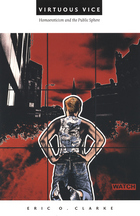 Virtuous Vice: Homoeroticism and the Public Sphere
Eric O. Clarke
Duke University Press, 2000 In this daring study of queer life and the public sphere, Eric O. Clarke examines the effects of inclusion within public culture. Departing from studies that emphasize homophobia and its mechanisms of exclusion, Virtuous Vice details how mainstream efforts to represent queers affirmatively continually fall short of full democratic enfranchisement. Clarke draws on contemporary writings along with late-eighteenth- and nineteenth-century English and European cultural history to investigate how concepts of value, representation, and homoeroticism have interacted and circulated in the West since the Enlightenment.
Examining the role of eroticism in citizenship and why only normalizing
constructions of homosexuality enable inclusion, Clarke reconsiders the work of Habermas and Foucault in relation to contemporary visibility politics, Kant’s moral and political theory, Marx’s analysis of value, and the sexualized dynamics of the Victorian cultural public sphere. The juxtaposition of Habermas with Foucault reveals the surprising value of reading the former in the context of queer politics and the usefulness of the theory of the public sphere for understanding contemporary identity politics and the visibility politics of the 1990s. Examining how a host of nonsexual factors impinge historically upon the constitution of sexual identities and practices, Clarke negotiates the relation between questions of publicity and categories of value. Discussions of television sitcoms (such as Ellen), marketing techniques, authenticity, and literary culture add to this daring analysis of visibility politics.
As a critique of the claim that equal representation of gays and lesbians necessarily constitutes progress, this significant intervention into social theory will find enthusiastic readers in the fields of Victorian, cultural, literary, and gay and lesbian studies, as well as other fields engaged with categories of identity.
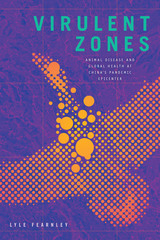 Virulent Zones: Animal Disease and Global Health at China's Pandemic Epicenter
Lyle Fearnley
Duke University Press, 2020 Scientists have identified southern China as a likely epicenter for viral pandemics, a place where new viruses emerge out of intensively farmed landscapes and human--animal interactions. In Virulent Zones, Lyle Fearnley documents the global plans to stop the next influenza pandemic at its source, accompanying virologists and veterinarians as they track lethal viruses to China's largest freshwater lake, Poyang Lake. Revealing how scientific research and expert agency operate outside the laboratory, he shows that the search for origins is less a linear process of discovery than a constant displacement toward new questions about cause and context. As scientists strive to understand the environments from which the influenza virus emerges, the unexpected scale of duck farming systems and unusual practices such as breeding wild geese unsettle research objects, push scientific inquiry in new directions, and throw expert authority into question. Drawing on fieldwork with global health scientists, state-employed veterinarians, and poultry farmers in Beijing and at Poyang Lake, Fearnley situates the production of ecological facts about disease emergence inside the shifting cultural landscapes of agrarian change and the geopolitics of global health.
 Virus Research in Twentieth-Century Uganda: Between Local and Global
Julia Ross Cummiskey
Ohio University Press, 2024 Virus Research in Twentieth-Century Uganda presents the stories of scientists at the Uganda Virus Research Institute (UVRI), a biomedical center founded in 1936. The book analyzes the strategies and conditions that allowed the institute to endure and thrive through successive political and scientific regimes of the interwar period, the postwar period, the transition to independence, the conflicts of the 1970s and 1980s, and the Museveni presidency. Julia Ross Cummiskey combines methods and themes from the history of medicine and public health, science and technology studies, and African studies to show that the story of the UVRI and the people who worked there transforms our understanding of the nature of local and international expertise and the evolution of global health research over the course of the twentieth century. Global health is one of the chief areas in which African and foreign institutions interact today. Billions of dollars are invested in global health projects on the continent, many involving strategically selected “local partners.” In the discourse of these projects, local and global are often framed as complementary but distinct categories of people, institutions, traditions, and practices. But the history of biomedical research at the UVRI shows that these distinctions are unstable and mutable and that people and institutions have mobilized both categories to attract funding, professional prestige, and research opportunities. The book complicates the local/global binary that is implicit (and sometimes explicit) in many studies of colonial, international, and global health and medical research, especially in Africa. Moreover, it challenges assumptions about global health as an enterprise dominated by researchers based in the Global North and recenters the history of biomedicine in Africa.
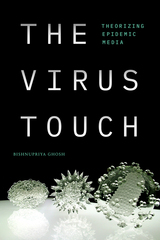 The Virus Touch: Theorizing Epidemic Media
Bishnupriya Ghosh
Duke University Press, 2023 In The Virus Touch Bishnupriya Ghosh argues that media are central to understanding emergent relations between viruses, humans, and nonhuman life. Writing in the shadow of the HIV/AIDS and COVID-19 global pandemics, Ghosh theorizes “epidemic media” to show how epidemics are mediated in images, numbers, and movements through the processes of reading test results and tracking infection and mortality rates. Scientific, artistic, and activist epidemic media that make multispecies relations sensible and manageable eschew anthropocentric survival strategies and instead recast global public health crises as biological, social, and ecological catastrophes, pushing us toward a multispecies politics of health. Ghosh trains her analytic gaze on these mediations as expressed in the collection and analysis of blood samples as a form of viral media; the geospatialization of data that track viral hosts like wild primates; and the use of multisensory images to trace fluctuations in viral mutations. Studying how epidemic media inscribe, store, and transmit multispecies relations attunes us to the anthropogenic drivers of pathogenicity like deforestation or illegal wildlife trading and the vulnerabilities accruing from diseases that arise from socioeconomic inequities and biopolitical neglect.
 Viruses: Agents of Evolutionary Invention
Michael G. Cordingley
Harvard University Press, 2017 Viruses are the most abundant biological entities on Earth, and arguably the most successful. They are not technically alive, but—as infectious vehicles of genetic information—they have a remarkable capacity to invade, replicate, and evolve within living cells. Synthesizing a large body of recent research, Michael Cordingley goes beyond our familiarity with viral infections to show how viruses spur evolutionary change in their hosts, shape global ecosystems, and influence every domain of life.
In the last few decades, research has revealed that viruses are fundamental to the photosynthetic capacity of the world’s oceans and the composition of the human microbiome. Perhaps most fascinating, viruses are now recognized as remarkable engines of the genetic innovation that fuels natural selection and catalyzes evolution in all domains of life. Viruses have coevolved with their hosts since the beginning of life on our planet and are part of the evolutionary legacy of every species that has ever lived.
Cordingley explains how viruses are responsible for the creation of many feared bacterial diseases and the emergence of newly pathogenic and drug-resistant strains. And as more and more viruses jump to humans from other animals, new epidemics of viral disease will threaten global society. But Cordingley shows that we can adapt, relying on our evolved cognitive and cultural capacities to limit the consequences of viral infections. Piecing together the story of viruses’ major role within and beyond human disease, Viruses creates a valuable roadmap through the rapidly expanding terrain of virology.
Visayan Vignettes: Ethnographic Traces of a Philippine Island
Jean-Paul Dumont
University of Chicago Press, 1992 "To read the book is to appreciate the highly contingent, provisional, oblique, open-ended way in which people try to make "sense" of another culture."—Resil B. Mojares, Philippine Graphic
"This book is an interestingly complex ethnography that approaches the self-critical dialectical ethnography called for two decades ago....It is a welcome contribution to postmodernist theory and to the ethnography of the Visayas."—Ronald Provencher, Journal of Asian Studies
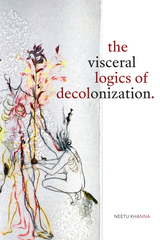 The Visceral Logics of Decolonization
Neetu Khanna
Duke University Press, 2020 In The Visceral Logics of Decolonization Neetu Khanna rethinks the project of decolonization by exploring a knotted set of relations between embodied experience and political feeling that she conceptualizes as the visceral. Khanna focuses on the work of the Progressive Writers' Association (PWA)—a Marxist anticolonial literary group active in India between the 1930s and 1950s—to show how anticolonial literature is a staging ground for exploring racialized emotion and revolutionary feeling. Among others, Khanna examines novels by Mulk Raj Anand, Ahmed Ali, and Khwaja Ahmad Abbas, as well as the feminist writing of Rashid Jahan and Ismat Chughtai, who each center the somatic life of the body as a fundamental site of colonial subjugation. In this way, decolonial action comes not solely from mental transformation, but from a reconstitution of the sensorial nodes of the body. The visceral, Khanna contends, therefore becomes a critical dimension of Marxist theories of revolutionary consciousness. In tracing the contours of the visceral's role in decolonial literature and politics, Khanna bridges affect and postcolonial theory in new and provocative ways.
 The Visceral Screen: Between the Cinemas of John Cassavetes and David Cronenberg
Robert Furze
Intellect Books, 2015 Narrative and spectacle describe two extremes of film content, but the oeuvres of John Cassavetes and David Cronenberg resist such categorization. Instead, Robert Furze argues, the defining characteristic of these directors’ respective approaches is that of “visceral” cinema—a term that illustrates the anxiety these filmmakers provoke in their audiences. Cassavetes demonstrates this through disregard for plot structure and character coherence, while Cronenberg's focus is on graphic depictions of mutilation, extreme forms of bodily transformation, and violence.
The Visceral Screen sets out to articulate alternative ways of appreciating film aesthetics outside the narrative/spectacle continuum. Cassavetes and Cronenberg are established auteurs, but the elements of their films that appear to be barriers to their artistic status—for example, slipshod method and lingering violence or pre-digital special effects—are reassessed here as other indicators of creativity. In this way, Furze encourages debates of what makes a film good or bad—beyond how much it is seen to adhere to particular, established models of filmmaking.
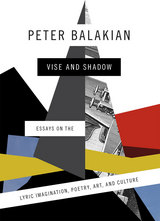 Vise and Shadow: Essays on the Lyric Imagination, Poetry, Art, and Culture
Peter Balakian
University of Chicago Press, 2015 Peter Balakian is a renowned poet, scholar, and memoirist; but his work as an essayist often prefigures and illuminates all three. "I think of vise and shadow as two dimensions of the lyric (literary and visual) imagination," he writes in the preface to this collection, which brings together essayistic writings produced over the course of twenty-five years. Vise, "as in grabbing and holding with pressure," but also in the sense of the vise-grip of the imagination, which can yield both clarity and knowledge. Consider the vise-grip of some of the poems of our best lyric poets, how language might be put under pressure "as carbon might be put under pressure to create a diamond." And shadow, the second half of the title: both as noun, "the shaded or darker portion of the picture or view or perspective," "partial illumination and partial darkness"; and as verb, to shadow, "to trail secretly as an inseparable companion" or a "force that follows something with fidelity; to cast a dark light on something—a person, an event, an object, a form in nature."
Vise and Shadow draws into conversation such disparate figures as W. B. Yeats, Hart Crane, Joan Didion, Primo Levi, Robert Rauschenberg, Bob Dylan, Elia Kazan, and Arshile Gorky, revealing how the lyric imagination of these artists grips experience, "shadows history," and "casts its own type of illumination," creating one of the deepest kinds of human knowledge and sober truth. In these elegantly written essays, Balakian offers a fresh way to think about the power of poetry, art, and the lyrical imagination as well as history, trauma, and memory.
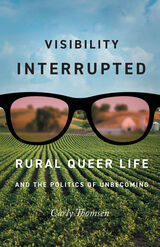 Visibility Interrupted: Rural Queer Life and the Politics of Unbecoming
Carly Thomsen
University of Minnesota Press, 2021 A questioning of the belief in the power of LGBTQ visibility through the lives of queer women in the rural Midwest
Today most LGBTQ rights supporters take for granted the virtue of being “out, loud, and proud.” Most also assume that it would be terrible to be LGBTQ in a rural place. By considering moments in which queerness and rurality come into contact, Visibility Interrupted argues that both positions are wrong. In the first monograph on LGBTQ women in the rural Midwest, Carly Thomsen deconstructs the image of the rural as a flat, homogenous, and anachronistic place where LGBTQ people necessarily suffer. And she suggests that visibility is not liberation and will not lead to liberation. Far from being an unambiguous good, argues Thomsen, visibility politics can, in fact, preclude collective action. They also advance metronormativity, postraciality, and capitalism. To make these interventions, Thomsen develops the theory of unbecoming: interrogating the relationship between that which we celebrate and that which we find disdainful—the past, the rural, politics—is crucial for developing alternative subjectivities and politics. Unbecoming precedes becoming. Drawing from critical race studies, disability studies, and queer Marxism, in addition to feminist and queer studies, the insights of this book will be useful to scholars theorizing issues far beyond sexuality and place and to social justice activists who want to move beyond visibility.
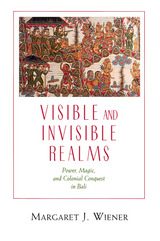 Visible and Invisible Realms: Power, Magic, and Colonial Conquest in Bali
Margaret J. Wiener
University of Chicago Press, 1995 In 1908, the ruler of the Balinese realm of Klungkung and more than 100 members of his family and court were massacred when they marched deliberately into the fire of the Dutch colonial army. The question of what their action meant and its continued significance in contemporary Klungkung forms the basis of Margaret Wiener's complex anthropolological history.
Wiener challenges colonial and academic claims that Klungkung had no "real" power and argues that such claims enabled colonial domination. By focusing on Balinese discourses she makes clear the choices open to Balinese, both at the time of the Dutch conquest and in its narration. At the same time, she shows how these discourses, which revolve around magical weapons acquired from invisible agents such as gods, spirits, and ancestors, offer an alternative understanding of Klungkung's power.
Moving between Balinese and Dutch narratives and between past and present, Wiener critiques colonial accounts by recounting Balinese memories and interpretations. Her attention to history and local situations illuminates the ways in which colonialism and orientalist scholarship have obscured the power of indigenous rulers and shows how Klungkung, once Bali's paramount realm, was relegated to a peripheral corner of the Indonesian nation-state. Both as a fascinating story and as a rich example of interdisciplinary scholarship, this book will interest students of colonialism, anthropology, history, religion, and Southeast Asia.
The Visible and the Invisible
Maurice Merleau-Ponty
Northwestern University Press, 1968 The Visible and the Invisible contains the unfinished manuscript and working notes of the book Merleau-Ponty was writing when he died. The text is devoted to a critical examination of Kantian, Husserlian, Bergsonian, and Sartrean method, followed by the extraordinary "The Intertwining–The Chiasm," that reveals the central pattern of Merleau-Ponty's own thought. The working notes for the book provide the reader with a truly exciting insight into the mind of the philosopher at work as he refines and develops new pivotal concepts.
Visible!: Attracting Customers in a Distracted World
Oliver Pott and Jan Bargfrede
Campus Verlag, 2023 A strategy guide for finding customers for your business in a distracted digital world.
The internet has fundamentally changed how businesses reach their customers. Whereas historically it took a major, expensive marketing campaign to get the attention of potential customers, now digital visibility offers similar results on a much more modest budget. Visible! illustrates how by deploying the concept of “smart visibility” to show businesses and entrepreneurs how to more easily find their audience and build a brand.
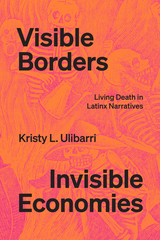 Visible Borders, Invisible Economies: Living Death in Latinx Narratives
Kristy L. Ulibarri
University of Texas Press, 2022 2023 Outstanding Book Award, National Association for Ethnic Studies
A thorough examination of the political and economic exploitation of Latinx subjects, migrants, and workers through the lens of Latinx literature, photography, and film.
Globalization in the United States can seem paradoxical: free trade coincides with fortification of the southern border, while immigration is reimagined as a national-security threat. US politics turn aggressively against Latinx migrants and subjects even as post-NAFTA markets become thoroughly reliant on migrant and racialized workers. But in fact, there is no incongruity here. Rather, anti-immigrant politics reflect a strategy whereby capital uses specialized forms of violence to create a reserve army of the living, laboring dead. Visible Borders, Invisible Economies turns to Latinx literature, photography, and films that render this unseen scheme shockingly vivid. Works such as Valeria Luiselli’s Tell Me How It Ends and Alex Rivera’s Sleep Dealer crystallize the experience of Latinx subjects and migrants subjugated to social death, their political existence erased by disenfranchisement and racist violence while their bodies still toil in behalf of corporate profits. In Kristy L. Ulibarri’s telling, art clarifies what power obscures: the national-security state performs anti-immigrant and xenophobic politics that substitute cathartic nationalism for protections from the free market while ensuring maximal corporate profits through the manufacture of disposable migrant labor.
 Visible Cities: Canton, Nagasaki, and Batavia and the Coming of the Americans
Leonard Blussé
Harvard University Press, 2008 The eighteenth century witnessed the rise of the China market and the changes that resulted in global consumption patterns, from opium smoking to tea drinking. In a valuable transnational perspective, Leonard Blussé chronicles the economic and cultural transformations in East Asia through three key cities. Canton was the port of call for foreign merchants in the Qing empire. Nagasaki was the official port of Tokugawa Japan. Batavia served as the connection site between the Indian Ocean and China seas for ships of the Dutch East India Company.
The effects of global change were wrenching. The monopolies suffered challenges, trade corridors shifted, and new players appeared. Yankee traders in their fast clipper ships made great inroads. As Dutch control declined, Batavia lost its premier position. Nagasaki became a shadow of its former self. Canton, however, surged to become the foremost port of East Asia. But on the horizon were new kinds of port cities, not controlled from above and more attuned to the needs of the overseas trading network. With the establishment of the free port of Singapore and the rise of the treaty ports—Hong Kong, Shanghai, Yokohama—the nature of the China seas trade, and relations between East Asia and the West, changed forever.
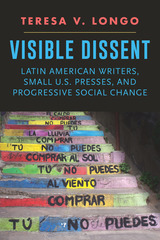 Visible Dissent: Latin American Writers, Small U.S. Presses, and Progressive Social Change
Teresa V. Longo
University of Iowa Press, 2018 As Teresa Longo’s groundbreaking examination reveals, North America’s dissident literature has its roots in the Latin American literary tradition. From Pablo Neruda’s Canto General to Eduardo Galeano’s Open Veins of Latin America to Gabriel García Márquez’s One Hundred Years of Solitude—among others—contemporary writers throughout the Americas have forced us to reconsider the United States’s relationship with Latin America, and more broadly with the Global South. Highlighting the importance of reading and re-reading the Latin American canon in the United States, Longo finds that literature can be an instrument of progressive social change, and argues that small literary presses—City Lights, Curbstone, and Seven Stories—have made that dissent visible in the United States. In the book’s final two chapters on the Robert F. Kennedy Center’s Speak Truth to Power initiative and the publication of Marc Falkoff’s Poems from Guantánamo, the author turns our attention further outward, probing the role poetry, theater, and photography play in global human rights work. Locating the work of artists and writers alongside that of scholars and legal advocates, Visible Dissent not only unveils the staying-power of committed writing, it honors the cross-currents and the on-the-ground implications of humane political engagement.
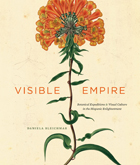 Visible Empire: Botanical Expeditions and Visual Culture in the Hispanic Enlightenment
Daniela Bleichmar
University of Chicago Press, 2012 Between 1777 and 1816, botanical expeditions crisscrossed the vast Spanish empire in an ambitious project to survey the flora of much of the Americas, the Caribbean, and the Philippines. While these voyages produced written texts and compiled collections of specimens, they dedicated an overwhelming proportion of their resources and energy to the creation of visual materials. European and American naturalists and artists collaborated to manufacture a staggering total of more than 12,000 botanical illustrations. Yet these images have remained largely overlooked—until now. In this lavishly illustrated volume, Daniela Bleichmar gives this archive its due, finding in these botanical images a window into the worlds of Enlightenment science, visual culture, and empire. Through innovative interdisciplinary scholarship that bridges the histories of science, visual culture, and the Hispanic world, Bleichmar uses these images to trace two related histories: the little-known history of scientific expeditions in the Hispanic Enlightenment and the history of visual evidence in both science and administration in the early modern Spanish empire. As Bleichmar shows, in the Spanish empire visual epistemology operated not only in scientific contexts but also as part of an imperial apparatus that had a long-established tradition of deploying visual evidence for administrative purposes.
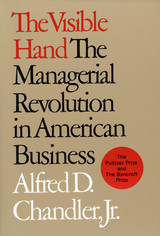 The Visible Hand: The Managerial Revolution in American Business
Alfred D. Chandler Jr.
Harvard University Press, 1977 The role of large-scale business enterprise—big business and its managers—during the formative years of modern capitalism (from the 1850s until the 1920s) is delineated in this pathmarking book. Alfred Chandler, Jr., the distinguished business historian, sets forth the reasons for the dominance of big business in American transportation, communications, and the central sectors of production and distribution.
The managerial revolution, presented here with force and conviction, is the story of how the visible hand of management replaced what Adam Smith called the “invisible hand” of market forces. Chandler shows that the fundamental shift toward managers running large enterprises exerted a far greater influence in determining size and concentration in American industry than other factors so often cited as critical: the quality of entrepreneurship, the availability of capital, or public policy.
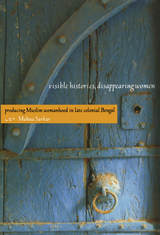 Visible Histories, Disappearing Women: Producing Muslim Womanhood in Late Colonial Bengal
Mahua Sarkar
Duke University Press, 2008 In Visible Histories, Disappearing Women, Mahua Sarkar examines how Muslim women in colonial Bengal came to be more marginalized than Hindu women in nationalist discourse and subsequent historical accounts. She also considers how their near-invisibility except as victims has underpinned the construction of the ideal citizen-subject in late colonial India. Through critical engagements with significant feminist and postcolonial scholarship, Sarkar maps out when and where Muslim women enter into the written history of colonial Bengal. She argues that the nation-centeredness of history as a discipline and the intellectual politics of liberal feminism have together contributed to the production of Muslim women as the oppressed, mute, and invisible “other” of the normative modern Indian subject. Drawing on extensive archival research and oral histories of Muslim women who lived in Calcutta and Dhaka in the first half of the twentieth century, Sarkar traces Muslim women as they surface and disappear in colonial, Hindu nationalist, and liberal Muslim writings, as well as in the memories of Muslim women themselves. The oral accounts provide both a rich source of information about the social fabric of urban Bengal during the final years of colonial rule and a glimpse of the kind of negotiations with stereotypes that even relatively privileged, middle-class Muslim women are still frequently obliged to make in India today. Sarkar concludes with some reflections on the complex links between past constructions of Muslim women, current representations, and the violence against them in contemporary India.
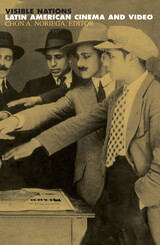 Visible Nations: Latin American Cinema and Video
Chon A. Noriega
University of Minnesota Press, 2000 Rewrites Latin American film from the perspective of nationhood. In the current "global" moment, the study of Latin American cinema has become insistently national—a phenomenon fully explored in this collection of essays by some of the most interesting and innovative scholars of media and Latin American culture working today. The contributors to Visible Nations consider different national film and video histories in Latin America since the silent period. From the perspectives of feminism, psychoanalysis, new historicism, and reception theory, among others, they consider the styles through which—and the ends toward which—the nation has been represented, desired, and contested in films, film industries, and alternative video work in Mexico, Chile, Venezuela, Brazil, Colombia, and Cuba. The result is nothing less than a rewriting of Latin American film history. Contributors: Patricia Aufderheide, American U; Charles Ramírez Berg, U of Texas at Austin; Gilberto Moises Blasini; Julianne Burton-Carvajal, U of California, Santa Cruz; Seth Fein, Georgia State U; Claire F. Fox, Stanford U; Brian Goldfarb, U of Rochester; Ilene S. Goldman; Monica Hulsbus; Ana M. López, Tulane U; Kathleen Newman, U of Iowa; Laura Podalsky, Bowling Green State U; Harmony H. Wu.
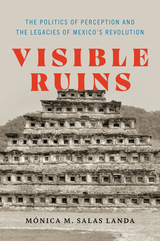 Visible Ruins: The Politics of Perception and the Legacies of Mexico's Revolution
Mónica M. Salas Landa
University of Texas Press, 2024 An examination of the failures of the Mexican Revolution through the visual and material records. The Mexican Revolution (1910–1920) introduced a series of state-led initiatives promising modernity, progress, national grandeur, and stability; state surveyors assessed land for agrarian reform, engineers used nationalized oil for industrialization, archaeologists reconstructed pre-Hispanic monuments for tourism, and anthropologists studied and photographed Indigenous populations to achieve their acculturation. Far from accomplishing their stated goals, however, these initiatives concealed violence, and permitted land invasions, forced displacement, environmental damage, loss of democratic freedom, and mass killings. Mónica M. Salas Landa uses the history of northern Veracruz to demonstrate how these state-led efforts reshaped the region's social and material landscapes, affecting what was and is visible. Relying on archival sources and ethnography, she uncovers a visual order of ongoing significance that was established through postrevolutionary projects and that perpetuates inequality based on imperceptibility.
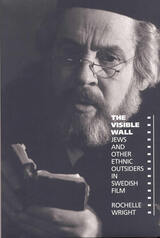 The Visible Wall: Jews and Other Ethnic Outsiders in Swedish Film
Rochelle Wright
Southern Illinois University Press, 1998
Rochelle Wright provides the first historical overview and analysis of the manner in which Jews and other ethnic outsiders have been depicted in Swedish film from 1930 to the present.
Focusing on films produced in Sweden for primarily Swedish audiences, Wright analyzes how the portrayal of the relatively small Jewish minority has evolved over the years. She compares the images of Jews in Swedish film with those of other ethnic subcultures: long-term resident communities such as tattare (‘travelers’, an indigenous pariah group often confused with gypsies), Finns, the Sami, and recent immigrant populations such as Greeks, Italians, Turks, and Yugoslavians.
Wright’s cross-disciplinary approach to interrelated issues of ethnicity and national identity enables her to take advantage of the methodologies of historians and sociologists as well as those of literary and film critics. She bases her study on a detailed analysis of the films, but, by way of comparison, she examines filmscripts and literary sources. She also consults contemporary reviews, interviews with actors and directors, and biographies and memoirs as well as critical discussion among film historians.
Wright confronts important—and exceedingly difficult—social questions. She deals head-on with xenophobia, anti-Semitism, immigration, assimilation, ethnicity, multiculturalism, and the national self-image of Swedes as reflected in their cinema. She also analyzes the manner in which Swedish film represents the persecution of Jews in Nazi-dominated Europe.
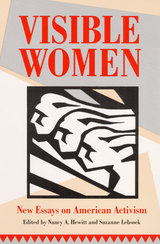 Visible Women: New Essays on American Activism
Edited by Nancy A. Hewitt and Suzanne Lebsock
University of Illinois Press, 1993 In this collection, fifteen leading historians of women and American history explore women's political action from 1830 to the present. Together, their contributions illustrate the tremendous scope and racial, ethnic, and class diversity of women's public activism while also clarifying various conceptual issues. Essays include an analysis of ideologies and strategies; suffrage militance in 1870s; ideas for a feminist approach to public life; labor feminism in the urban South; women's activism in Tampa, Florida; black women and economic nationalism; black women's clubs; the YMCA's place in the community; the role of Southern churchwomen in racial reform and transformation; and other topics. "Establishes important links between citizenship, race, and gender following the Reconstruction amendments and the Dawes Act of 1887."--Sharon Hartmann Strom, American Historical Review
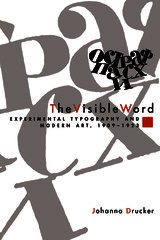 The Visible Word: Experimental Typography and Modern Art, 1909-1923
Johanna Drucker
University of Chicago Press, 1994 Early in this century, Futurist and Dada artists developed brilliantly innovative uses of typography that blurred the boundaries between visual art and literature. In The Visible Word, Johanna Drucker shows how later art criticism has distorted our understanding of such works. She argues that Futurist, Dadaist, and Cubist artists emphasized materiality as the heart of their experimental approach to both visual and poetic forms of representation; by mid-century, however, the tenets of New Criticism and High Modernism had polarized the visual and the literary.
Drucker suggests a methodology closer to the actual practices of the early avant-garde artists, based on a rereading of their critical and theoretical writings. After reviewing theories of signification, the production of meaning, and materiality, she analyzes the work of four poets active in the typographic experimentation of the 1910s and 1920s: Ilia Zdanevich, Filippo Marinetti, Guillaume Apollinaire, and Tristan Tzara.
Few studies of avant-garde art and literature in the early twentieth century have acknowledged the degree to which typographic activity furthered debates about the very nature and function of the avant-garde. The Visible Word enriches our understanding of the processes of change in artistic production and reception in the twentieth century.
 The Visible World: Samuel van Hoogstraten's Art Theory and the Legitimation of Painting in the Dutch Golden Age
Thijs Weststeijn
Amsterdam University Press, 2008 How did painters and their public speak about art in Rembrandt’s age? This book about the writings of the painter-poet Samuel van Hoogstraten, one of Rembrandt’s pupils, examines a wide variety of themes from painting practice and theory from the Dutch Golden Age. It addresses the contested issue of ‘Dutch realism’ and its hidden symbolism, as well as Rembrandt’s concern with representing emotions in order to involve the spectator. Diverse aspects of imitation and illusion come to the fore, such as the theory behind sketchy or ‘rough’ brushwork and the active role played by the viewer’s imagination. Taking as its starting point discussions in Rembrandt’s studio, this unique study provides an ambitious overview of Dutch artists’ ideas on painting.
The Visible World was awarded the Jan van Gelder Prize in 2009.
“Thijs Weststeijn’s book … is destined to become one of the principal bibles for those who even remotely wish to read and understand Samuel van Hoogstraten’s thinking … written in clear, elegant language”, Jan Blanc in Simiolus 33/4 (2007-8).
“By asking purposeful questions about Dutch Baroque art theory and Van Hoogstraten’s place within it, Thijs Weststeijn has provided convincing and thoughtful answers, and made a most appreciated and masterful contribution to the field.” Amy Golahny in Sehepunkte 10 (2010), nr. 6.
“[Weststeijn] shows persuasively how Van Hoogstraten’s Inleyding is rooted in the tradition of classical rhetoric and philosophy … Chapters about aspects discussed in detail in the Inleyding, such as pictorial imitation, coloring and the depiction of emotion, reveal that Van Hoogstraten’s perspective on the theory of art was an idiosyncratic one … Weststeijn supposes at various moments in his book that Samuel van Hoogstraten wanted in particular to provide a legitimation for Rembrandt’s painting practice by writing down the ideas that he must have heard in the latter’s studio.” Bram de Klerck in NRC Handelsblad, 13 February 2009.
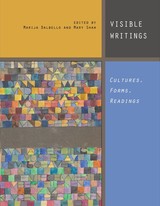 Visible Writings: Cultures, Forms, Readings
Dalbello, Marija
Rutgers University Press, 2011 Exploring the concept and history of visual and graphic epistemologies, this engrossing collection of essays by artists, curators, and scholars provides keen insights into the many forms of connection between visibility and legibility. With more than 130 color and black-and-white photographs, Visible Writings sheds new light on the visual dimensions of writing as well as writing's interaction with images in ways that affect our experiences of reading and seeing.
Multicultural in character and historical in range, essays discuss pre-Colombian Mesoamerican scripts, inscriptions on ancient Greek vases, medieval illuminations, Renaissance prints, Enlightenment concepts of the legible, and the Western "reading" of Chinese ideograms. A rich array of modern forms, including comics, poster art, typographic signs, scribblings in writers' manuscripts, anthropomorphic statistical pictograms, the street writings of 9/11, intersections between poetry and painting, the use of color in literary texts, and the use of writing in visual art are also addressed.
Visible Writings reaches outside the traditional venues of literature and art history into topics that consider design, history of writing, philosophy of language, and the emerging area of visual studies. Marija Dalbello, Mary Shaw, and the other contributors offer both scholars and those with a more casual interest in literature and art the opportunity, simply stated, to see the writing on the wall.
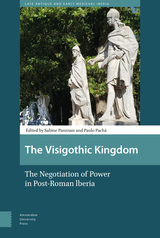 The Visigothic Kingdom: The Negotiation of Power in Post-Roman lberia
Paulo Panzram
Amsterdam University Press, 2021 How did the breakdown of Roman rule in the Iberian Peninsula eventually result in the formation of a Visigothic kingdom with authority centralised in Toledo? This collection of essays challenges the view that local powers were straightforwardly subjugated to the expanding central power of the monarchy. Rather than interpret countervailing events as mere ‘delays’ in this inevitable process, the contributors to this book interrogate where these events came from, which causes can be uncovered and how much influence individual actors had in this process. What emerges is a story of contested interests seeking cooperation through institutions and social practices that were flexible enough to stabilise a system that was hierarchical yet mutually beneficial for multiple social groups. By examining the Visigothic settlement, the interplay between central and local power, the use of ethnic identity, projections of authority, and the role of the Church, this book articulates a model for understanding the formation of a large and important early medieval kingdom.
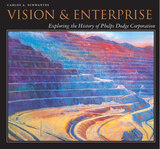 Vision and Enterprise: Exploring the History of Phelps Dodge Corporation
Carlos A. Schwantes
University of Arizona Press, 2000 Phelps Dodge Corporation has shaped the landscape of America from the industrial revolution to the information technology revolution. A name synonymous with copper, Phelps Dodge has grown from a cotton and metal trading firm founded in 1834 to its present position as the world's largest publicly traded copper company. Carlos Schwantes has written a sweeping corporate history of Phelps Dodge. Using landscape as an organizing concept to underscore the company's impact and accomplishments, he offers a close look at this corporate giant within the context of American technological and social history. In tracing the progress of Phelps Dodge through its 165-year history, Schwantes takes readers from the streets of Bisbee, Arizona, to the boardrooms of New York and Phoenix in order to examine the impact the company has had on the many landscapes in which it figures so prominently. Considering factors ranging from the environment to labor, he examines how Phelps Dodge has influenced, and has been influenced by, such forces as the global economy, technological innovation, urban growth, and social change. Exhaustively researched and profusely illustrated with over 200 photographs, Vision and Enterprise makes a unique contribution to the history of the United States and the evolution of industry by considering the changing face of labor, the environment, and technology from one dynamic company's point of view.
Vision and Stagecraft in Sophocles
David Seale
University of Chicago Press, 1982 In this study, David Seale argues that Sophocles’s use of stagecraft, which has thus far received little attention, was as sophisticated as that of Aeschylus or Euripides. His discussions of the physical and visual elements of Sophocles's seven plays center around the theme of sight; he demonstrates that each play is staged to maximize the implications and effects of “seeing” and not “seeing,” of knowledge and ignorance. This emphasis on visual perception, Seale maintains, harmonizes with Sophocles’s use of verbal and thematic techniques to create dramatic movements from delusion to truth, culminating in climaxes that are revelations—moments when things are truly “seen” by both audience and characters.
 Vision and Textuality
Stephen Melville and Bill Readings, eds.
Duke University Press, 1995 The influence of contemporary literary theory on art history is increasingly evident, but there is little or no agreement about the nature and consequence of this new intersection of the visual and the textual. Vision and Textuality brings together essays by many of the most influential scholars in the field—both young and more established writers from the United States, England, and France—to address the emergent terms and practices of contemporary art history. With essays by Rosalind Krauss, Hal Foster, Norman Bryson, Victor Burgin, Martin Jay, Louis Marin, Thomas Crow, Griselda Pollock, and others, the volume is organized into sections devoted to the discipline of art history, the implications of semiotics, the new cultural history of art, and the impact of psychoanalysis. The works discussed in these essays range from Rembrandt’s Danae to Jorge Immendorf’s Café Deutschland, from Vauxhall Gardens to Max Ernst, and from the Imagines of Philostratus to William Godwin’s novel Caleb Williams. Each section is preceded by a short introduction that offers further contexts for considering the essays that follow, while the editors’ general introduction presents an overall exploration of the relation between vision and textuality in a variety of both institutional and theoretical contexts. Among other issues, it examines the relevance of aesthetics, the current concern with modernism and postmodernism, and the possible development of new disciplinary formations in the humanities. Contributors. Mieke Bal, John Bender, Norman Bryson, Victor Burgin, Thomas Crow, Peter de Bolla, Hal Foster, Michael Holly, Martin Jay, Rosalind Krauss, Françoise Lucbert, Louis Martin, Stephen Melville, Griselda Pollock, Bill Readings, Irit Rogoff, Bennet Schaber, John Tagg
Vision and Values: Ethical Viewpoints in the Catholic Tradition
Judith A. Dwyer, Editor
Georgetown University Press, 1999 A concise introduction to Christian ethics, this book surveys the moral values of the Catholic tradition and applies them to contemporary issues. Prominent authors address such topics as scriptural sources, reverence for human life, sexuality and intimacy, family responsibilities, the concept of peace in the modern world, economics, and Catholic higher education. Vision and Values is both an overview of the major perspectives which inform moral decisions and a guide to how these principles interrelate. It can help readers determine how to make complex moral judgments in a Christian context as it demonstrates the vitality of the Catholic theological tradition.
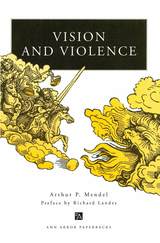 Vision and Violence
Arthur P. Mendel
University of Michigan Press, 1999 Vision and Violence argues that throughout Western history, the Apocalypse has changed nothing but its guise--from God to Reason, to History, and then to Nature--all the while holding us rapt with its prophecy of universal devastation. While in Judaism and Christianity it inspires efforts to uplift societies spiritually, the apocalyptic fantasy serves in secular thought--as in today's environmental movement--to bring about much-needed policy reforms.
Much of the book is devoted to an examination of the persistence of the apocalyptic heritage from ancient Greek and Hebrew civilizations, through the religious revivals of the Middle Ages and the Enlightenment belief in progress, to its importance in Hegelian and Bolshevik thought, and finally to its expression today in the resurgence of religious fundamentalism in Judaism, Christianity, and Islam.
Mendel concludes his remarkable book with an appeal for the more modest and humane philosophy of the "repair of the world," which, he argues, is central to biblical teaching.
The late Arthur P. Mendel was Professor of History, University of Michigan, specializing in Russian intellectual history. His first book, Dilemmas of Progress in Tsarist Russia: Legal Marxism and Legal Populism, established him as one of the outstanding historians of his generation. Richard Landes is co-founder, with Stephen O'Leary, of the Center for Millennial Studies. He is also Associate Professor of History, Boston University, and author of Relics, Apocalypse, and the Deceits of History: Ademar of Chabannes, 989-1034.
Vision And Virtue: Essays in Christian Ethical Reflection
Stanley Hauerwas
University of Notre Dame Press, 1986 Stanley Hauerwas is Gilbert T. Rowe Professor of Theological Ethics at Duke University. He is the author of Christians among the Virtues, In Good Company, A Community of Character, and Character and the Christian Life, all published by the University of Notre Dame Press.
Reviews
"This is a work that demands to be taken seriously as a constructive proposal for how one is to do and understand Christian Ethics."-The Review of Politics
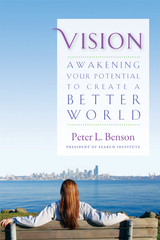 Vision: Awakening Your Potential to Create a Better World
Peter Benson
Templeton Press, 2009 According to Peter L. Benson, the capacity to generate vision is among life's most beautiful and unheralded gifts. To him, a vision is more than just a goal, more than just a dream of what could be—it is a summons, a pull towards the future, an inspired call to make real that which should be. In Vision: Awakening Your Potential to Create a Better World, Benson takes readers on an uplifting exploration of this powerful concept. Starting with examples of great visionary moments in history, such as the drafting of the Declaration of Independence and Martin Luther King Jr.'s "I Have a Dream" speech, he crafts a working definition of "vision" and what it means to be visionary. He proceeds by profiling the personalities behind some of the great visions that have shaped our world, covering a diverse set of individuals ranging from presidents who pulled the country through tough times to children whose efforts helped put an end to child labor. Throughout, Benson shares personal insights on his own "big picture" vision and offers instructive questions and exercises that will help reflective readers craft their own visions.
This little book of practical inspiration makes it clear that vision is a necessary ingredient of meaningful change. Readers will appreciate Benson's warm and personal approach as well as his interactive approach, which will help anyone come to understand his or her own social and spiritual potential. Vision will be useful to those seeking to find their place and purpose in the world, whether they are new graduates, professionals, parents, or retirees.
 Vision Impairment: Science, Art and Lived Experience
Michael Crossland
University College London, 2024 Breathing life into the science of vision, the book illuminates scientific concepts by intertwining them with the personal stories of those affected by sight loss.
What is it like to go blind? Three hundred and fifty million people around the world live with severe vision impairment, ranging from those who can see a couple of letters on a sight chart to those who perceive no light at all. Vision Impairment introduces the readers to some of them, including artists, poets, scientists, architects, politicians, broadcasters, and musicians. Through their stories, this book discusses life with vision impairment–from childhood and education to dating, employment, and aging–as well as the portrayal of blind people in literature and film, the use of technology by people with vision impairment, and the psychological effects of losing vision.
Based on Michael Crossland’s extensive work in children’s and adults’ low vision clinics, and his twenty years of research into vision impairment, the book blends individual stories, key research findings, and the most recent scientific discoveries to present an informative yet optimistic overview of living with sight loss.
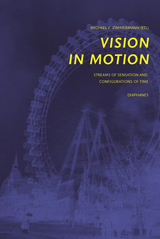 Vision in Motion: Streams of Sensation and Configurations of Time
Edited by Michael F. Zimmermann
Diaphanes, 2015 Vision is not just a simple recognition of what passes through our field of sight, the reflection and observation of light and shape. Even before Freud posited dreams as a way of “seeing” even as we sleep, the writings of philosophers, artists, and scientists from Goethe to Cézanne have argued that to understand vision as a mere mirroring of the outside world is to overlook a more important cognitive act of seeing that is dependent on time.
Bringing together a renowned international group of contributors, Vision in Motion explores one of the most vexing problems in the study of vision and cognition: To make sense of the sensations we experience when we see something, we must configure many moments into a synchronous image. This volume offers a critical reexamination of seeing that restores a concept of “vision in motion” that avoids reducing the sensations we experience to narrative chronological sequencing. The contributors draw on Hume, Bergson, and Deleuze, among others, to establish a nuanced idea of how we perceive.
Vision of a Storm Cloud
William Olsen
Northwestern University Press, 1996 William Olsen's newest work is the harbinger of a new wave of American poetry. His poems are a rich, dense, and polished example of the voice of a strong new poet.
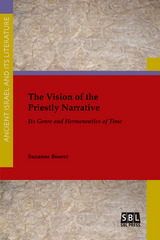 The Vision of the Priestly Narrative: Its Genre and Hermeneutics of Time
Suzanne Boorer
SBL Press, 2016 A fresh look at the Priestly narrative that places less weight on linguistic criteria alone in favor of narrative coherence
Boorer explores the theology of an originally independent Priestly narrative (Pg), extending through Genesis–Numbers, as a whole. In this book she describes the structure of the Priestly narrative, in particular its coherent sequential and parallel patterns. Boorer argues that at every point in the narrative’s sequential and parallel structure, it reshapes past traditions, synthesizing these with contemporary and unique elements into future visions, in a way that is akin to the timelessness of liturgical texts. The book sheds new light on what this material might have sought to accomplish as a whole, and how it might have functioned for, its original audience.
- Solid arguments based on genre and themes, with regard to a once separate Priestly narrative (Pg) that concludes in Numbers 27*
- Thorough discussion of the overall interpretation of the Priestly narrative (Pg), by bringing together consideration of its structure and genre
- Clear illustration of how understanding the genre of the material and its hermeneutics of time is vital for interpreting Pg as a whole
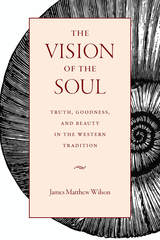 The Vision of the Soul
James Matthew Wilson
Catholic University of America Press, 2017 Ours is an age full of desires but impoverished in its understanding of where those desires lead—an age that claims mastery over the world but also claims to find the world as a whole absurd or unintelligible. In The Vision of the Soul, James Matthew Wilson seeks to conserve the great insights of the western tradition by giving us a new account of them responsive to modern discontents. The western— or Christian Platonist—tradition, he argues, tells us that man is an intellectual animal, born to pursue the good, to know the true, and to contemplate all things in beauty. Wilson begins by reconceiving the intellectual conservatism born of Edmund Burke’s jeremiad against the French Revolution as an effort to preserve the West’s vision of man and the cosmos as ordered by and to beauty. After defining the achievement of that vision and its tradition, Wilson offers an extended study of the nature of beauty and the role of the fine arts in shaping a culture but above all in opening the human intellect to the perception of the form of reality. Through close studies of Theodor W. Adorno and Jacques Maritain, he recovers the classical vision of beauty as a revelation of truth and being. Finally, he revisits the ancient distinction between reason and story-telling, between mythos and logos, in order to rejoin the two.
Story-telling is foundational to the forms of the fine arts, but it is no less foundational to human reason. Human life in turn constitutes a specific kind of form—a story form. The ancient conception of human life as a pilgrimage to beauty itself is one that we can fully embrace only if we see the essential correlation between reason and story and the essential convertibility of truth, goodness and beauty in beauty. By turns a study in fundamental ontology, aesthetics, and political philosophy, Wilson’s book invites its readers to a renewal of the West’s intellectual tradition.
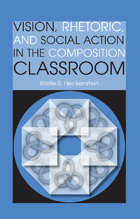 Vision, Rhetoric, and Social Action in the Composition Classroom
Kristie S. Fleckenstein
Southern Illinois University Press, 2009 In this innovative volume, Kristie S. Fleckenstein explores how the intersection of vision, rhetoric, and writing pedagogy in the classroom can help students become compassionate citizens who participate in the world as they become more critically aware of the world. Fleckenstein argues that all social action—behavior designed to increase human dignity, value, and quality of life—depends on a person’s repertoire of visual and rhetorical habits. To develop this repertoire in students, the author advocates the incorporation of visual habits—or ways of seeing—into a language-based pedagogical approach in the writing classroom. According to Fleckenstein, interweaving the visual and rhetorical in composition pedagogy enables students to more readily perceive the need for change, while arming them with the abilities and desire to enact it. The author addresses social action from the perspective of three visual habits: spectacle, which fosters disengagement; animation, or fusing body with meaning; and antinomy, which invites the invention of new realities. Fleckenstein then examines the ways in which particular visual habits interact with rhetorical habits and with classroom methods, resulting in the emergence of various forms of social action. To enhance the understanding of the concepts she discusses, the author represents the intertwining relationships of vision, rhetoric, and writing pedagogy graphically as what she calls symbiotic knots. In tracing the modes of social action privileged by a visual habit and a teacher’s pedagogical choices, Fleckenstein attends particularly to the experiences of students who have been traditionally barred from participation in the public sphere because of gender, race, or class. The book culminates in a call for visually and rhetorically robust writing pedagogies. In Vision, Rhetoric, and Social Action in the Composition Classroom, Fleckenstein combines classic methods of rhetorical teaching with fresh perspectives to provide a unique guide for initiating important improvements in teaching social action. The result is a remarkable volume that empowers teachers to best inspire students to take part in their world at that most crucial moment when they are discovering it.
Vision, Science and Literature, 1870-1920: Ocular Horizons
Martin Willis
University of Pittsburgh Press, 2011 Winner of the British Society for Literature and Science Annual Prize, 2011
Winner of the Cultural Studies in English Prize, 2012
This book explores the role of vision and the culture of observation in Victorian and modernist ways of seeing. Willis charts the characterization of vision through four organizing principles—small, large, past and future—to survey Victorian conceptions of what vision was. He then explores how this Victorian vision influenced twentieth-century ways of seeing, when anxieties over visual "truth" became entwined with modernist rejections of objectivity.
The Visionary Betrayed: Aesthetic Discontinuity in Henry James’s The American Scene
David L. Furth
Harvard University Press, 1979 David Furth identifies the significance of The American Scene in James’s artistic career and offers a penetrating analysis of the work in terms of the difficulties that arose in the course of its composition. Centering on the conflict between expectation and observation, between the provincial past and the transformed present, this broadly informed study provides a fresh and stimulating view of James’s last (and finally unconcluded) effort to state the meaning of America.
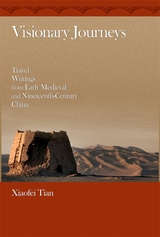 Visionary Journeys: Travel Writings from Early Medieval and Nineteenth-Century China
Xiaofei Tian
Harvard University Press, 2011 This book explores the parallel and yet profoundly different ways of seeing the outside world and engaging with the foreign at two important moments of dislocation in Chinese history, namely, the early medieval period commonly known as the Northern and Southern Dynasties (317–589 CE), and the nineteenth century. Xiaofei Tian juxtaposes literary, historical, and religious materials from these two periods in comparative study, bringing them together in their unprecedentedly large-scale interactions, and their intense fascination, with foreign cultures.
By examining various cultural forms of representation from the two periods, Tian attempts to sort out modes of seeing the world that inform these writings. These modes, Tian argues, were established in early medieval times and resurfaced, in permutations and metamorphoses, in nineteenth-century writings on encountering the Other. This book is for readers who are interested not only in early medieval or nineteenth-century China but also in issues of representation, travel, visualization, and modernity.
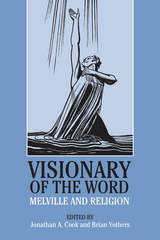 Visionary of the Word: Melville and Religion
Edited by Jonathan A. Cook and Brian Yothers
Northwestern University Press, 2017 Visionary of the Word brings together the latest scholarship on Herman Melville’s treatment of religion across his long career as a writer of fiction and poetry. The volume suggests the broad range of Melville’s religious concerns, including his engagement with the denominational divisions of American Christianity, his dialogue with transatlantic currents in nineteenth-century religious thought, his consideration of theological and philosophical questions related to the problem of evil and determinism versus free will, and his representation of the global contact among differing faiths and cultures. These essays constitute a capacious response to the many avenues through which Melville interacted with religious faith, doubt, and secularization throughout his career, advancing our understanding of Melville as a visionary interpreter of religious experience who remains resonant in our own religiously complex era.
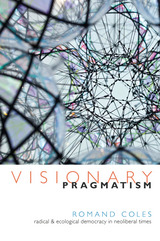 Visionary Pragmatism: Radical and Ecological Democracy in Neoliberal Times
Romand Coles
Duke University Press, 2016 As neoliberal capitalism destroys democracy, commonwealth, and planetary ecology, the need for radically rethinking and generating transformative responses to these catastrophes is greater than ever. Given that, Romand Coles presents an invigorating new mode of scholarship and political practice he calls "visionary pragmatism." Coles explores the profound interrelationships among everyday micropractices of grassroots politics and pedagogy, institutional transformation, and political protest through polyfocal lenses of political and social theory, neuroscience research, complex systems theory, and narratives of his cutting-edge action research. Visionary Pragmatism offers a theory of revolutionary cooptation that, in part, selectively employs practices and strategies of the dominant order to radically alter the coordinates of power and possibility. Underscoring the potential, vitality, and power of emerging democratic practices to change the world, Visionary Pragmatism's simultaneous theoretical rigor and grounding in actual political and ecological practices provokes and inspires new ways of cocreating knowledge and action in dark times.
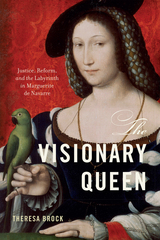 The Visionary Queen: Justice, Reform, and the Labyrinth in Marguerite de Navarre
Theresa Brock
University of Delaware Press, 2024 The Visionary Queen affirms Marguerite de Navarre’s status not only as a political figure, author, or proponent of nonschismatic reform but also as a visionary. In her life and writings, the queen of Navarre dissected the injustices that her society and its institutions perpetuated against women. We also see evidence that she used her literary texts, especially the Heptaméron, as an exploratory space in which to generate a creative vision for institutional reform. The Heptaméron’s approach to reform emerges from statistical analysis of the text’s seventy-two tales, which reveals new insights into trends within the work, including the different categories of wrongdoing by male, institutional representatives from the Church and aristocracy, as well as the varying responses to injustice that characters in the tales employ as they pursue reform. Throughout its chapters, The Visionary Queen foregrounds the trope of the labyrinth, a potent symbol in early modern Europe that encapsulated both the fallen world and redemption, two themes that underlie Marguerite's project of reform.
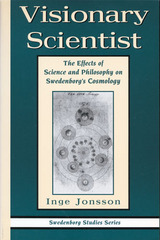 VISIONARY SCIENTIST: THE EFFECTS OF SCIENCE & PHILOSOPHY ON SWEDENBORG'S COSMOLOGY
INGE JONSSON
Swedenborg Foundation Publishers, 1999
Most of the books written on eighteenth-century theologian and mystic Emanuel Swedenborg analyze his theology, detail his remarkable mystical travels, or investigate his influence on philosophers and artists who succeeded him. Distinguished Swedish scholar Inge Jonsson approaches Swedenborg’s oeuvre from the standpoint of the history of ideas and relates it to the intellectual milieu of the time. From the impact of Cartesian philosophy on eighteenth-century thinkers to the effect of Leibniz and his disciples on Swedenborg’s emerging views of science and spirit, Jonsson recreates the debates that electrified the Enlightenment.
Despite Swedenborg’s enduring fame as a mystic, his early reputation was firmly based on scientific treatises that he wrote during years when new theories of life were exploding through microscopic and anatomical research. In the first part of this study, Jonsson examines Swedenborg’s philosophy of nature, his cosmology, and physiological and psychological theories and shows how Swedenborg’s unique spiritual perspective was rooted in his early scientific endeavors and in agreement with contemporary science.
However, after a spiritual crisis in the years 1744-1745, detailed in the remarkable document The Journal of Dreams, Swedenborg turned his intellectual energies and scientific precision toward biblical exegesis and examination of spiritual nature. In the second half of this work, Jonsson investigates Swedenborg’s detailed and sensitive rendering of spiritual life in such works as Arcana Coelestia, Heaven and Hell, and Conjugial Love.
Vision/Re-Vision: Adapting Contemporary American Fiction To Film
Barbara Tepa Lupack
University of Wisconsin Press, 1996 The essays in Vision/Re-Vision analyze in detail ten popular and important films adapted from contemporary American fiction by women, addressing the ways in which the writers' latent or overt feminist messages are reinterpreted by the filmmakers who bring them to the screen, demonstrating that there is much to praise as well as much to fault in the adaptations and that the process of adaptation itself is instructive rather than destructive, since it enriches understanding about both media.
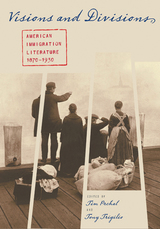 Visions and Divisions: American Immigration Literature, 1870-1930
Prchal, Timothy
Rutgers University Press, 2008 For many years, America cherished its image as a Golden Door for the world’s oppressed. But during the Progressive Era, mounting racial hostility along with new national legislation that imposed strict restrictions on immigration began to show the nation in a different light. The literature of this period reflects the controversy and uncertainty that abounded regarding the meaning of “American.” Literary output participated in debates about restriction, assimilation, and whether the idea of the “Melting Pot” was worth preserving. Writers advocated—and also challenged—what emerged as a radical new way of understanding the nation’s ethnic and racial identity: cultural pluralism.
From these debates came such novels as Willa Cather’s My Ántonia and Upton Sinclair’s The Jungle. Henry James, Charlotte Perkins Gilman, and Carl Sandburg added to the diversity of viewpoints of native born Americans while equally divergent immigrant perspectives were represented by writers such as Anzia Yezierska, Kahlil Gibran, and Claude McKay. This anthology presents the writing of these authors, among others less well known, to show the many ways literature participated in shaping the face of immigration. The volume also includes an introduction, annotations, a timeline, and historical documents that contextualize the literature.
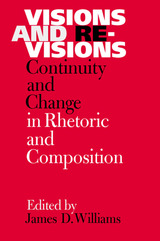 Visions and Revisions: Continuity and Change in Rhetoric and Composition
Edited by James D. Williams
Southern Illinois University Press, 2002 A history of contemporary rhetoric, Visions and Revisions: Continuity and Change in Rhetoric and Composition examines the discipline’s emergence and development from the rise of new rhetoric in the late 1960s through the present. Editor James D. Williams has assembled nine essays from leading scholars to trace the origins of new rhetoric and examine current applications of genre studies, the rhetoric of science, the rhetoric of information, and the influence of liberal democracy on rhetoric in society. Given the field’s diversity, a historical sketch cannot adopt a single perspective. Part one of Visions and Revisions therefore offers the detailed reminiscences of four pioneers in new rhetoric, while the essays in part two reflect on a variety of issues that have influenced (and continue to influence) current theory and practice. In light of the recent shift in focus of scholarly investigation toward theory, Williams’s collection contextualizes the underlying tension between theory and practice while stressing instruction of students as the most important dimension of rhetoric and composition today. Together, these chapters from some of the most influential scholars in the field provide a range of perspectives on the state of rhetoric and composition and illuminate the discipline’s development over the course of the last forty years.
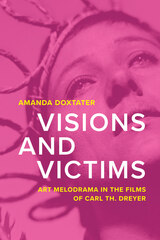 Visions and Victims: Art Melodrama in the Films of Carl Th. Dreyer
Amanda Doxtater
University of Wisconsin Press, 2024 Danish film director Carl Th. Dreyer, one of the twentieth century’s most famous filmmakers, is best known for his masterpiece, The Passion of Joan of Arc, and his midcentury classics, Day of Wrath and Ordet. Both viewers and scholars largely leave his early work, for Nordisk Film, on the shelf, dismissing it as immature melodramatic fare produced for a company known for superficial, popular entertainment. In the received historiography, Dreyer broke with Nordisk in the pursuit of developing his film as a high art, eventually succeeding on the world stage as an auteur and eschewing melodrama in favor of austere art film.
Amanda Doxtater offers a necessary corrective to this narrative of his bifurcated career. Close readings of Dreyer’s Nordisk films alongside his mature work reveal a stylistic throughline Doxtater terms “art melodrama,” a form combining the ambiguity, stylization, and consciousness of art cinema with the heightened emotional expressivity and dramatic embodiments characteristic of melodrama. She argues that Dreyer’s major artistic concerns known from his later work—pathos, authenticity, the embodiment of psychological duress, and so on—find their first expression in his Nordisk melodramas, complicating our understanding not only of his later films but also of his early works, and even our understanding of the melodramatic mode in general. Indeed, extending well beyond the career of a singular director, this book challenges assumptions about the relationship between “low-brow” melodrama and “high-brow” art cinema.
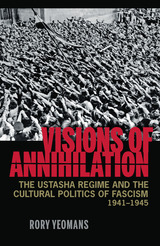 Visions of Annihilation: The Ustasha Regime and the Cultural Politics of Fascism, 1941–1945
Rory Yeomans
University of Pittsburgh Press, 2013
The fascist Ustasha regime and its militias carried out a ruthless campaign of ethnic cleansing that killed an estimated half million Serbs, Jews, and Gypsies, and ended only with the defeat of the Axis powers in World War II.
In Visions of Annihilation, Rory Yeomans analyzes the Ustasha movement’s use of culture to appeal to radical nationalist sentiments and legitimize its genocidal policies. He shows how the movement attempted to mobilize poets, novelists, filmmakers, visual artists, and intellectuals as purveyors of propaganda and visionaries of a utopian society. Meanwhile, newspapers, radio, and speeches called for the expulsion, persecution, or elimination of “alien” and “enemy” populations to purify the nation. He describes how the dual concepts of annihilation and national regeneration were disseminated to the wider population and how they were interpreted at the grassroots level.
Yeomans examines the Ustasha movement in the context of other fascist movements in Europe. He cites their similar appeals to idealistic youth, the economically disenfranchised, racial purists, social radicals, and Catholic clericalists. Yeomans further demonstrates how fascism created rituals and practices that mimicked traditional religious faiths and celebrated martyrdom.
Visions of Annihilation chronicles the foundations of the Ustasha movement, its key actors and ideologies, and reveals the unique cultural, historical, and political conditions present in interwar Croatia that led to the rise of fascism and contributed to the cataclysmic events that tore across the continent.
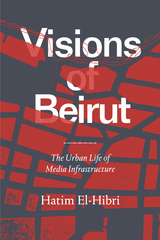 Visions of Beirut: The Urban Life of Media Infrastructure
Hatim El-Hibri
Duke University Press, 2021 In Visions of Beirut Hatim El-Hibri explores how the creation and circulation of images have shaped the urban spaces and cultural imaginaries of Beirut. Drawing on fieldwork and texts ranging from maps, urban plans, and aerial photographs to live television and drone-camera footage, El-Hibri traces how the technologies and media infrastructure that visualize the city are used to consolidate or destabilize regimes of power. Throughout the twentieth century, colonial, economic, and military mapping projects helped produce and govern Beirut's spaces. In the 1990s, the imagery of its post-civil war downtown reconstruction cast Beirut as a site of financial investment in ways that obscured its ongoing crises. During and following the 2006 Israel/Hizbullah war, Hizbullah's use of live television broadcasts of fighting and protests along with its construction of a war memorial museum at a former secret military bunker demonstrate the tension between visualizing space and the practices of concealment. Outlining how Beirut's urban space and public life intertwine with images and infrastructure, El-Hibri interrogates how media embody and exacerbate the region's political fault lines.
 Visions of Cell Biology: Reflections Inspired by Cowdry's "General Cytology"
Edited by Karl S. Matlin, Jane Maienschein, and Manfred D. Laubichler
University of Chicago Press, 2017 Although modern cell biology is often considered to have arisen following World War II in tandem with certain technological and methodological advances—in particular, the electron microscope and cell fractionation—its origins actually date to the 1830s and the development of cytology, the scientific study of cells. By 1924, with the publication of Edmund Vincent Cowdry’s General Cytology, the discipline had stretched beyond the bounds of purely microscopic observation to include the chemical, physical, and genetic analysis of cells. Inspired by Cowdry’s classic, watershed work, this book collects contributions from cell biologists, historians, and philosophers of science to explore the history and current status of cell biology.
Despite extraordinary advances in describing both the structure and function of cells, cell biology tends to be overshadowed by molecular biology, a field that developed contemporaneously. This book remedies that unjust disparity through an investigation of cell biology’s evolution and its role in pushing forward the boundaries of biological understanding. Contributors show that modern concepts of cell organization, mechanistic explanations, epigenetics, molecular thinking, and even computational approaches all can be placed on the continuum of cell studies from cytology to cell biology and beyond. The first book in the series Convening Science: Discovery at the Marine Biological Laboratory, Visions of Cell Biology sheds new light on a century of cellular discovery.
 Visions of Community in the Pre-Modern World
Nicholas Howe
University of Notre Dame Press, 2002 "This is a stunning collection . . . elegant, magisterial, and persuasive. Visions of Community in the Pre-Modern World contains new and impeccable scholarship in beautifully written and structured essays." —Roberta Frank, Douglas Tracy Smith Professor of English, Yale University
Visions of Community in the Pre-Modern World contains original essays by five leading scholars in the fields of history, art history, and literature on the ways in which communities were imagined and built between the eleventh and sixteenth centuries. These essays, which function as case studies, range geographically from Europe to Africa, the Near East to regions of Latin America. While acknowledging major factors that affect community—such as religious belief, imperial expansion, and warfare—these studies focus on precise examples and moments in the pre-modern world. The contributors reveal the inherent complexity and variety of communities within pre-modern Europe. They offer a powerful argument against sweeping generalizations about the ways in which humans form themselves into groups, and encourage further scholarly research into the ways in which communities are formed and shaped.
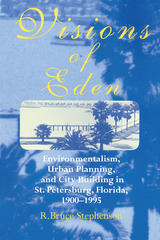 VISIONS OF EDEN: Environmentalism, Urban Planning, and City Building in St. Petersburg, Florida, 1900–1995
R. Bruce Stephenson
Ohio State University Press, 1997 "Stephenson's story of the rise, fall, and resurrections of a good idea takes the reader on a whirlwind tour through planning, political, and public works history. It also contains several messages we should all bear in mind. One is that any city planning should be truly comprehensive and environmentally responsible, considering both what we have built and what we have inherited, and balancing what we want with what we need. Another is that planners and zoning officers must share the same goals. The third is a timely and painful reminder to those of us who frequently lose patience with the way things work, and that is that no one really cares about the future when the present is glittering so brightly." --Environmental History
"This study is the first book-length treatment of St. Petersburg's development and is a major contribution to American urban and urban-planning history." --Choice
Florida enjoys the only subtropical climate in the continental United States. Its burgeoning population and robust tourist economy attest to the state's special allure. Innovative new towns like Miami Lakes and Seaside, along with established communities such as Winter Park and Coral Gables, exemplify Florida's beauty and potential.
St. Petersburg, the largest city in Florida's most urbanized county, epitomizes the best and the worst of the state's city planning history. Enterprise and technology transformed this once struggling backwater into an air-conditioned vision of Eden, but a heavy debt was accumulated in the process. Paradise is under siege: wetlands have been drained, mangroves cleared, sand dunes leveled, bays degraded and filled; water must be imported from inland wells. Although the city now has an innovative growth management system, it was perilously late in coming. In Visions of Eden, R. Bruce Stephenson examines how St. Petersburg learned to control its development.
Since the turn of the century, the opportunity to design a city nestled in a subtropical garden has attracted the nation's preeminent planners to St. Petersburg. The most ambitious plan was developed in 1923 by John Nolen, who believed that an interconnected system of preserves and parks would enhance the city's development and attract tourists for generations. His initiative failed miserably at the polls, however, because it threatened the conflicting notion of paradise held by hundreds of investors, who were profiting from the greatest real estate boom in the nation's history and feared that planning would curtail speculation. As Stephenson points out, a half century would pass until a series of ecological disasters in the 1970s finally compelled city officials to adopt an environmentally sound development plan that reflected Nolen's original vision.
Stephenson carefully explores St. Petersburg's slow awakening to ecological responsibility--to the importance of designing a community that meets both human needs and economic demands. As the debate over the "New Urbanism" moves forward, this book will serve as a useful guide for those who will plan, build, and inhabit the cities of the twenty-first century.
R. Bruce Stephenson is an associate professor and chair of the environmental studies department at Rollins College in Winter Park, Florida.
Visions of Electric Media: Television in the Victorian and Machine Ages
Ivy Roberts
Amsterdam University Press, 2020 Visions of Electric Media is an historical examination into the early history of television, as it was understood during the Victorian and Machine ages. How did the television that we use today develop into a functional technology? What did Victorians expect it to become? How did the 'vision' of television change once viewers could actually see pictures on a screen?
We will journey through the history of 'television': from the first indications of live communications in technology and culture in the late nineteenth century, to the development of electronic televisual systems in the early twentieth century. Along the way, we will investigate the philosophy, folklore, engineering practices, and satires that went into making television a useful medium.
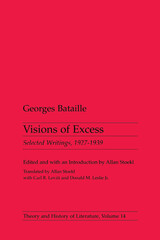 Visions Of Excess: Selected Writings, 1927-1939
Georges Bataille
University of Minnesota Press, 1985 Since the publication of Visions of Excess in 1985, there has been an explosion of interest in the work of Georges Bataille. The French surrealist continues to be important for his groundbreaking focus on the visceral, the erotic, and the relation of society to the primeval. This collection of prewar writings remains the volume in which Batailles’s positions are most clearly, forcefully, and obsessively put forward.This book challenges the notion of a “closed economy” predicated on utility, production, and rational consumption, and develops an alternative theory that takes into account the human tendency to lose, destroy, and waste. This collection is indispensible for an understanding of the future as well as the past of current critical theory.Georges Bataille (1897-1962), a librarian by profession, was founder of the French review Critique. He is the author of several books, including Story of the Eye, The Accused Share, Erotism, and The Absence of Myth.
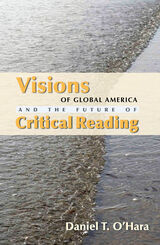 Visions of Global America and the Future of Critical Reading
Daniel T. O’Hara
Ohio State University Press, 2009 The forces of globalization have transformed literary studies in America, and not for the better. The detailed critical reading of artistic texts has been replaced by newly minted catchphrases describing widely divergent snippets and anecdotes—deemed mere documents—regardless of the critic’s expertise in the appropriate languages and cultures. Visions of Global America and the Future of Critical Reading by Daniel T. O’Hara traces the origin of this global approach to Emerson. But it also demonstrates another, tragic tradition of vision from Henry James that counters the Emersonian global imagination with the hard realities of being human. Building on this tradition, on Lacan’s insights into the Real, and on Badiou’s original theory of truth, O’Hara points to how we can, and should, reground literary study in critical reading. In Emerson’s classic essay “Experience” (1844), America appears in and as a symptom of the critic’s self-making that sacrifices the power of love to this visionary project—a literary version of the American self-made man. O’Hara rescues critical reading using James’s late work, especially The Golden Bowl (1904), and builds on this vision with examinations of texts by St. Paul, Emerson, Wallace Stevens, James Purdy, John Cheever, James Baldwin, John Ashbery, and others.
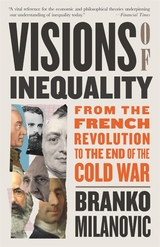 Visions of Inequality: From the French Revolution to the End of the Cold War
Branko Milanovic
Harvard University Press, 2023 A Financial Times Best Book of the Year.
A sweeping and original history of how economists across two centuries have thought about inequality, told through portraits of six key figures.
“How do you see income distribution in your time, and how and why do you expect it to change?” That is the question Branko Milanovic imagines posing to six of history's most influential economists: François Quesnay, Adam Smith, David Ricardo, Karl Marx, Vilfredo Pareto, and Simon Kuznets. Probing their works in the context of their lives, he charts the evolution of thinking about inequality, showing just how much views have varied among ages and societies. Indeed, Milanovic argues, we cannot speak of “inequality” as a general concept: any analysis of it is inextricably linked to a particular time and place.
Visions of Inequality takes us from Quesnay and the physiocrats, for whom social classes were prescribed by law, through the classic nineteenth-century treatises of Smith, Ricardo, and Marx, who saw class as a purely economic category driven by means of production. It shows how Pareto reconceived class as a matter of elites versus the rest of the population, while Kuznets saw inequality arising from the urban-rural divide. And it explains why inequality studies were eclipsed during the Cold War, before their remarkable resurgence as a central preoccupation in economics today.
Meticulously extracting each author’s view of income distribution from their often voluminous writings, Milanovic offers an invaluable genealogy of the discourse surrounding inequality. These intellectual portraits are infused not only with a deep understanding of economic theory but also with psychological nuance, reconstructing each thinker’s outlook given what was knowable to them within their historical contexts and methodologies.
 Visions of Inequality: From the French Revolution to the End of the Cold War
Branko Milanovic
Harvard University Press A Financial Times Best Economics Book of the Year
“An essential and insightful analysis of the history of economic inequality urgently relevant today…a groundbreaking work, bound to influence the economics profession and our worldview.” —LSE Review of Books
“A history of the changing ways economists have broached the subject [of inequality] since the French Revolution…[Milanovic] describes how Western economists were in thrall to an unholy combination of extremely simplistic assumptions and extremely complex mathematical models.” —New York Times
“A timely book that brings the weight of the past to bear on one of the most pressing issues of our time…Milanovic is a clear and direct writer, unafraid of making strong judgements and with an idiosyncratic eye for detail. That makes for original, and sometimes amusingly wry, revelations.” —Literary Review
“How do you see income distribution in your time, and how and why do you expect it to change?” Branko Milanovic imagines posing this question to six of history’s most influential economists. Probing the works of these key thinkers in the context of their lives, Milanovic charts the evolution of the concept of inequality across the centuries. We cannot speak of inequality in general, he argues: any analysis of it is inextricably linked to a particular time and place.
Visions of Inequality takes us from François Quesnay, for whom social classes were prescribed by law, through Adam Smith, David Ricardo, and Karl Marx, who saw class as a purely economic category determined by one’s relation to the means of production. Later, Vilfredo Pareto reconceived class in terms of elites versus the rest, while Simon Kuznets saw inequality arising from the urban-rural divide. Milanovic further explores why inequality receded from scholarship during the Cold War, before gaining renewed attention in economics today.
An invaluable intellectual genealogy, Visions of Inequality brings nuanced insight to a hotly contested idea.
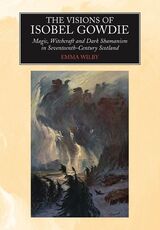 The Visions of Isobel Gowdie: Magic, Witchcraft and Dark Shamanism in Seventeenth-Century Scotland
Emma Wilby
Sussex Academic Press, 2022 The witchcraft confessions given by Isobel Gowdie (in Auldearn, Scotland in 1662)are widely celebrated as the most extraordinary on record in Britain. Their descriptive power, vivid imagery, and contentious subject matter have attracted considerable interest on both academic and popular levels. This book,written by Emma Wilby, author of the critically acclaimed Cunning Folk and Familiar Spirits, provides the first full-length examination of the confessions and the life and character of the woman behind them. The author's discovery of the original trial records, deemed lost for nearly 200 years, provides a starting point for an interdisciplinary endeavor to separate Isobel's voice from that of her interrogators, to identify the beliefs and experiences that informed her testimony, and to analyze why her confessions differ so markedly from those of other witchcraft suspects from the period. In the course of these enquiries, the author develops wider hypotheses relevant to the study of early modern witchcraft as a whole, bringing together for the first time recent research into Amazonian 'dark' shamanism, false-memory generation, and mutual-dream experience, along with literature on marriage-covenant mysticism and protection-charm traditions. Emma Wilby concludes that close analysis of Isobel's confessions supports the still-controversial hypothesis that in 17th-Century Scotland, as in other parts of Europe in this period, popular spirituality was shaped through a deep interaction between church teachings and shamanistic traditions of pre-Christian origin. She also extends this thesis beyond its normal association with beneficent magic and overtly folkloric themes to speculate that some of Europe's more malevolent and demonological witch-narratives may also have emerged out of visionary rites underpinned by cogent shamanistic rationales.
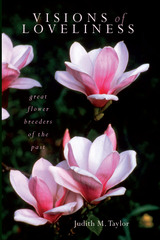 Visions of Loveliness: Great Flower Breeders of the Past
Judith M. Taylor
Ohio University Press, 2014 Gardeners of today take for granted the many varieties of geraniums, narcissi, marigolds, roses, and other beloved flowers for their gardens. Few give any thought at all to how this incredible abundance came to be or to the people who spent a good part of their lives creating it. These breeders once had prosperous businesses and were important figures in their communities but are only memories now. They also could be cranky and quirky.
In the eighteenth and nineteenth centuries, new and exotic species were arriving in Europe and the United States from all over the world, and these plants often captured the imaginations of the unlikeliest of men, from aristocratic collectors to gruff gardeners who hardly thought of themselves as artists. But whatever their backgrounds, they all shared a quality of mind that led them to ask “What if?” and to use their imagination and skills to answer that question themselves. The newest rose from China was small and light pink, but what if it were larger and came in more colors? Lilac was very nice in its way, but what if its blossoms were double and frilly?
While there are many books about plant collectors and explorers, there are none about plant breeders. Drawing from libraries, archives, and the recollections of family members, horticultural historian Judith M. Taylor traces the lives of prominent cultivators in the context of the scientific discoveries and changing tastes of their times. Visions of Loveliness is international in scope, profiling plant breeders from many countries—for example, China and the former East Germany—whose work may be unknown to the Anglophone reader.
In addition to chronicling the lives of breeders, the author also includes chapters on the history behind the plants by genus, from shrubs and flowering trees to herbaceous plants.
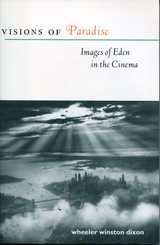 Visions of Paradise: Images of Eden in the Cinema
Dixon, Wheeler Winston
Rutgers University Press, 2006 Depictions of sex, violence, and crime abound in many of today's movies, sometimes making it seem that the idyllic life has vanished-even from our imaginations. But as shown in this unique book, paradise has not always been lost. For many years, depictions of heaven, earthly paradises, and utopias were common in popular films. Illustrated throughout with intriguing, rare stills and organized to provide historical context, Visions of Paradise surveys a huge array of films that have offered us glimpses of life free from strife, devoid of pain and privation, and full of harmony. In films such as Moana, White Shadows in the South Seas, The Green Pastures, Heaven Can Wait, The Enchanted Forest, The Bishop's Wife, Carousel, Bikini Beach, and Elvira Madigan, characters and the audience partake in a vision of personal freedom and safety-a zone of privilege and protection that transcends the demands of daily existence. Many of the films discussed are from the 1960s-perhaps the most edenic decade in contemporary cinema, when everything seemed possible and radical change was taken for granted. As Dixon makes clear, however, these films have not disappeared with the dreams of a generation; they continue to resonate today, offering a tonic to the darker visions that have replaced them.
Visions of Persia: Mapping the Travels of Adam Olearius
Elio Brancaforte
Harvard University Press, 2003 This work examines the travel account of a German baroque author who journeyed in search of silk from Northern Germany, through Muscovy, to the court of Shah Safi in Isfahan.
Adam Olearius introduced Persian literature, history, and arts to the German-speaking public; his frank appraisal of Persian customs foreshadows the enlightened spirit of the eighteenth century (influencing Montesquieu’s Persian Letters as well as Goethe’s West-Eastern Divan) and prepares the way for German Romanticism’s infatuation with Persian poetry.
Elio Brancaforte focuses on the visual and discursive nexus uniting Olearius’s text with the numerous engravings that supplement the book. The emphasis falls on contextualized readings of Olearius’s decorative frontispieces and his new and improved map of Persia and the Caspian Sea, as expressions of early modern subjectivity.
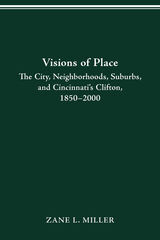 VISIONS OF PLACE: CITY, NEIGHBORHOODS, SUBURBS, AND CINCINNATI'S CLIFTON, 1850–2000
ZANE L. MILLER
Ohio State University Press, 2001 Almost every American city has or had neighborhoods like Clifton, which developed in the mid-nineteenth century as a silk-stocking suburb with a more diverse population than most observers noticed. Incorporated by Cincinnati in the late nineteenth century, Clifton had a reputation as a better-than-average place in which to live, a view that persisted until the end of the twentieth century. In Visions of Place, Zane L. Miller treats ideas about the nature of cities—including their neighborhoods and their suburbs—as the dynamic factors in Clifton’s experience and examines the changes in Clifton's social, physical, civic, and political structure resulting from these transforming notions. These structural shifts involved a variety of familiar nineteenth- and twentieth-century urban phenomena, including not only the switch from suburban village to city neighborhood and the salience of interracial fears but also the rise of formal city planning and conflicts among Protestants, Catholics, and Jews over the future of Clifton's religious and ethnic ambiance. Miller concludes with a policy analysis of current and future prospects for neighborhoods like Clifton and the cities and metropolitan areas of which they form a part.
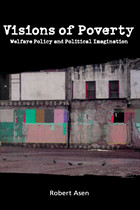 Visions of Poverty: Welfare Policy and Political Imagination
Robert Asen
Michigan State University Press, 2002 Images of poverty shape the debate surrounding it. In 1996, then President Bill Clinton signed welfare reform legislation repealing the principal federal program providing monetary assistance to poor families, Aid to Families with Dependent Children (AFDC). With the president's signature this originally non-controversial program became the only title of the 1935 Social Security Act to be repealed. The legislation culminated a retrenchment era in welfare policy beginning in the early 1980s. To understand completely the welfare policy debates of the last half of the 20th Century, the various images of poor people that were present must be considered. Visions of Poverty explores these images and the policy debates of the retrenchment era, recounting the ways in which images of the poor appeared in these debates, relaying shifts in images that took place over time, and revealing how images functioned in policy debates to advantage some positions and disadvantage others. Looking to the future, Visions of Poverty demonstrates that any future policy agenda must first come to terms with the vivid, disabling images of the poor that continue to circulate. In debating future reforms, participants-whose ranks should include potential recipients-ought to imagine poor people anew. This ground breaking study in policymaking and cultural imagination will be of particular interest to scholars in rhetorical studies, political science, history, and public policy.
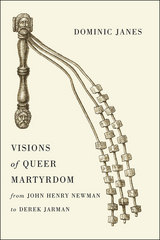 Visions of Queer Martyrdom from John Henry Newman to Derek Jarman
Dominic Janes
University of Chicago Press, 2015 With all the heated debates around religion and homosexuality today, it might be hard to see the two as anything but antagonistic. But in this book, Dominic Janes reveals the opposite: Catholic forms of Christianity, he explains, played a key role in the evolution of the culture and visual expression of homosexuality and male same-sex desire in the nineteenth and twentieth centuries. He explores this relationship through the idea of queer martyrdom—closeted queer servitude to Christ—a concept that allowed a certain degree of latitude for the development of same-sex desire.
Janes finds the beginnings of queer martyrdom in the nineteenth-century Church of England and the controversies over Cardinal John Henry Newman’s sexuality. He then considers how liturgical expression of queer desire in the Victorian Eucharist provided inspiration for artists looking to communicate their own feelings of sexual deviance. After looking at Victorian monasteries as queer families, he analyzes how the Biblical story of David and Jonathan could be used to create forms of same-sex partnerships. Finally, he delves into how artists and writers employed ecclesiastical material culture to further queer self-expression, concluding with studies of Oscar Wilde and Derek Jarman that illustrate both the limitations and ongoing significance of Christianity as an inspiration for expressions of homoerotic desire.
Providing historical context to help us reevaluate the current furor over homosexuality in the Church, this fascinating book brings to light the myriad ways that modern churches and openly gay men and women can learn from the wealth of each other’s cultural and spiritual experience.
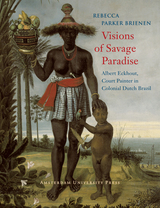 Visions of Savage Paradise: Albert Eckhout, Court Painter in Colonial Dutch Brazil
Rebecca Brienen
Amsterdam University Press, 2007 Visions of Savage Paradise is the first major book-length study of the Dutch artist Albert Eckhout to be published since 1938. This book, which draws extensively on the author’s doctoral dissertation, examines the fascinating works of art produced by Eckhout while he was court painter in Dutch Brazil to the German count Johan Maurits van Nassau-Siegen.
Johan Maurits, who was colonial governor from 1637-1644 of the Dutch West India Company’s Brazilian colony, supported the study and representation of natural history as part of a program to document the different peoples and natural resources present in the colony. As part of this project, Eckhout created life-size paintings of Amerindians, Africans, and peoples of mixed “racial” background for display in Vrijburg, the governor’s palace. He also made still-life paintings and hundreds of chalk sketches and oil studies on paper of the “savage”peoples, plants, and animals of his new Brazilian home.
In this study, the author provides a careful analysis of these works of art, framing them with a discussion of contemporary artistic practices in the Dutch Republic. Nonetheless, the primary focus of this book is the function of these works within their original colonial context. As the author makes clear, the creation, use, and display of the Brazilian paintings and drawings by Albert Eckhout strengthened Johan Maurits’s position as a colonial and cultural leader.
This work will not only be of interest to students and scholars of seventeenth-century Dutch art, but it will also be an important resource for those interested in visual anthropology and the history of the WIC.
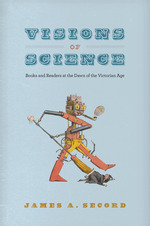 Visions of Science: Books and Readers at the Dawn of the Victorian Age
James A. Secord
University of Chicago Press, 2015 The first half of the nineteenth century witnessed an extraordinary transformation in British political, literary, and intellectual life. There was widespread social unrest, and debates raged regarding education, the lives of the working class, and the new industrial, machine-governed world. At the same time, modern science emerged in Europe in more or less its current form, as new disciplines and revolutionary concepts, including evolution and the vastness of geologic time, began to take shape.
In Visions of Science, James A. Secord offers a new way to capture this unique moment of change. He explores seven key books—among them Charles Babbage’s Reflections on the Decline of Science, Charles Lyell’s Principles ofGeology, Mary Somerville’s Connexion of the Physical Sciences, and Thomas Carlyle’s Sartor Resartus—and shows how literature that reflects on the wider meaning of science can be revelatory when granted the kind of close reading usually reserved for fiction and poetry. These books considered the meanings of science and its place in modern life, looking to the future, coordinating and connecting the sciences, and forging knowledge that would be appropriate for the new age. Their aim was often philosophical, but Secord shows it was just as often imaginative, projective, and practical: to suggest not only how to think about the natural world but also to indicate modes of action and potential consequences in an era of unparalleled change.
Visions of Science opens our eyes to how genteel ladies, working men, and the literary elite responded to these remarkable works. It reveals the importance of understanding the physical qualities of books and the key role of printers and publishers, from factories pouring out cheap compendia to fashionable publishing houses in London’s West End. Secord’s vivid account takes us to the heart of an information revolution that was to have profound consequences for the making of the modern world.
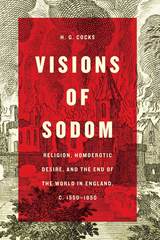 Visions of Sodom: Religion, Homoerotic Desire, and the End of the World in England, c. 1550-1850
H. G. Cocks
University of Chicago Press, 2017 The book of Genesis records the fiery fate of Sodom and Gomorrah—a storm of fire and brimstone was sent from heaven and, for the wickedness of the people, God destroyed the cities “and all the plains, and all the inhabitants of the cities, and that which grew upon the ground.” According to many Protestant theologians and commentators, one of the Sodomites’ many crimes was homoerotic excess.
In Visions of Sodom, H. G. Cocks examines the many different ways in which the story of Sodom’s destruction provided a template for understanding homoerotic desire and behaviour in Britain between the Reformation and the nineteenth century. Sodom was not only a marker of sexual sins, but also the epitome of false—usually Catholic—religion, an exemplar of the iniquitous city, a foreshadowing of the world’s fiery end, an epitome of divine and earthly punishment, and an actual place that could be searched for and discovered. Visions of Sodom investigates each of these ways of reading Sodom’s annihilation in the three hundred years after the Reformation. The centrality of scripture to Protestant faith meant that Sodom’s demise provided a powerful origin myth of homoerotic desire and sexual excess, one that persisted across centuries, and retains an apocalyptic echo in the religious fundamentalism of our own time.
The Visions of Sor María de Agreda: Writing Knowledge and Power
Clark Colahan
University of Arizona Press, 1994 Sor María de Agreda (1602-65) was a Spanish nun and visionary who is best known as the author of the widely read biography of the Virgin Mary, The Mystical City of God, and as the missionary who "bilocated" to the American Southwest, reportedly appearing to Indians there without ever leaving Spain. Her role as advisor to King Philip IV contributed further to her legend. Clark Colahan now offers the first major study of Sor María's writings, including translations of two previously unpublished works: Face of the Earth and Map of the Spheres and the first half of her Report to Father Manero, in which she reflects on her bilocation.
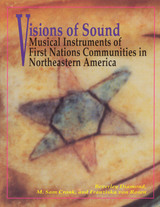 Visions of Sound: Musical Instruments of First Nation Communities in Northeastern America
Beverley Diamond, M. Sam Cronk, and Franziska von Rosen
University of Chicago Press, 1995 The most comprehensive study ever undertaken of the musical instruments of native people in Northeastern North America, Visions of Sound focuses on interpretations by elders and consultants from Iroquois, Wabanati, Innuat, and Anishnabek communities. Beverley Diamond, M. Sam Cronk, and Franziska von Rosen present these instruments in a theoretically innovative setting organized around such abstract themes as complementarity, twinness, and relationship. As sources of metaphor—in both sound and image—instruments are interpreted within a framework that regards meaning as "emergent" and that challenges a number of previous ethnographic descriptions. Finally, the association between sound and "motion"—an association that illuminates the unity of music and dance and the life cycles of individual musical instruments—is explored.
Featuring over two hundred photographs of instruments, dialogues among the coauthors, numerous interviews with individual music makers, and an appended catalogue of over seven hundred instrument descriptions, this is an important book for all ethnomusicologists and students of Native American culture as well as general readers interested in Native American mythology and religious life.
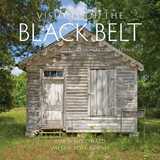 Visions of the Black Belt: A Cultural Survey of the Heart of Alabama
Robin McDonald and Valerie Pope Burnes
University of Alabama Press, 2015 In Visions of the Black Belt, Robin McDonald and Valerie Pope Burnes offer a richly illustrated tour of the Black Belt, the fertile arc that represents the cultural efflorescence of Alabama’s heartland. Like knowledgeable friends, McDonald and Burnes guide readers through the Black Belt’s towns and architecture and introduce the region’s great panoply of citizens, farmers, craftspeople, cooks, writers, and musicians.
A constellation of Black Belt towns arose during Alabama’s territorial decades, communities like Selma, Camden, Eutaw, Tuskegee, Greenville, and many more. Visions of the Black Belt recounts their stories and others, such as Demopolis’s founding by exiles from Napoleon’s France. As an escarpment of clouds scuds across an indigo sky, the ruins of Alabama’s lost capital of Cahaba reveal the secrets of its lost squares. Also on this picturesque tour are the Black Belt’s homes, from artless cabins wreathed in fern to ozymandian manses wrapped by stately columns, such as Kirkwood and Reverie.
Among the emblematic houses of worship lovingly photographed in Visions of the Black Belt is Prairieville’s St. Andrew’s Episcopal Church, noted for its “carpenter gothic” style. Also reflecting the region’s history of faith are poignant graveyards such as Greenville’s Pioneer Cemetery with its homespun memorials of seashell-and-concrete and the elegant marbles clad in ebon lichen of Selma's Live Oak Cemetery.
In photos and text, McDonald and Burnes bring to life the layers of history that shaped the Black Belt’s tastes, sounds, and colors. Their gastronomic discoveries include the picant crawfish of the Faunsdale Bar & Grill and GainesRidge Dining Club’s famed Black Bottom pie. They bring the sounds of the Black Belt to life by presenting a wide range of musicians and musical events, from bona fide blues and soul masters to Eutaw’s Black Belt Roots Festival.
Including two maps and more than 370 full-color photographs, Visions of the Black Belt offers a timeless message of faith, determination, and the rich simplicity of living in harmony with the rhythms of the land and nature.
Published in Cooperation with the Black Belt Treasures Cultural Arts Center, Camden, Alabama
Visions of the East: Orientalism in Film
Bernstein, Matthew
Rutgers University Press, 1997 The Sheik. Pépé le Moko. Casablanca. Aladdin. Some of the most popular and frequently discussed titles in movie history are imbued with orientalism, the politically-charged way in which western artists have represented gender, race, and ethnicity in the cultures of North Africa and Asia. This is the first anthology to address and highlight orientalism in film from pre-cinema fascinations with Egyptian culture through the "Whole New World" of Aladdin. Eleven illuminating and well-illustrated essays utilize the insights of interdisciplinary cultural studies, psychoanalysis, feminism, and genre criticism. Other films discussed includeThe Letter, Caesar and Cleopatra, Lawrence of Arabia, Indochine, and several films of France's cinéma colonial.
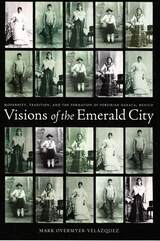 Visions of the Emerald City: Modernity, Tradition, and the Formation of Porfirian Oaxaca, Mexico
Mark Overmyer-Velázquez
Duke University Press, 2006 Visions of the Emerald City is an absorbing historical analysis of how Mexicans living in Oaxaca City experienced “modernity” during the lengthy “Order and Progress” dictatorship of Porfirio Díaz (1876–1911). Renowned as the Emerald City (for its many buildings made of green cantera stone), Oaxaca City was not only the economic, political, and cultural capital of the state of Oaxaca but also a vital commercial hub for all of southern Mexico. As such, it was a showcase for many of Díaz’s modernizing and state-building projects. Drawing on in-depth research in archives in Oaxaca, Mexico City, and the United States, Mark Overmyer-Velázquez describes how Oaxacans, both elites and commoners, crafted and manipulated practices of tradition and modernity to define themselves and their city as integral parts of a modern Mexico. Incorporating a nuanced understanding of visual culture into his analysis, Overmyer-Velázquez shows how ideas of modernity figured in Oaxacans’ ideologies of class, race, gender, sexuality, and religion and how they were expressed in Oaxaca City’s streets, plazas, buildings, newspapers, and public rituals. He pays particular attention to the roles of national and regional elites, the Catholic church, and popular groups—such as Oaxaca City’s madams and prostitutes—in shaping the discourses and practices of modernity. At the same time, he illuminates the dynamic interplay between these groups. Ultimately, this well-illustrated history provides insight into provincial life in pre-Revolutionary Mexico and challenges any easy distinctions between the center and the periphery or modernity and tradition.
Visions of the End in Medieval Spain: Catalogue of Illustrated Beatus Commentaries on the Apocalypse and Study of the Geneva Beatus
John Williams
Amsterdam University Press, 2017 This is the first study to bring together all twenty-nine extant copies of the medieval Commentary on the Apocalypse, which was originally written by Spanish monk Beatus of Liébana. John Williams, a renowned expert on the Commentary, shares a lifetime of study and offers new insights on these strikingly illustrated manuscripts. As he shows, the Commentary responded to differing monastic needs within the shifting context of the Middle Ages. Of special interest is a discussion of the recently discovered Geneva copy: one of only three commentaries to be written outside of the Iberian Peninsula, this manuscript shows both close affinities to the Spanish model and fascinating deviations from it in terms of its script and style of illustrations.
Visions of the Holy: Studies in Biblical Theology and Literature
Marvin A. Sweeney
SBL Press, 2023 Visions of the Holy is a collection of essays by Marvin A. Sweeney on the study of biblical and postbiblical theology and literature. The volume includes previously published and unpublished essays related to the developing field of Jewish biblical theology; historical, comparative, and reception-critical studies; and the reading of texts from the Pentateuch, Former Prophets, Latter Prophets, and Ketuvim. Additional essays examine Asian biblical theology, the understanding of Shabbat, intertextuality in Exodus–Numbers, Samuel, Isaiah, and the Twelve in intertextual perspective, and the democratization of messianism in modern Jewish thought. The volume is an excellent resource for scholars, students, and clergy interested in theological readings of the Hebrew Bible.
 Visions of the Past: The Challenge of Film to Our Idea of History
Robert A. Rosenstone
Harvard University Press, 1998 Can filmed history measure up to written history? What happens to history when it is recorded in images, rather than words? Can images convey ideas and information that lie beyond words? Taking on these timely questions, Robert Rosenstone pioneers a new direction in the relationship between history and film. Rosenstone moves beyond traditional approaches, which examine the history of film as art and industry, or view films as texts reflecting their specific cultural contexts. This essay collection makes a radical venture into the investigation of a new concern: how a visual medium, subject to the conventions of drama and fiction, might be used as a serious vehicle for thinking about our relationship with the past.
Rosenstone looks at history films in a way that forces us to reconceptualize what we mean by "history." He explores the innovative strategies of films made in Africa, Latin America, Germany, and other parts of the world. He journeys into the history of film in a wide range of cultures, and expertly traces the contours of the postmodern historical film. In essays on specific films, including Reds, JFK, and Sans Soleil, he considers such issues as the relationship between fact and film and the documentary as visionary truth.
Theorists have for some time been calling our attention to the epistemological and literary limitations of traditional history. The first sustained defense of film as a way of thinking historically, this book takes us beyond those limitations.
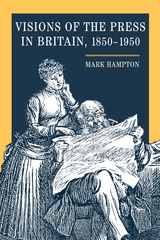 Visions of the Press in Britain, 1850-1950
Mark Hampton
University of Illinois Press, 2004 Historians recognize the cultural centrality of the newspaper press in Britain, yet very little has been published regarding competing historical understandings of the press and its proper role in British society. In Visions of the Press in Britain, 1850-1950, Mark Hampton argues that qualities expected of the contemporary British press--lively writing, speed, impartiality, depth, and the ability to topple corrupt governments by informing readers--are not obvious attributes of journalism but derive from more than a century of debate. He analyzes the various historical conceptions of the British press that helped to create its modern role, and demonstrates that these conceptions were intimately involved in the emergence of mass democracy in the late nineteenth and early twentieth centuries. Hampton surveys a diversity of sources--Parliamentary speeches and commissions, books, pamphlets, periodicals and select private correspondence--in order to identify how governmental elites, the educated public, professional journalists, and industry moguls characterized the political and cultural function of the press. The resulting blend of cultural history and media sociology demonstrates how once optimistic visions of the press have given way to more pessimistic contemporary views about the power of the mass media. With clarity and panache, this book shows that many competing conceptions continued to influence twentieth-century understandings of the press but did not remain satisfactory in new political, cultural, and media environments. Visions of the Press in Britain, 1850-1950 provides a rich tapestry against which to understand the contemporary realities of journalism, democracy, and mass media.
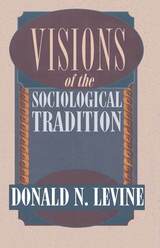 Visions of the Sociological Tradition
Donald N. Levine
University of Chicago Press, 1995 Don Levine moves from the origins of systematic knowledge in ancient Greece to the present day to present an account that is at once a history of the social science enterprise and an introduction to the cornerstone works of Western social thought.
"Visions" has three meanings, each of which corresponds to a part of the book. In Part 1, Levine presents the ways previous sociologists have rendered accounts of their discipline, as a series of narratives—or "life stories"—that build upon each other, generation to generation, a succession of efforts to envisage a coherent past for the sake of a purposive present.
In Part 2, the heart of the book, Levine offers his own narrative, reconnecting centuries of voices into a richly textured dialogue among the varied strands of the sociological tradition: Hellenic, British, French, German, Marxian, Italian, and American. Here, in a tour de force of clarity and conciseness, he tracks the formation of the sociological imagination through a series of conversations across generations. From classic philosophy to pragmatism, Aristotle to W. I. Thomas, Levine maps the web of visionary statements—confrontations and oppositions—from which social science has grown.
At the same time, this is much more than an expert synthesis of social theory. Throughout each stage, Levine demonstrates social knowledge has grown in response to three recurring questions: How shall we live? What makes humans moral creatures? How do we understand the world? He anchors the creation of social knowledge to ethical foundations, and shows for the first time how differences in those foundations disposed the shapers of modern social science—among them, Marshall and Spencer, Comte and Durkheim, Simmel and Weber, Marx and Mosca, Dewey and Park—to proceed in vastly different ways.
In Part 3, Levine offers a vision of the contemporary scene, setting the crisis of fragmentation in social sciences against the fragmentation of experience and community. By reconstructing the history of social thought as a series of fundamentally moral engagements with common themes, he suggests new uses for sociology's intellectual resources: not only as insight about the nature of modernity, but also as a model of mutually respectful communication in an increasingly fractious world.
 Visions of Transformation: Hegemony, Plurinationality, and Revolution in Bolivia
Aaron Augsburger
University of Arizona Press, 2025 On a wave of revolutionary upheaval in the early twenty-first century, Evo Morales was swept into state power as Bolivia’s first Indigenous president with a mandate to radically transform the country. The ensuing period, known simply as “el proceso de cambio” (the process of change), has been a tension-filled and contradictory process involving progressive transformations, ambiguous continuities, and outright revolutionary failures. Importantly, the contradictions have been just as much ideological as they are material. By examining and illuminating the contrasting logics underlying opposing theories of revolutionary change, Visions of Transformation provides an analytical framework through which to understand and interpret the central conflicts and contradictions of Bolivia under Evo Morales and the Movimiento al Socialismo. Based on nearly two years of immersive fieldwork, Visions of Transformation explores the relation between theoretical production and political practice. Through the contrasting perspectives of hegemony and plurinationality, the book analyzes three specific conjunctural moments—a proposed highway through the TIPNIS, a conflict over representation of the highland Indigenous movement organization CONAMAQ, and the struggle for Indigenous autonomy—to shed light on the primary economic, social, political, and theoretical tensions at the heart of Bolivia’s proceso de cambio.
Visions of Vienna: Narrating the City in 1920s and 1930s Cinema
Alexandra Seibel
Amsterdam University Press, 2017 Vienna, with its stunning architecture and unforgettable streetscape, has long provided a backdrop for filmmakers. Visions of Vienna offers a close look at how directors such as Erich von Stroheim, Ernst Lubitsch, and Max Ophüls made use of the city, and how the nostalgic glorification of the Habsburg era can be seen as directly tied to crucial issues of modernity. Films set in Vienna, Alexandra Seibel shows, persistently articulate the experience of displacement due to emigration, changing gender relations and anti-feminism, class distinction, and anti-Semitism, themes that run counter to the ongoing mystification of Vienna as the incarnation of "waltz dreams" and schmaltz.
 Visions of Violence: German Avant-Gardes After Fascism
Richard Langston
Northwestern University Press, 2007 Nazi Germany’s book burnings, its campaign against “degenerate art,” and its persecution of experimental artists pushed the avant garde to the brink of extinction. How the avant-garde came back, finding a new purpose in the wake of the war, is the subject of Visions of Violence.
An extreme faction of aesthetic modernity intent on bulldozing contemporary life, the avant-garde has regularly employed visions of violence in their push for societal and cultural renewal. But in the shadow of unparalleled war and genocide, such aesthetic violence lost its force. This book explores the reconfiguration of the avant-garde in response to the violent transformation of European reality. Citing the emergence of independent avant-garde practitioners in the place of the previous collective, Richard Langston considers six individual exemplars of Germany’s post-fascist avant-garde—works that span the last six decades: painter, writer, and filmmaker Peter Weiss’s appropriation of French surrealism in the fifties; writer Dieter Wellershoff’s coterie of “new realists”; artist Wolf Vostell’s mediation and conflation of the experiences of the Auschwitz trials and the Vietnam War; poet and novelist Dieter Brinkmann’s collages from the seventies; the multimedia displacements of Alexander Kluge; and the performative engagements of dramatists Christoph Schlingensief and Rene Pollesch.
Taking stock of the evolution of Germany’s post-fascist avant-gardes, Langston’s book shows how the movement from Weiss to Pollesch exhibits the problems that both modernity and postmodernity pose for an aesthetic engagement of Germany’s violent past.
|
|
